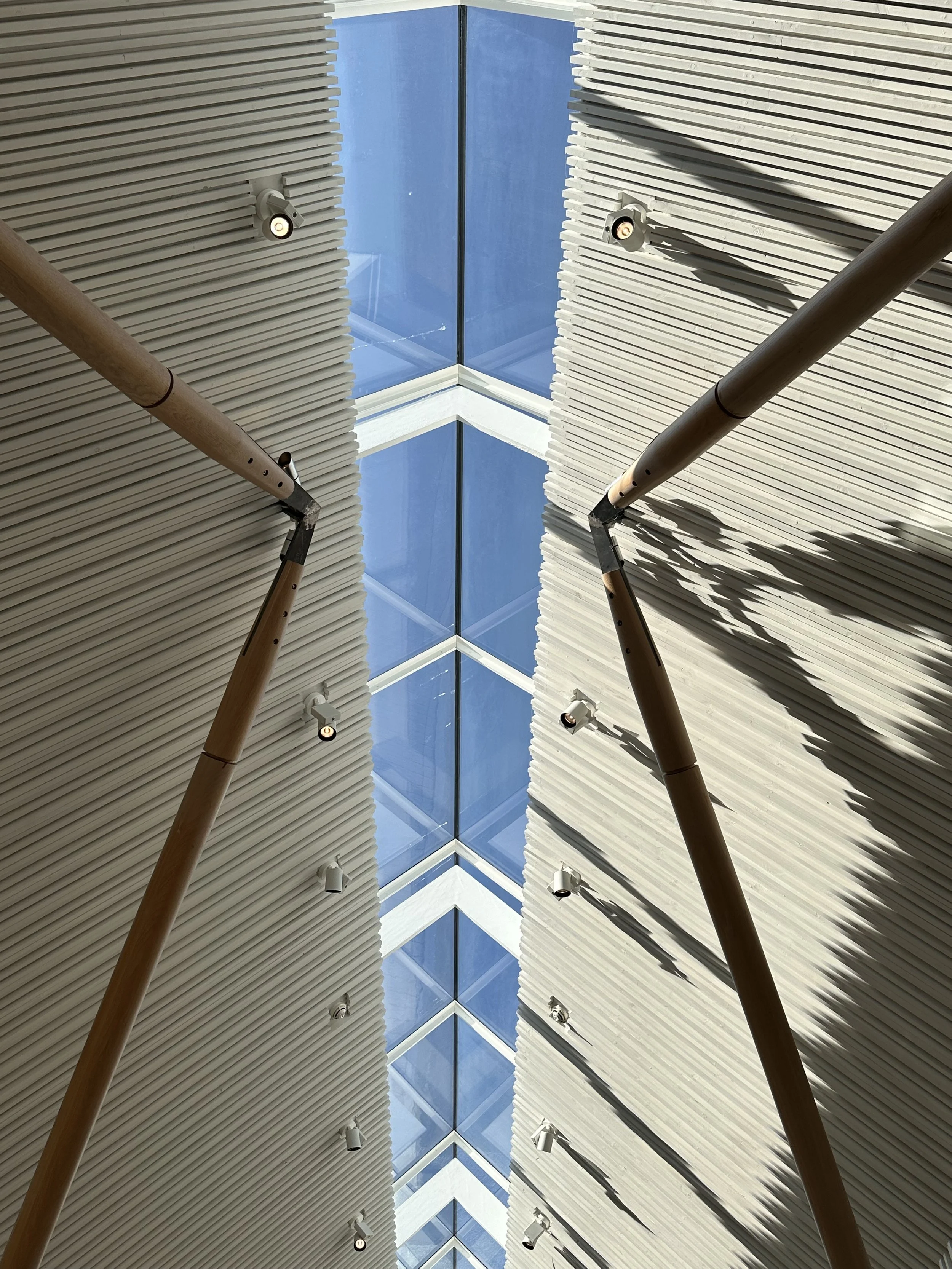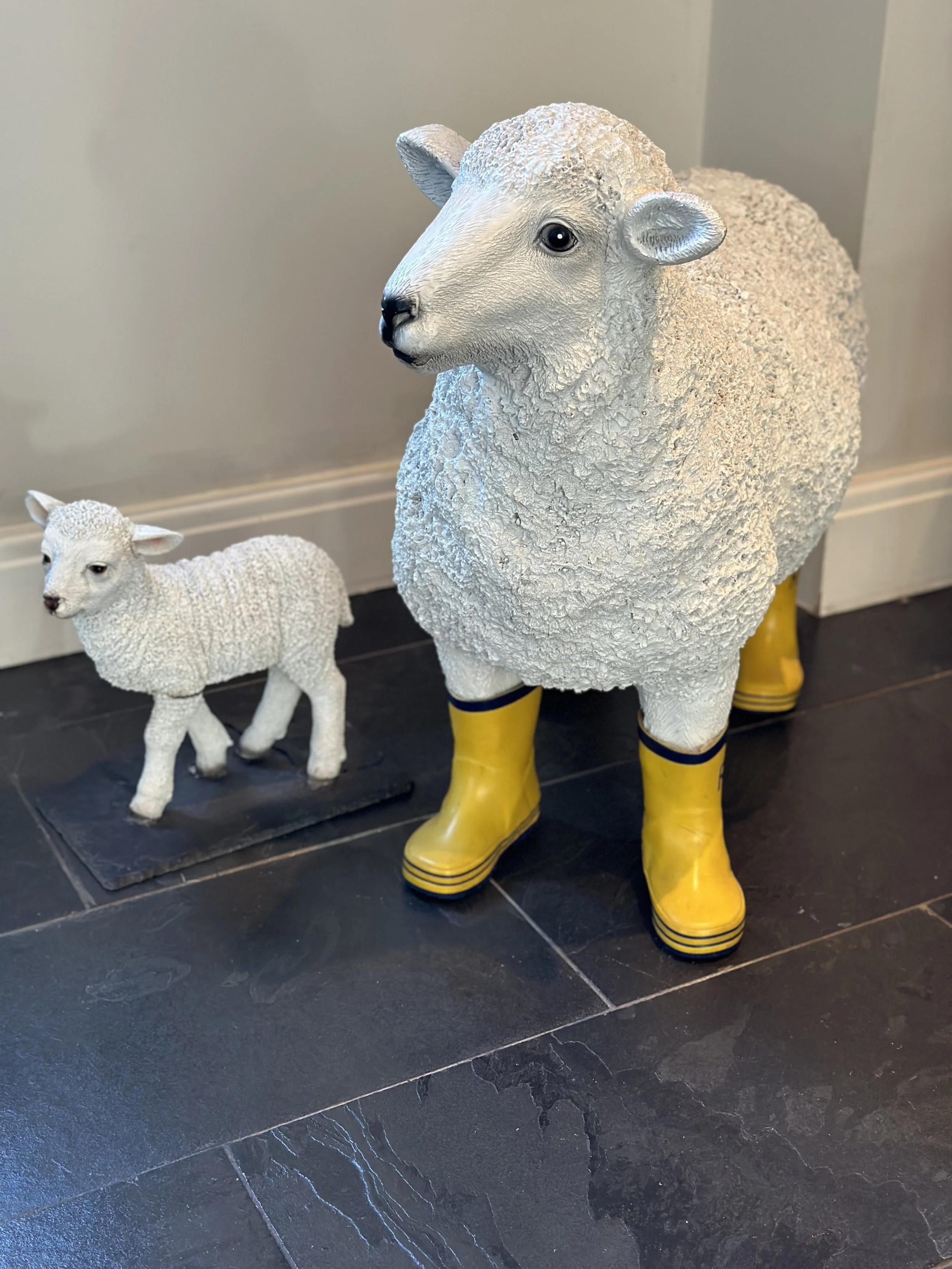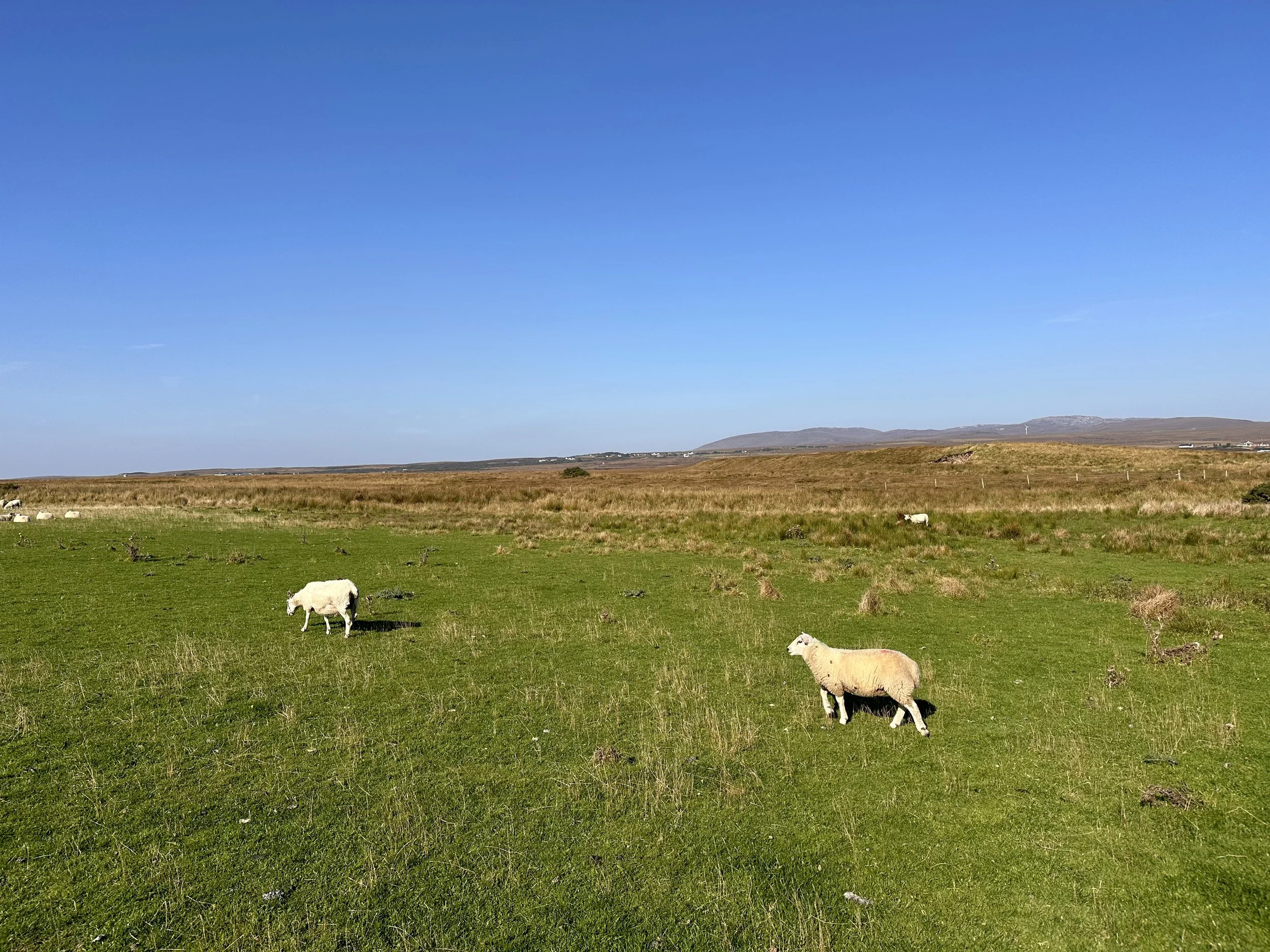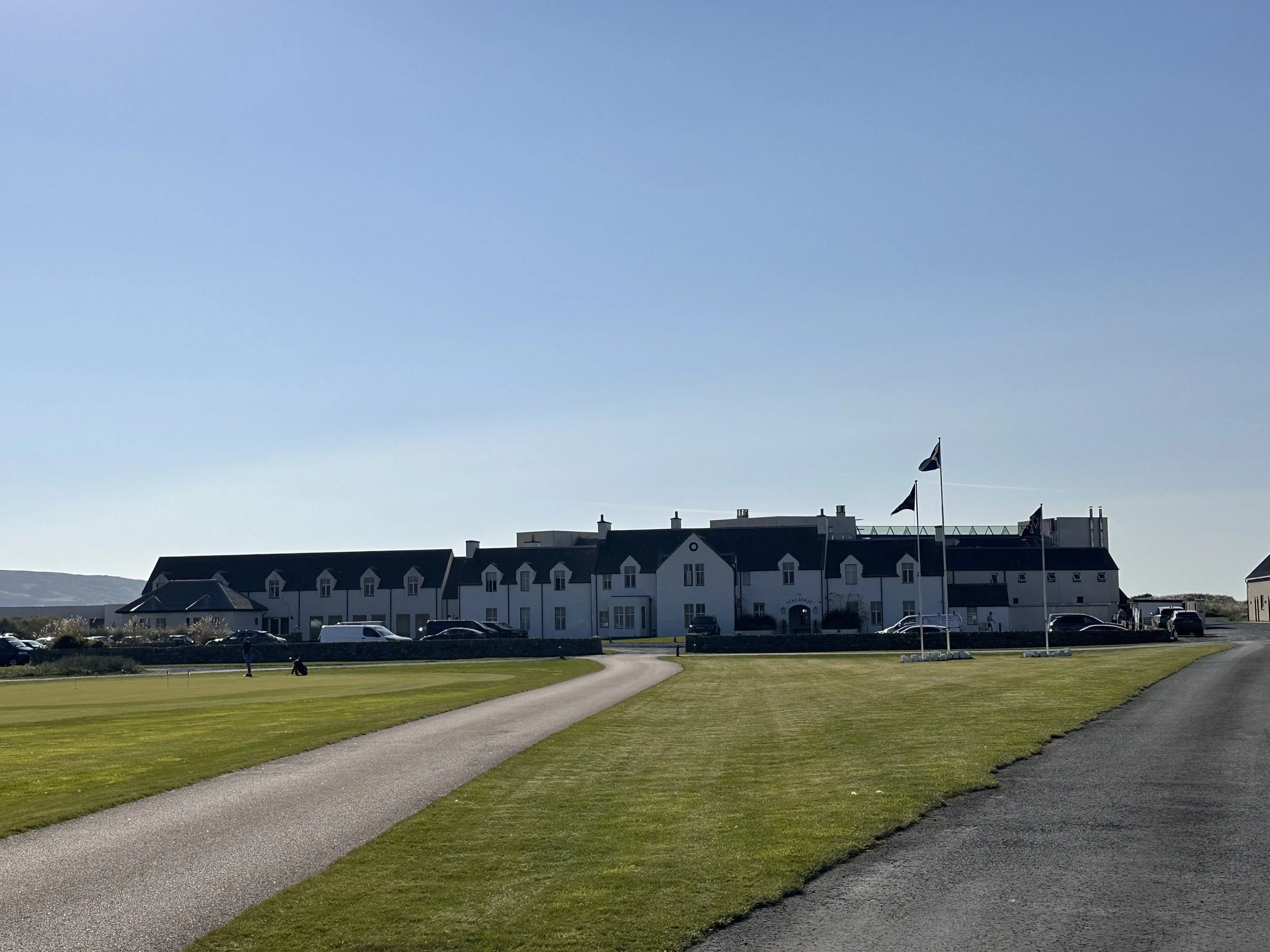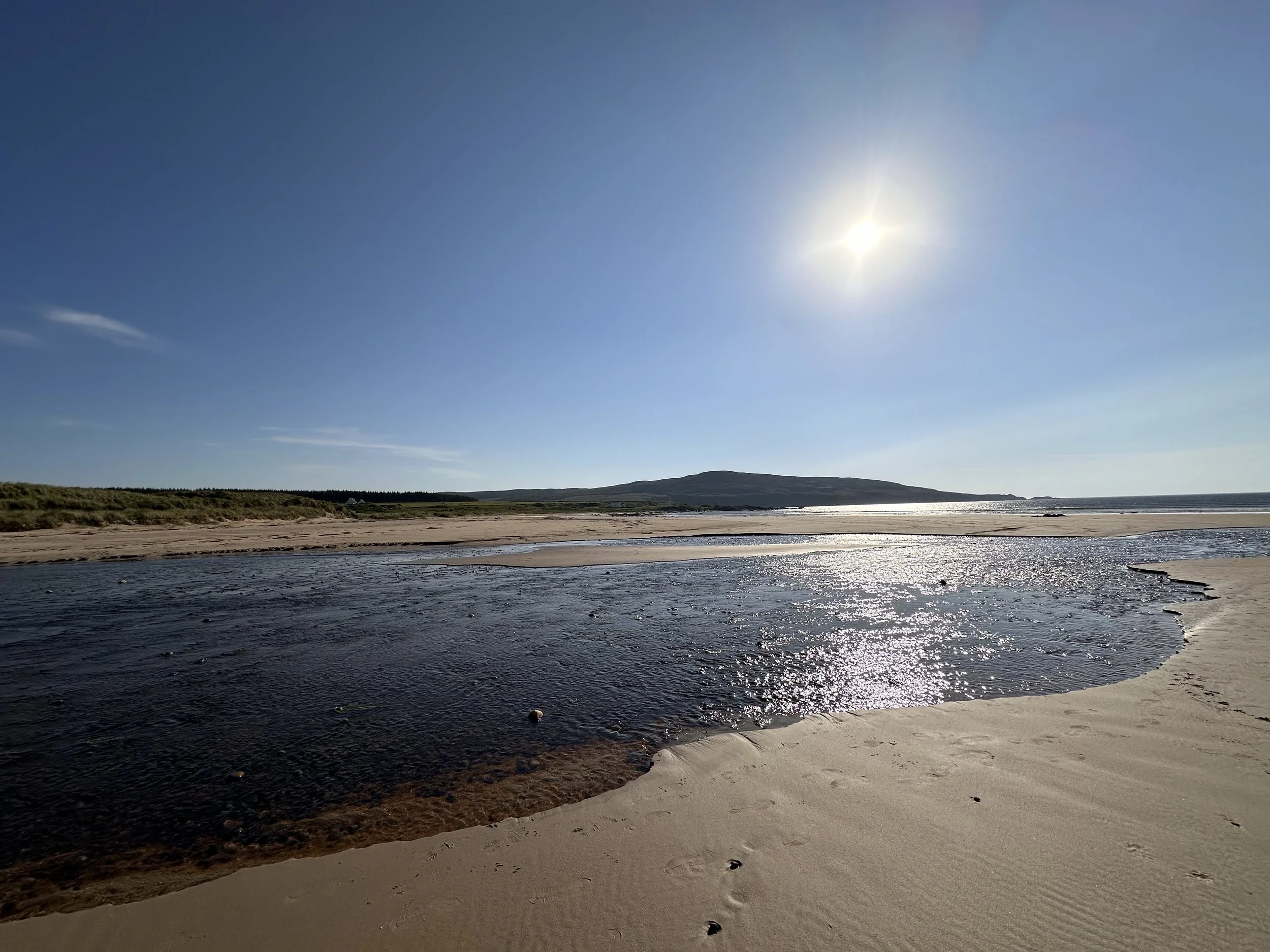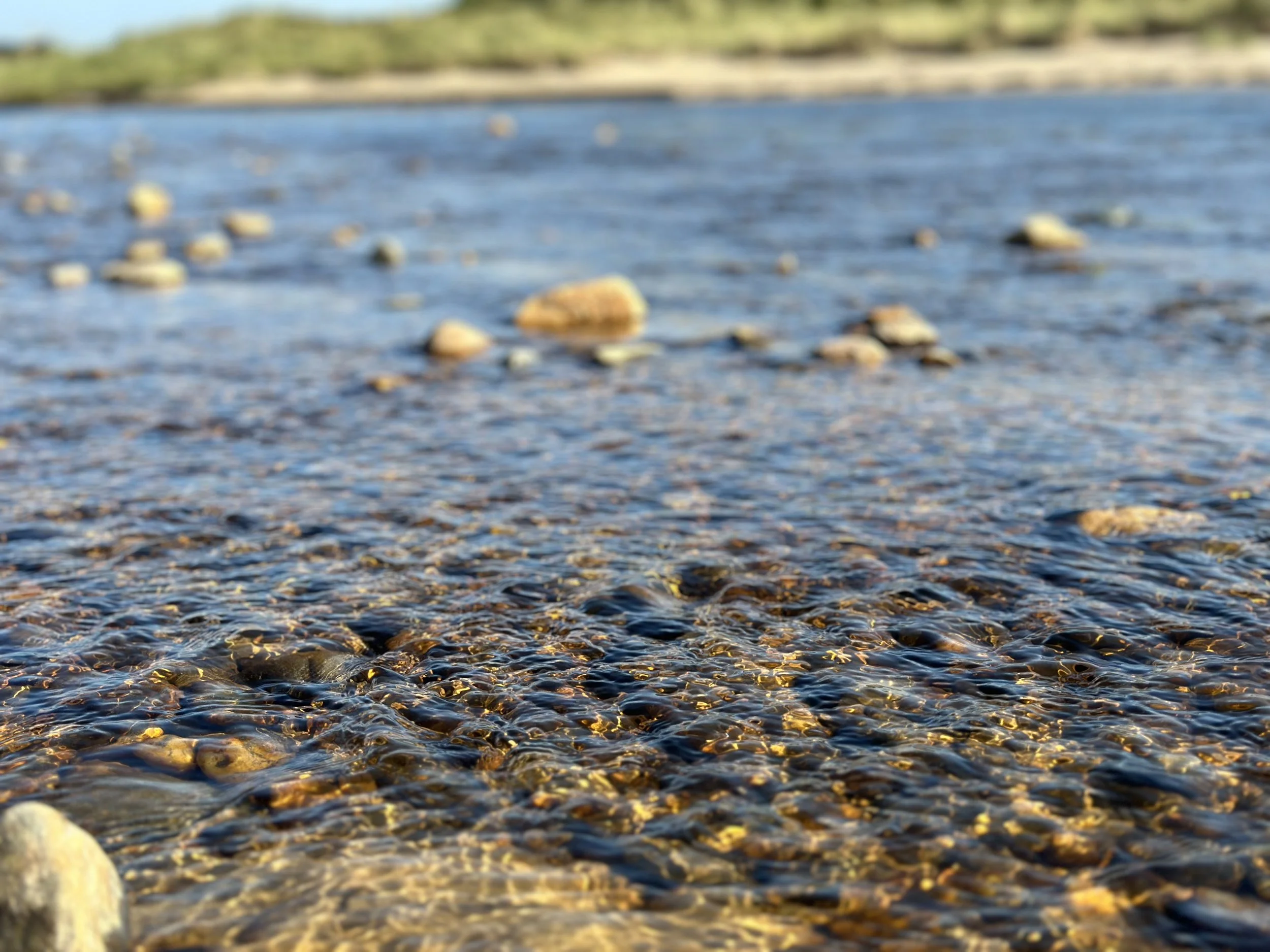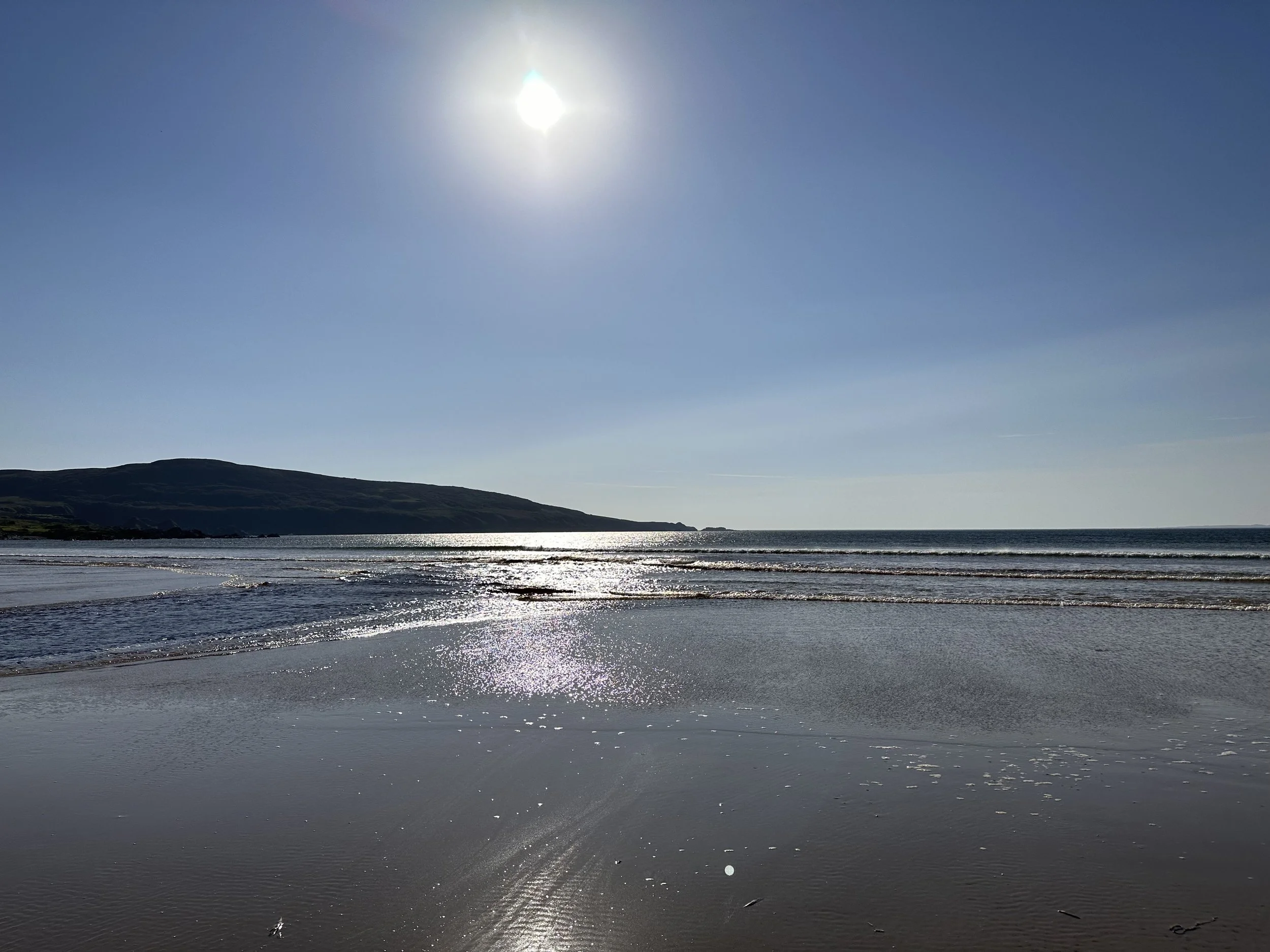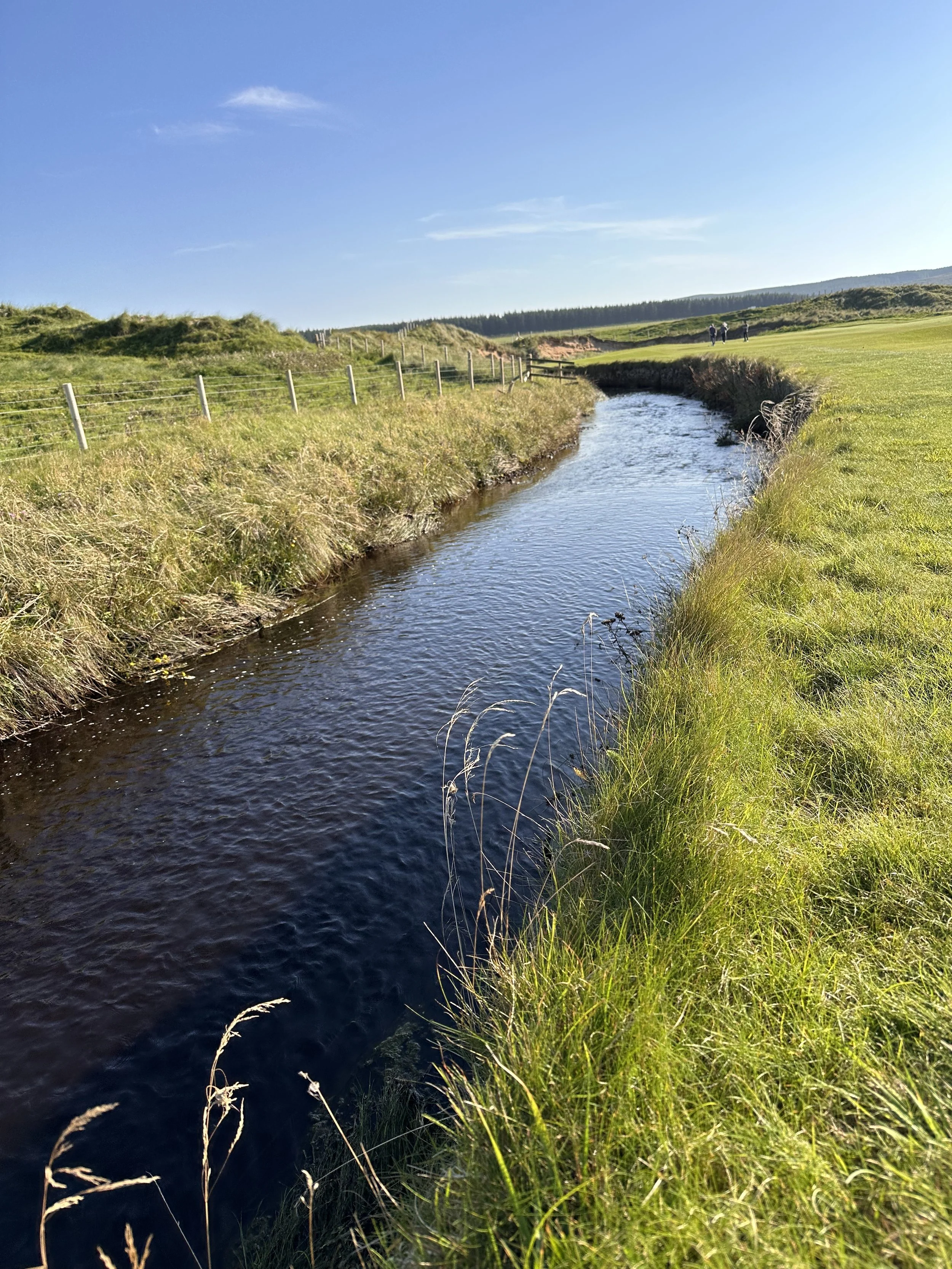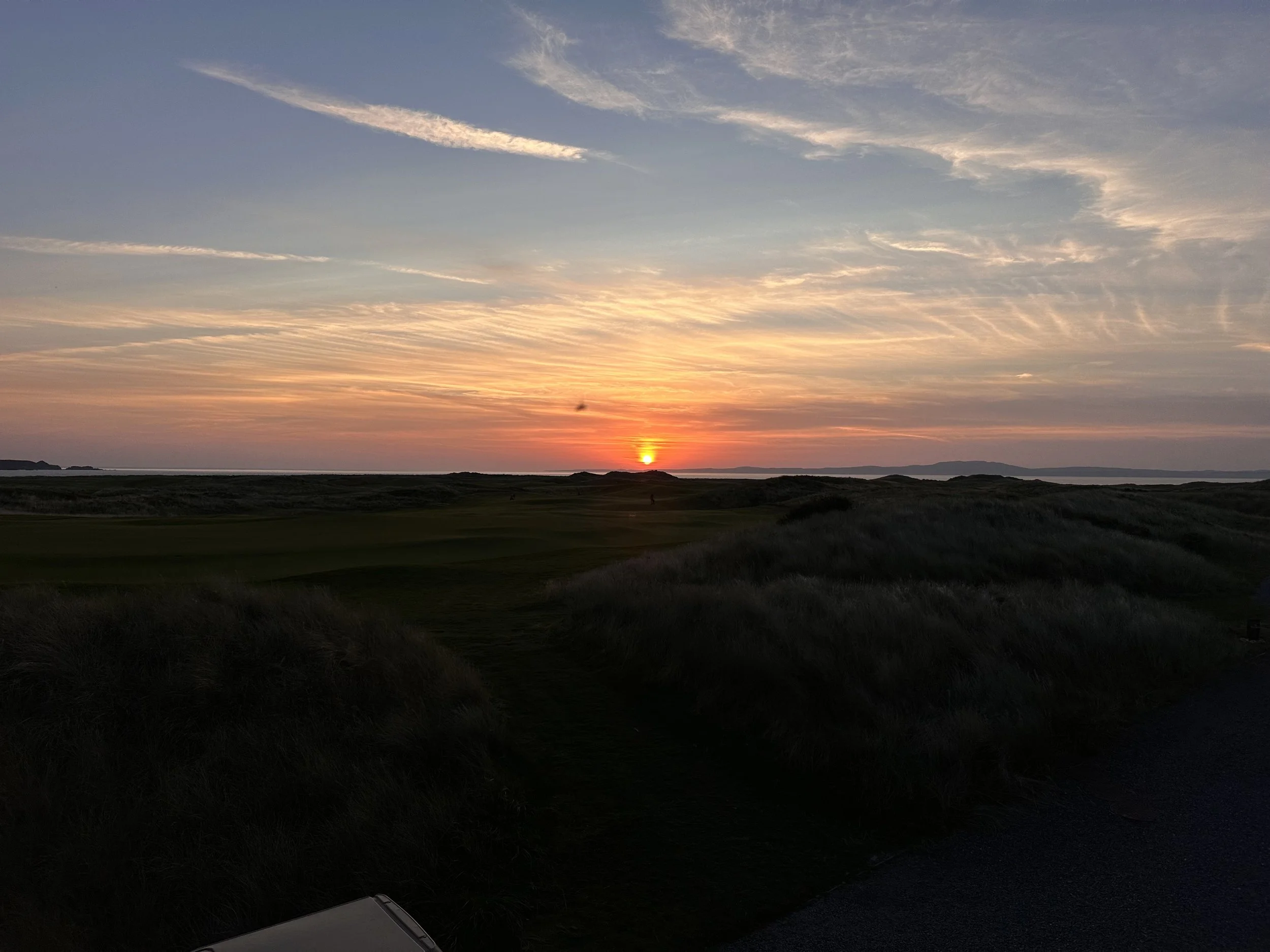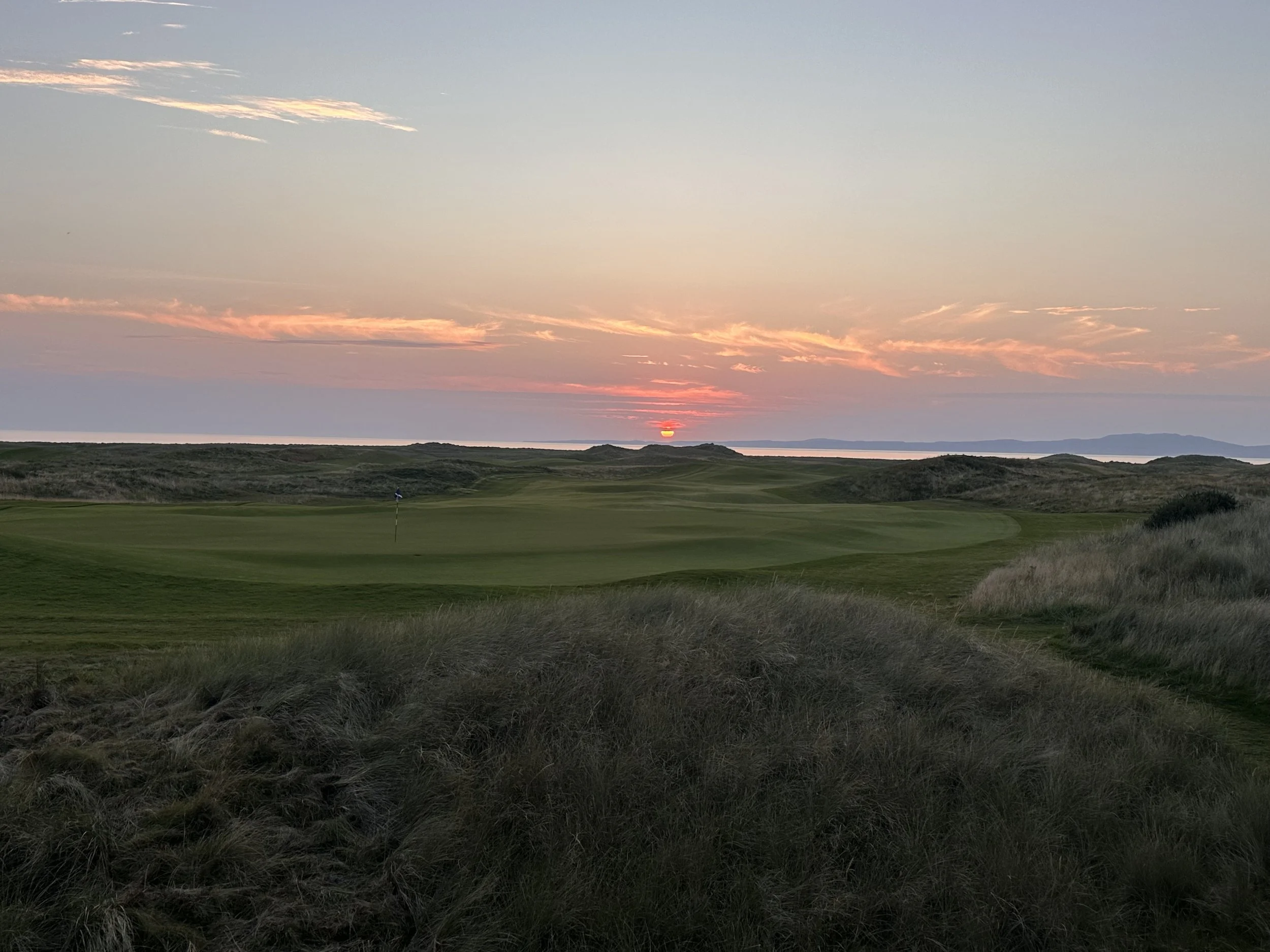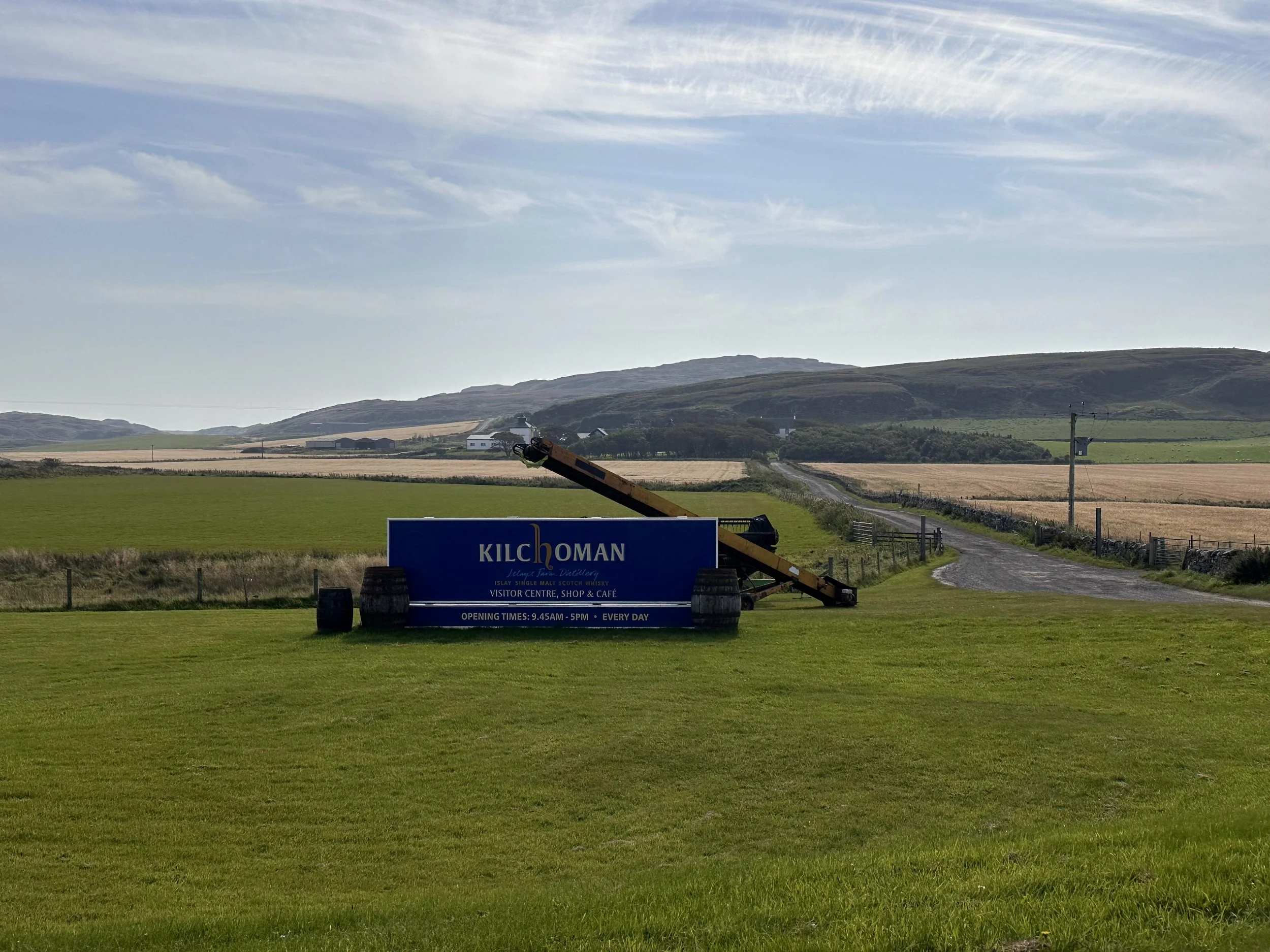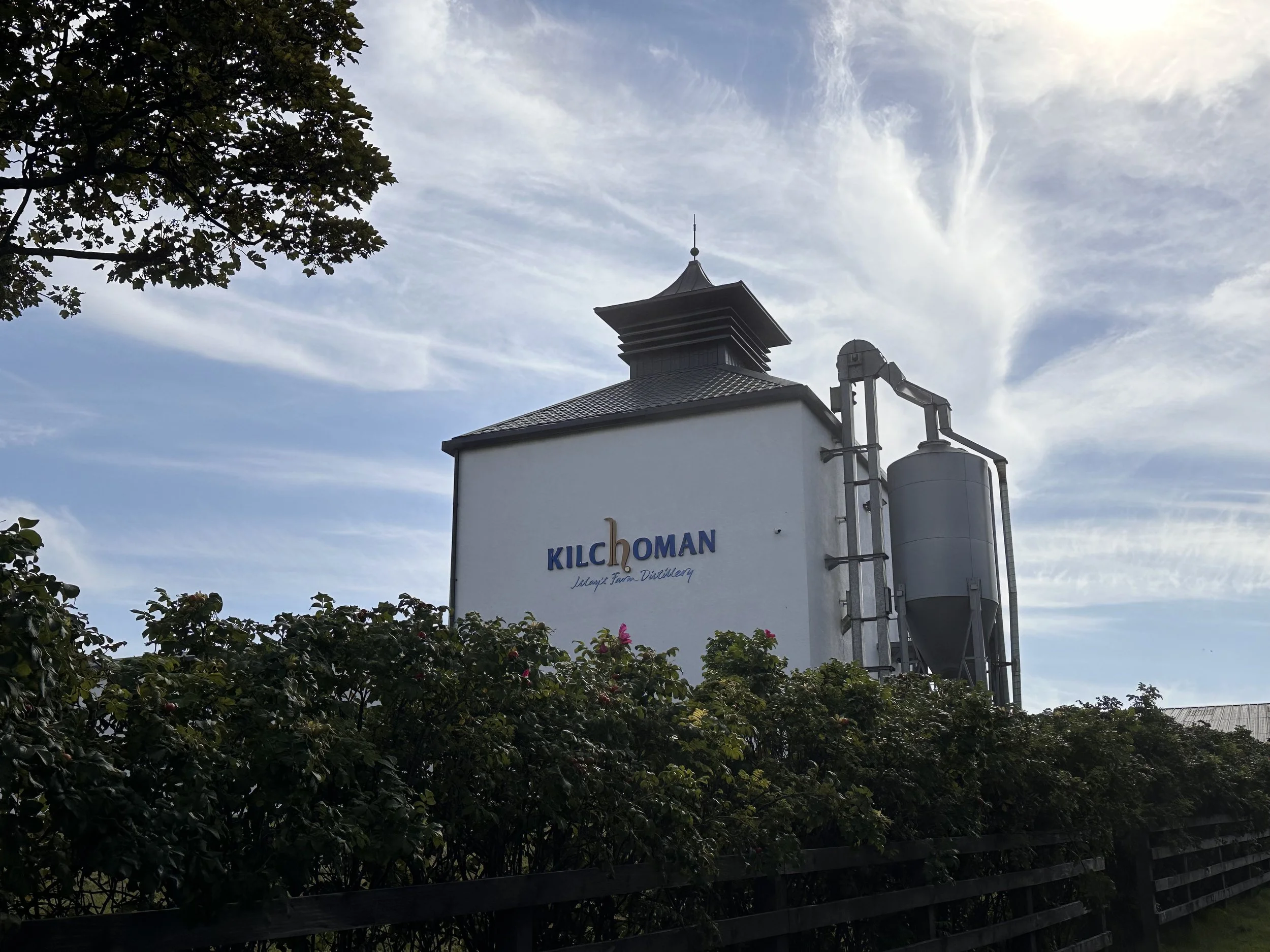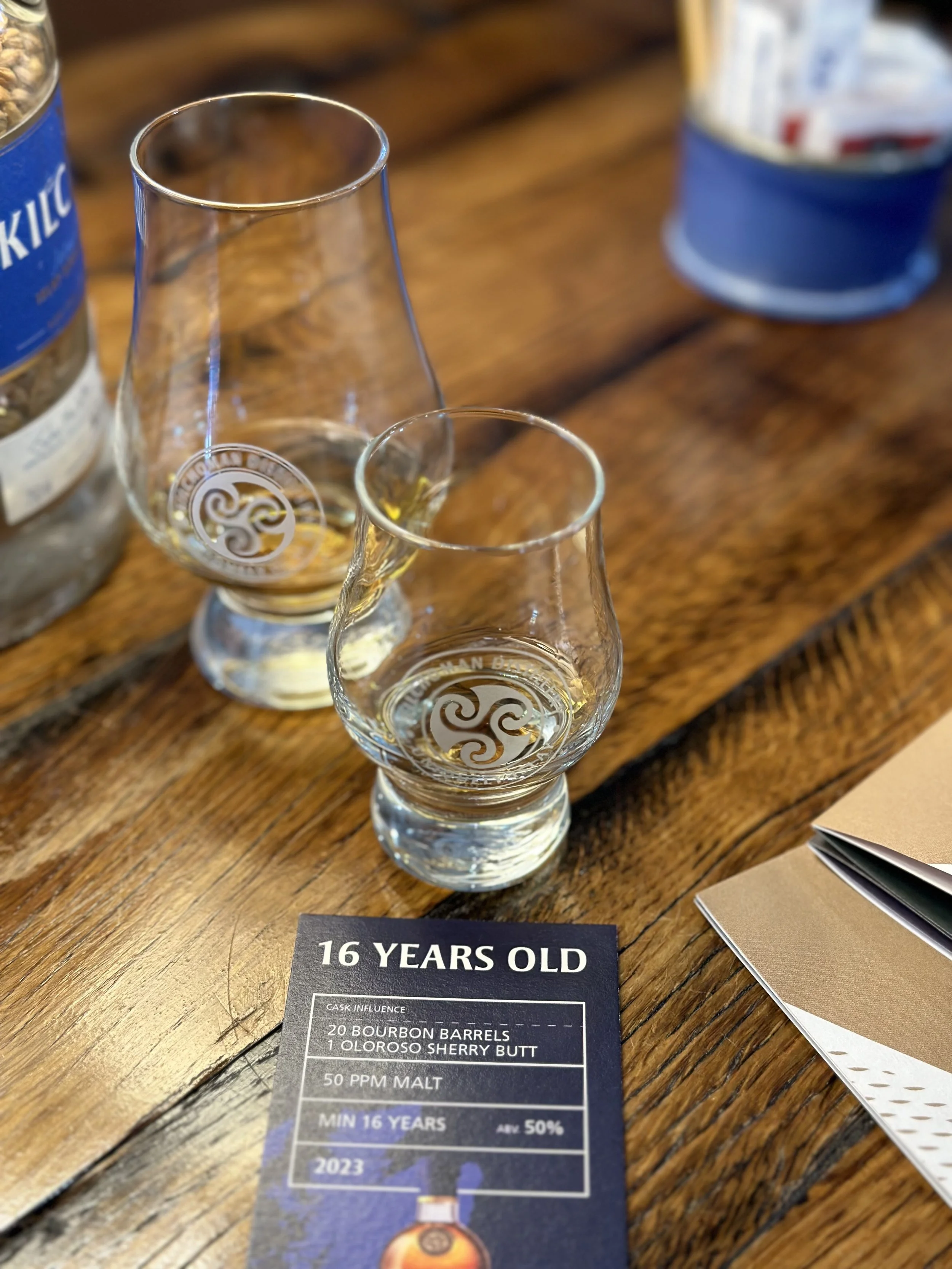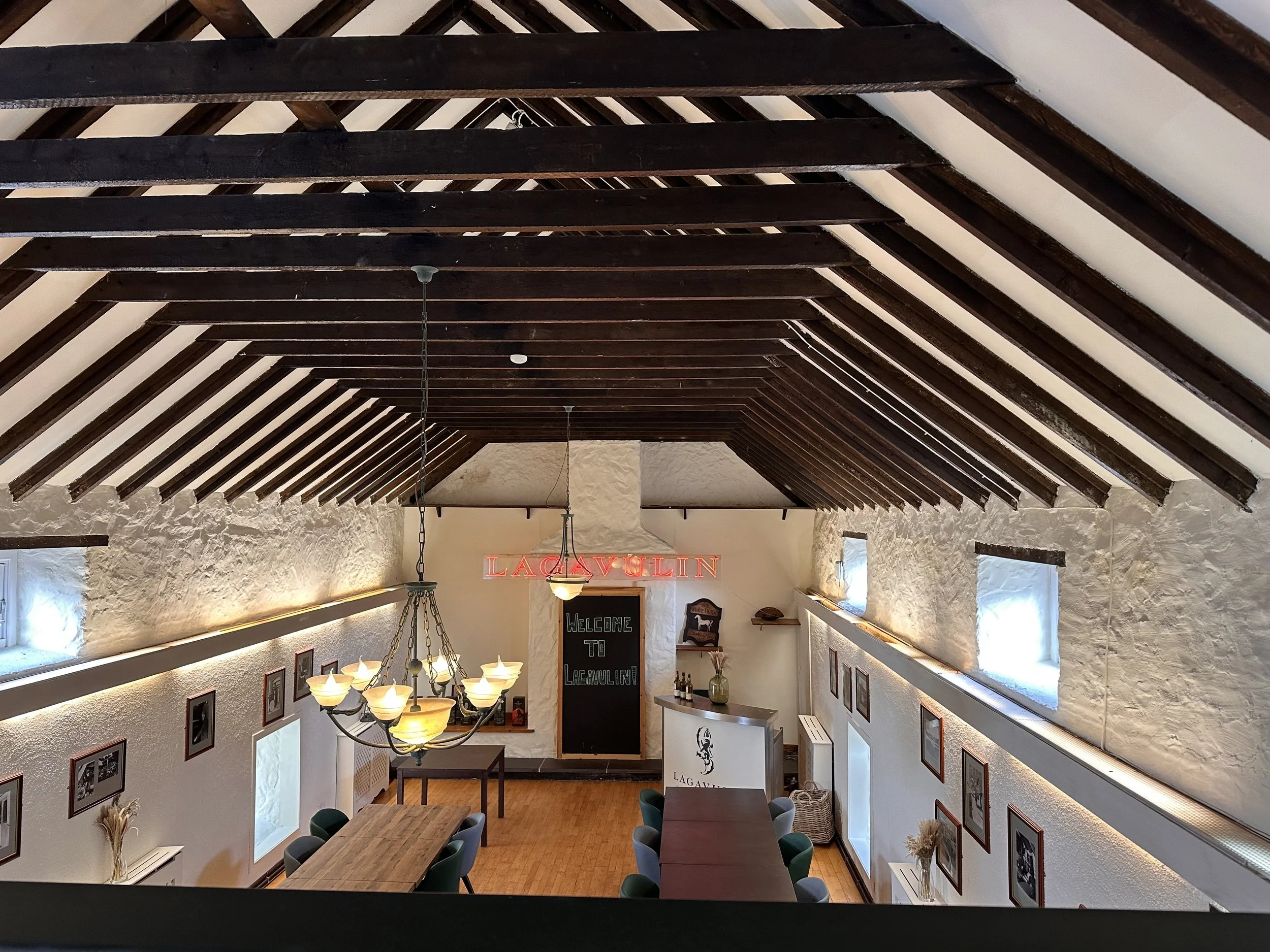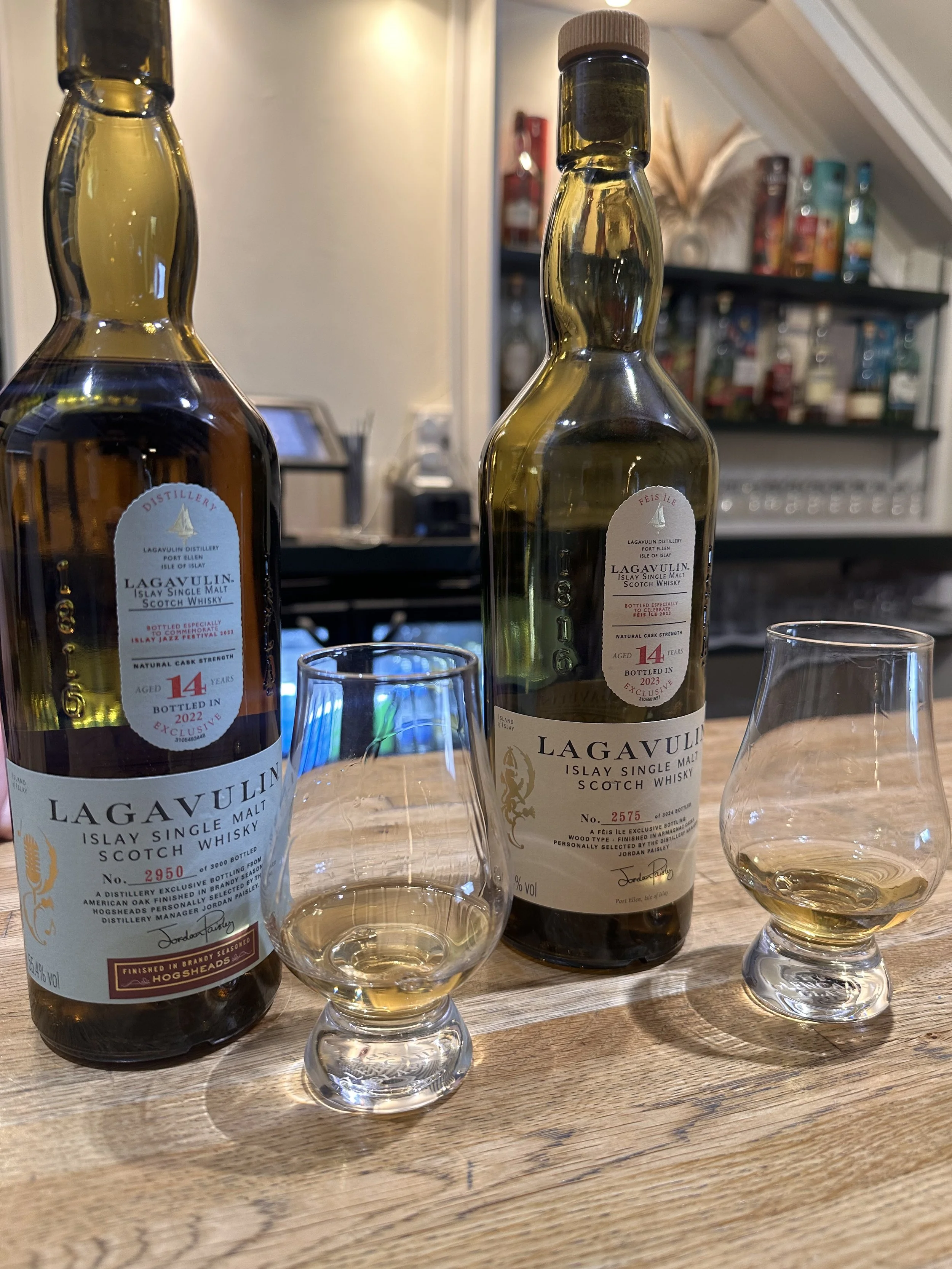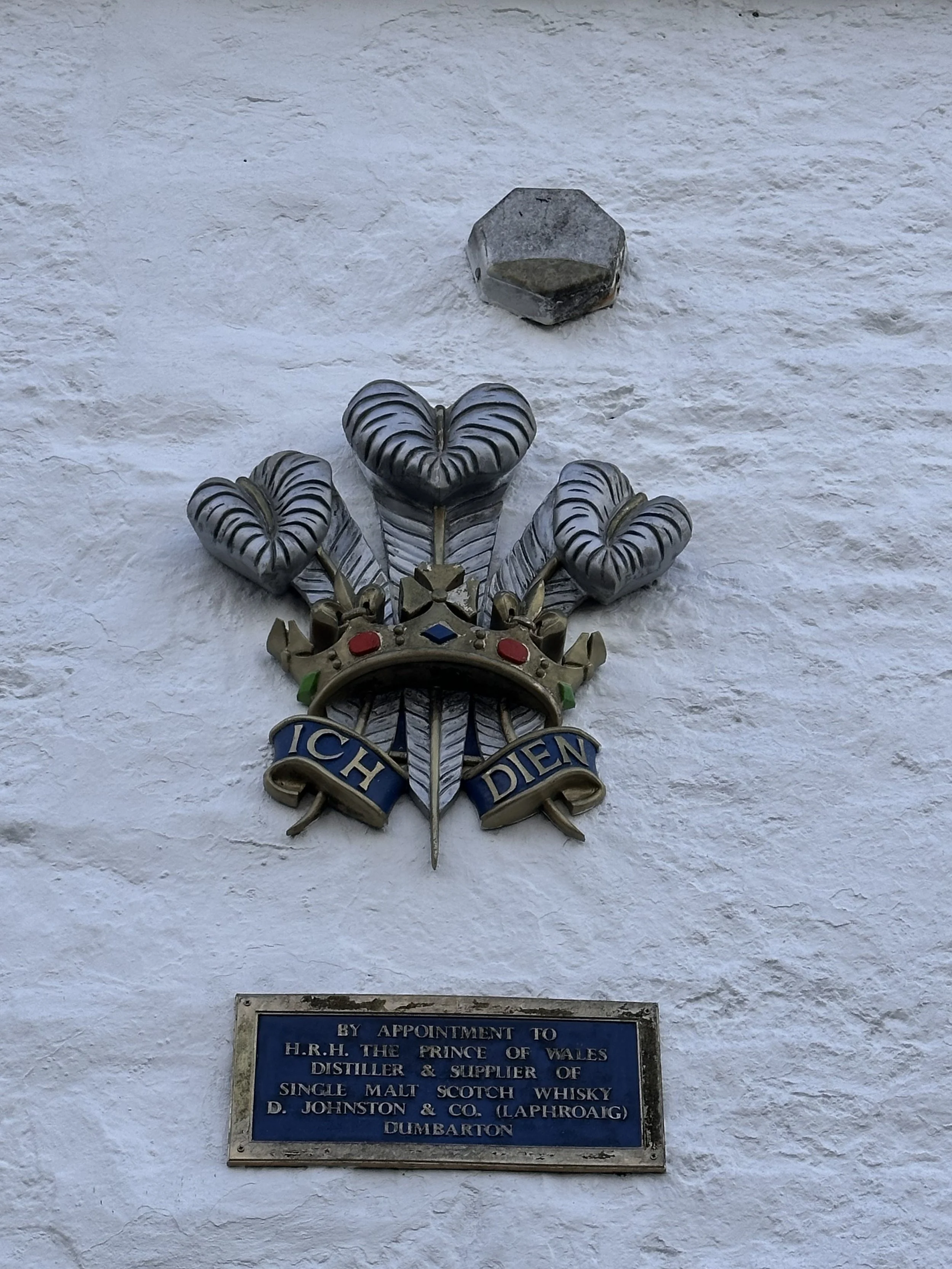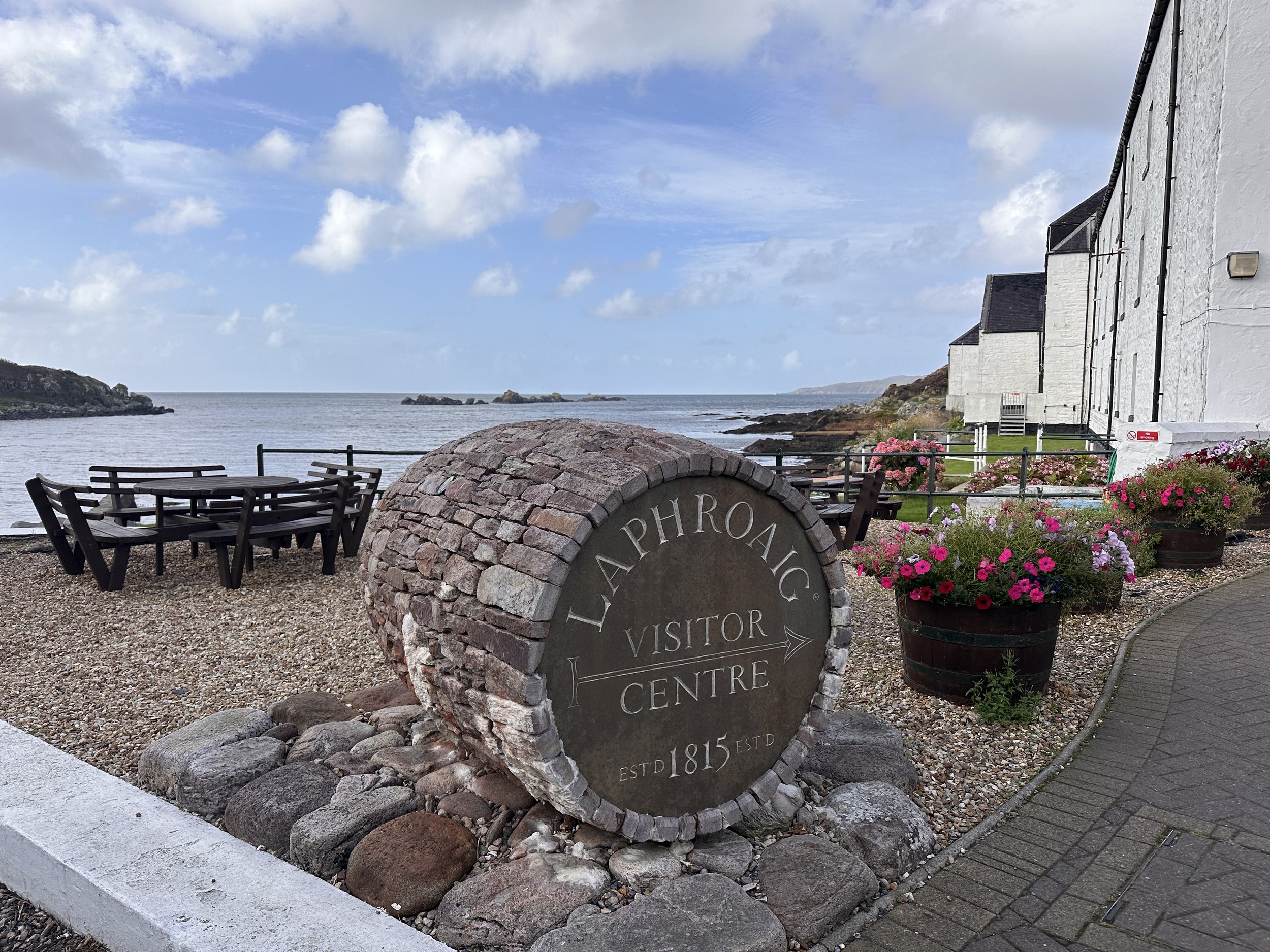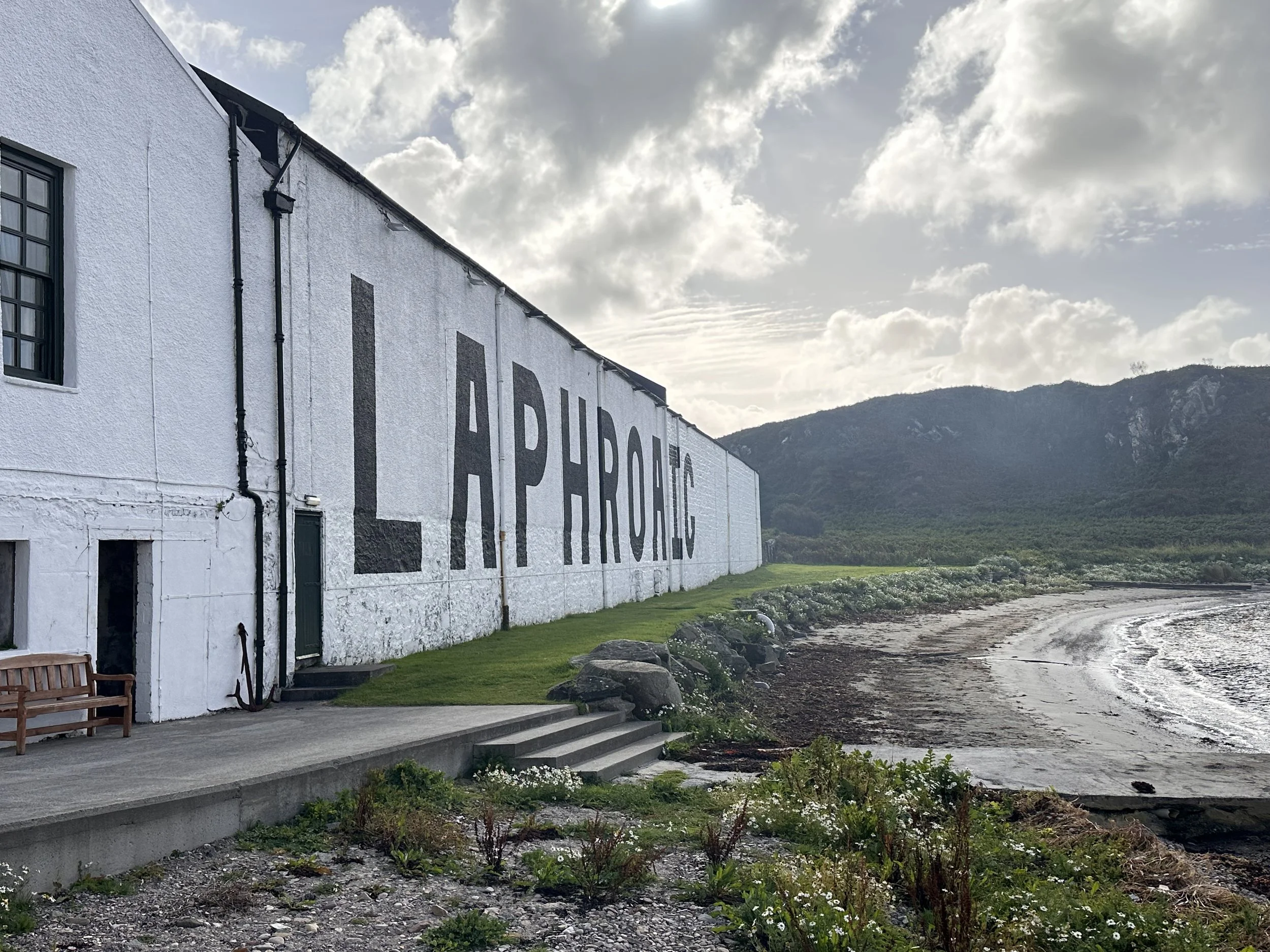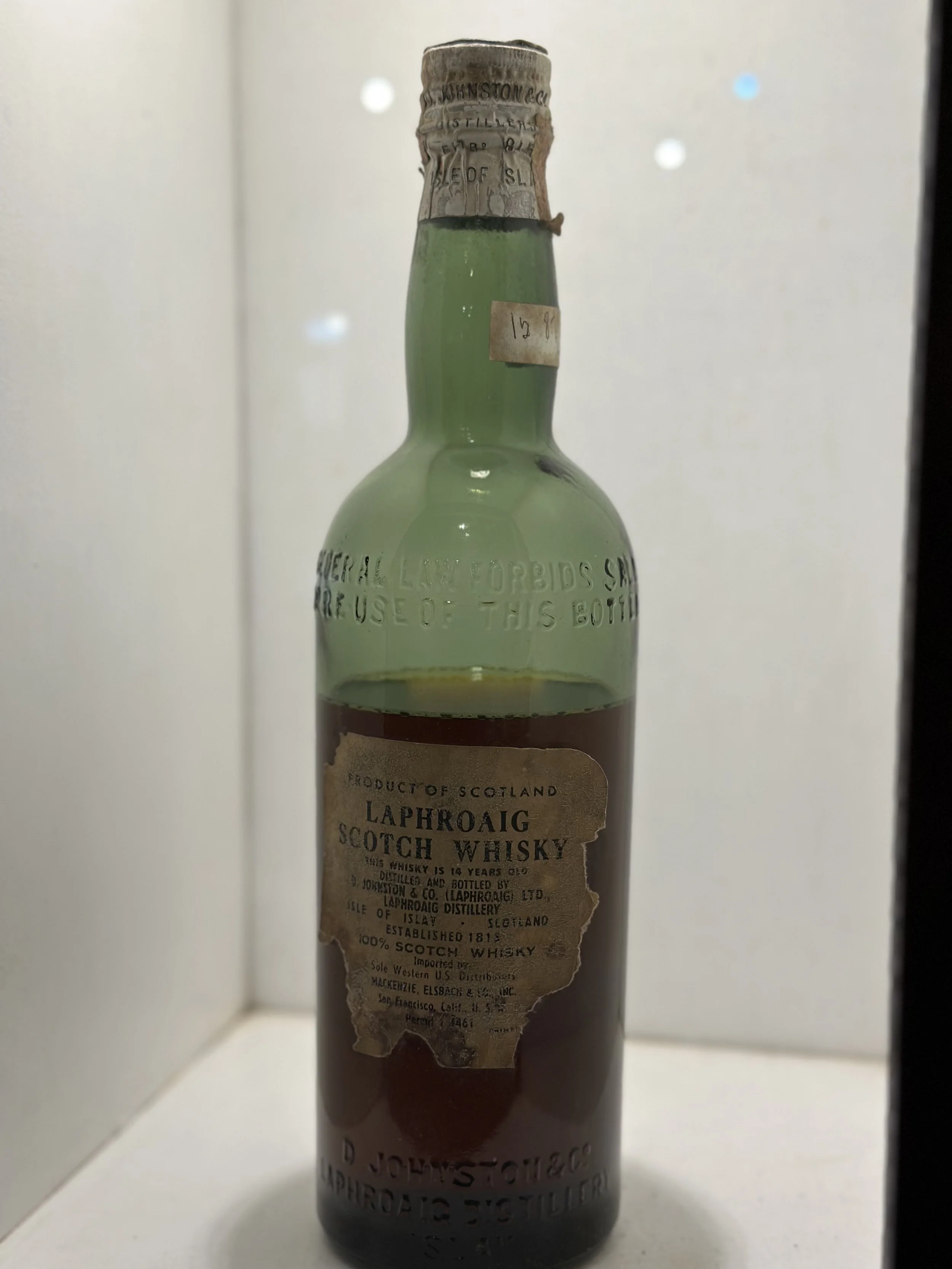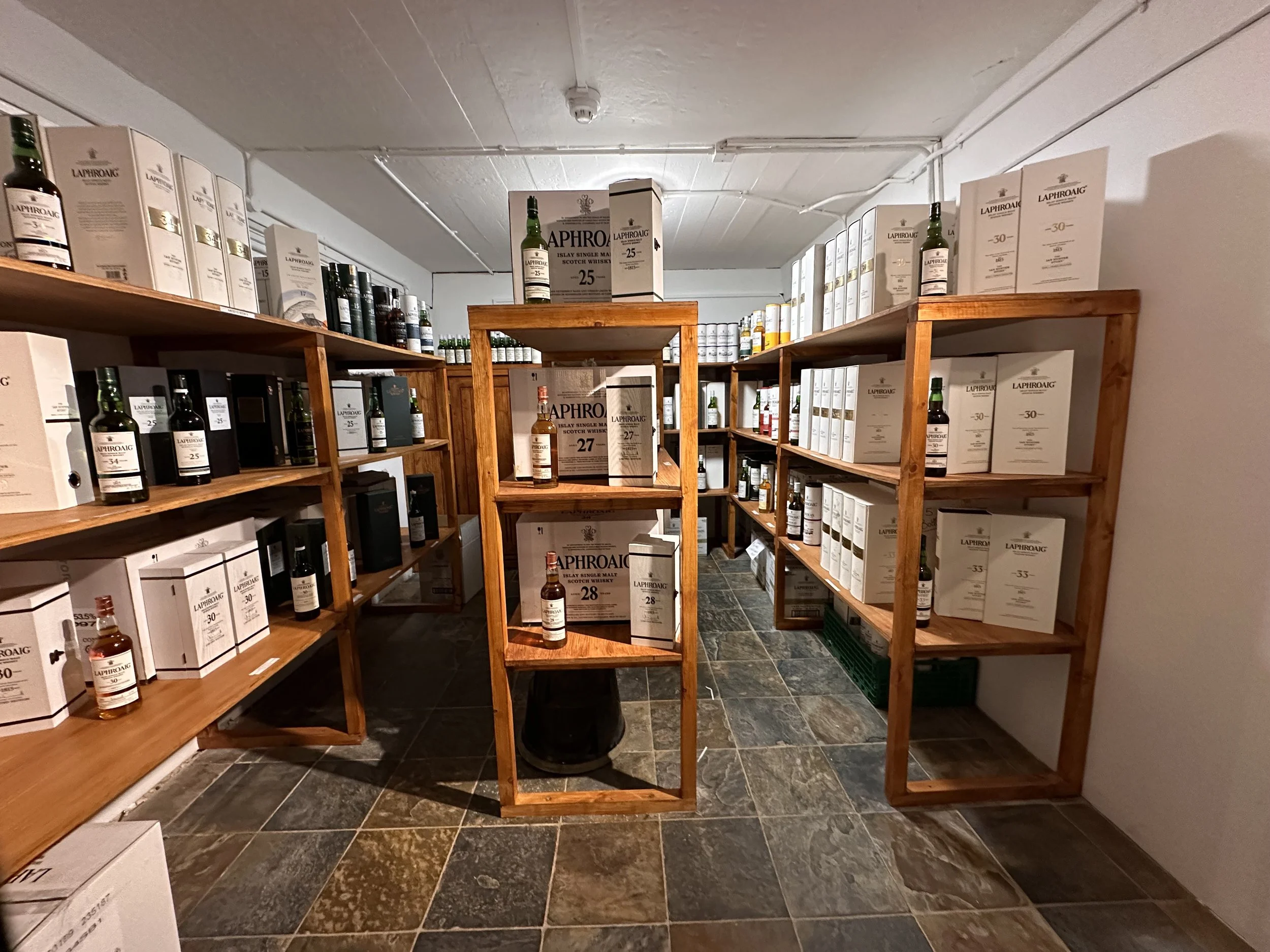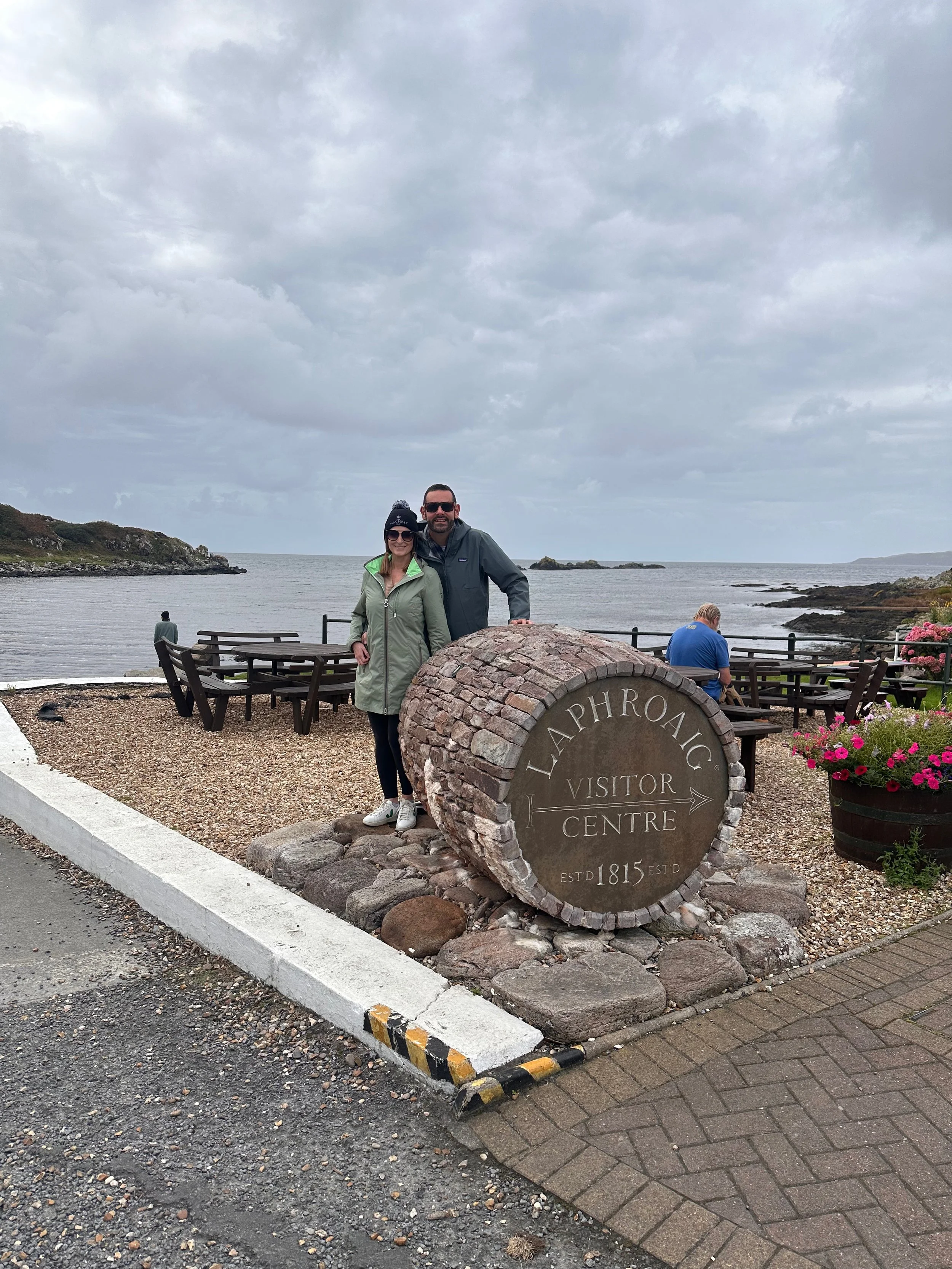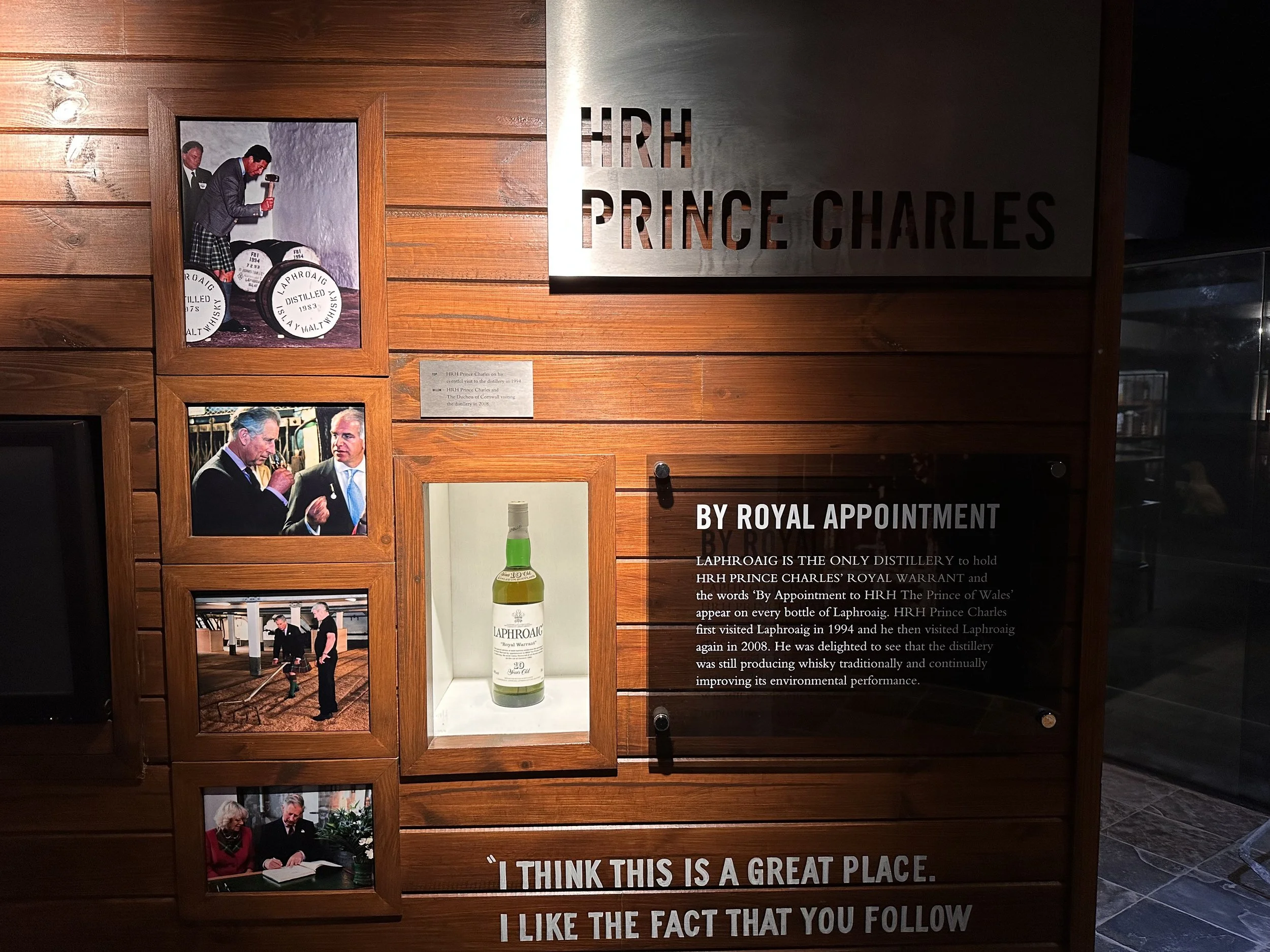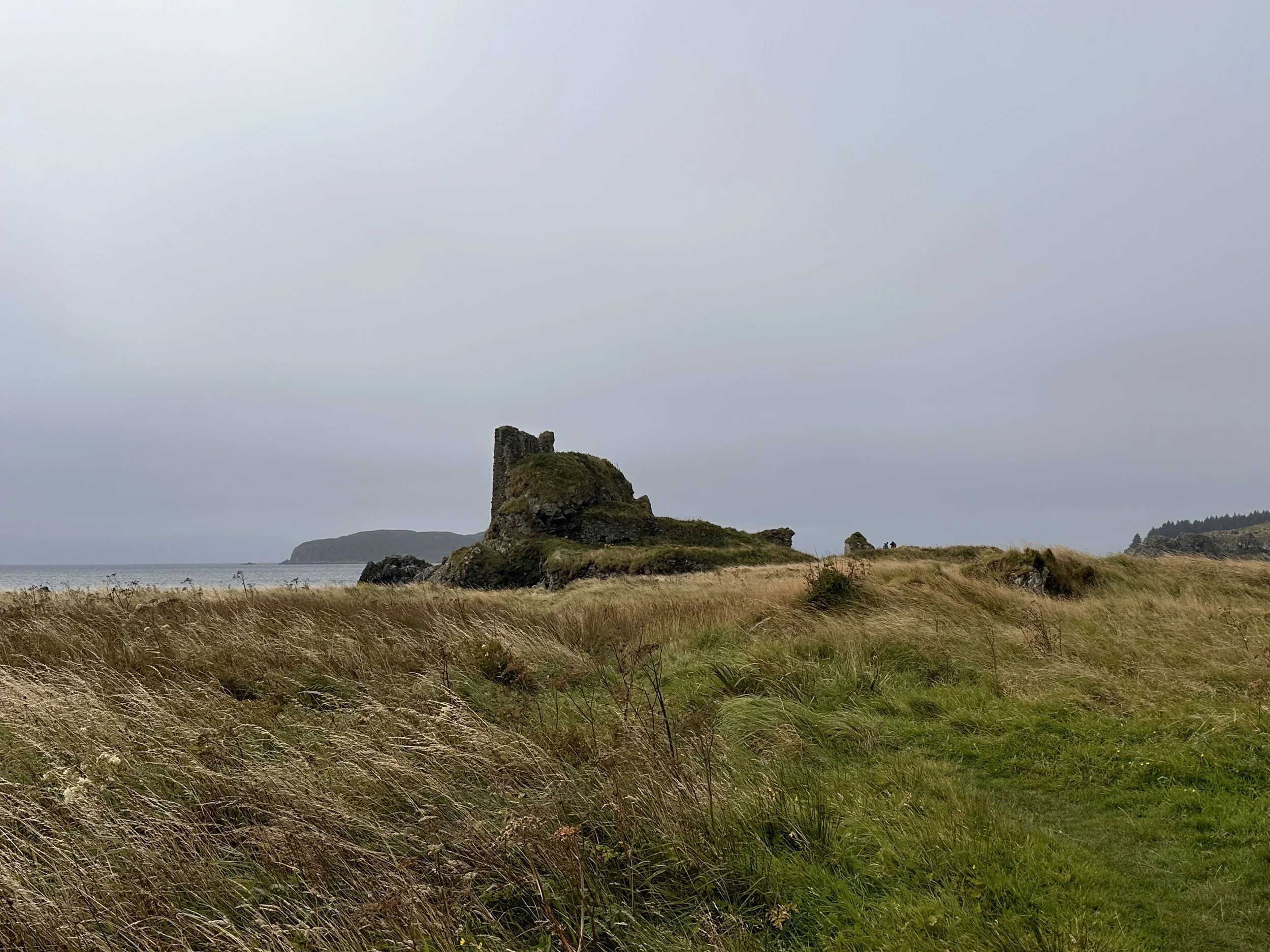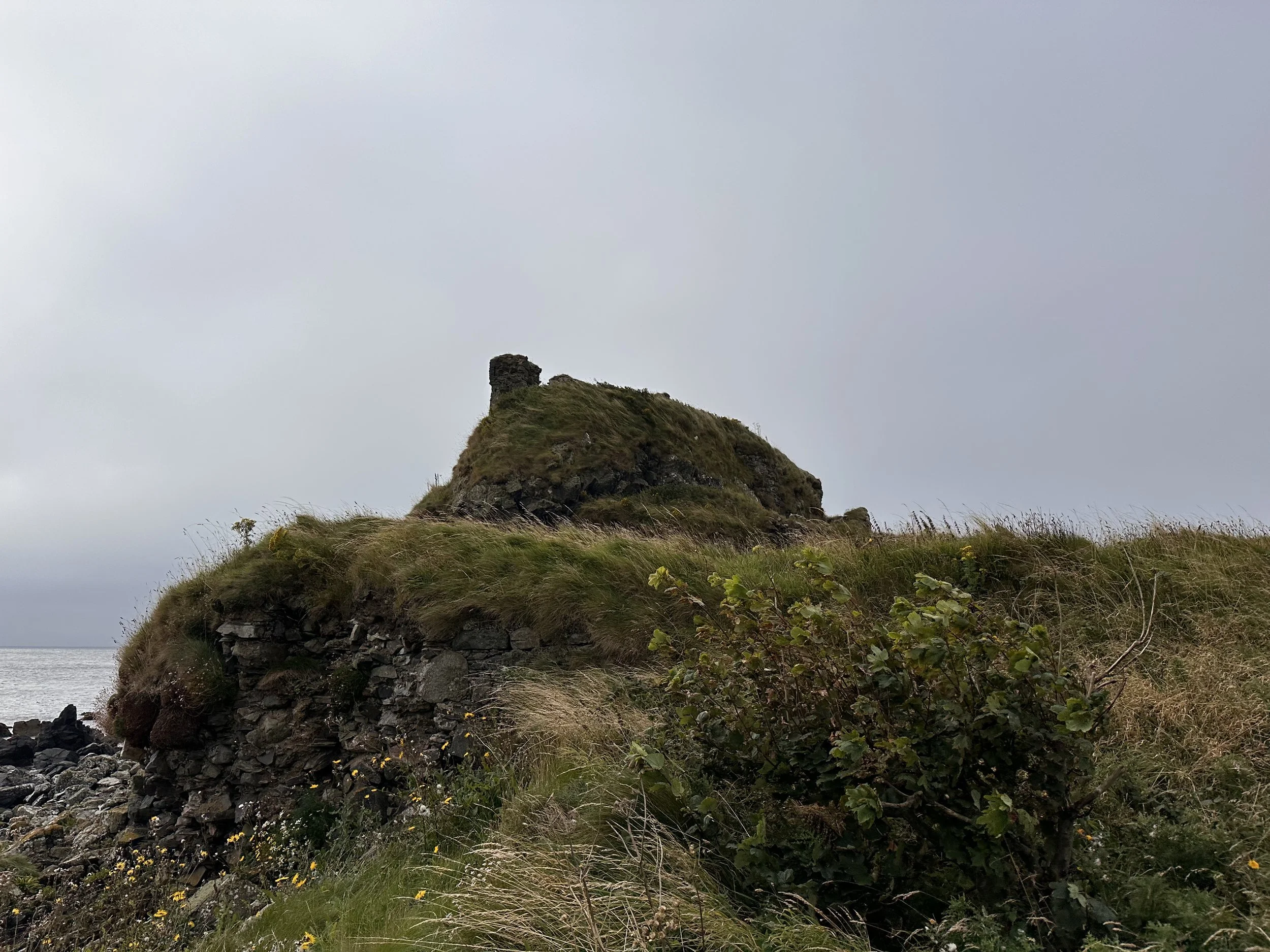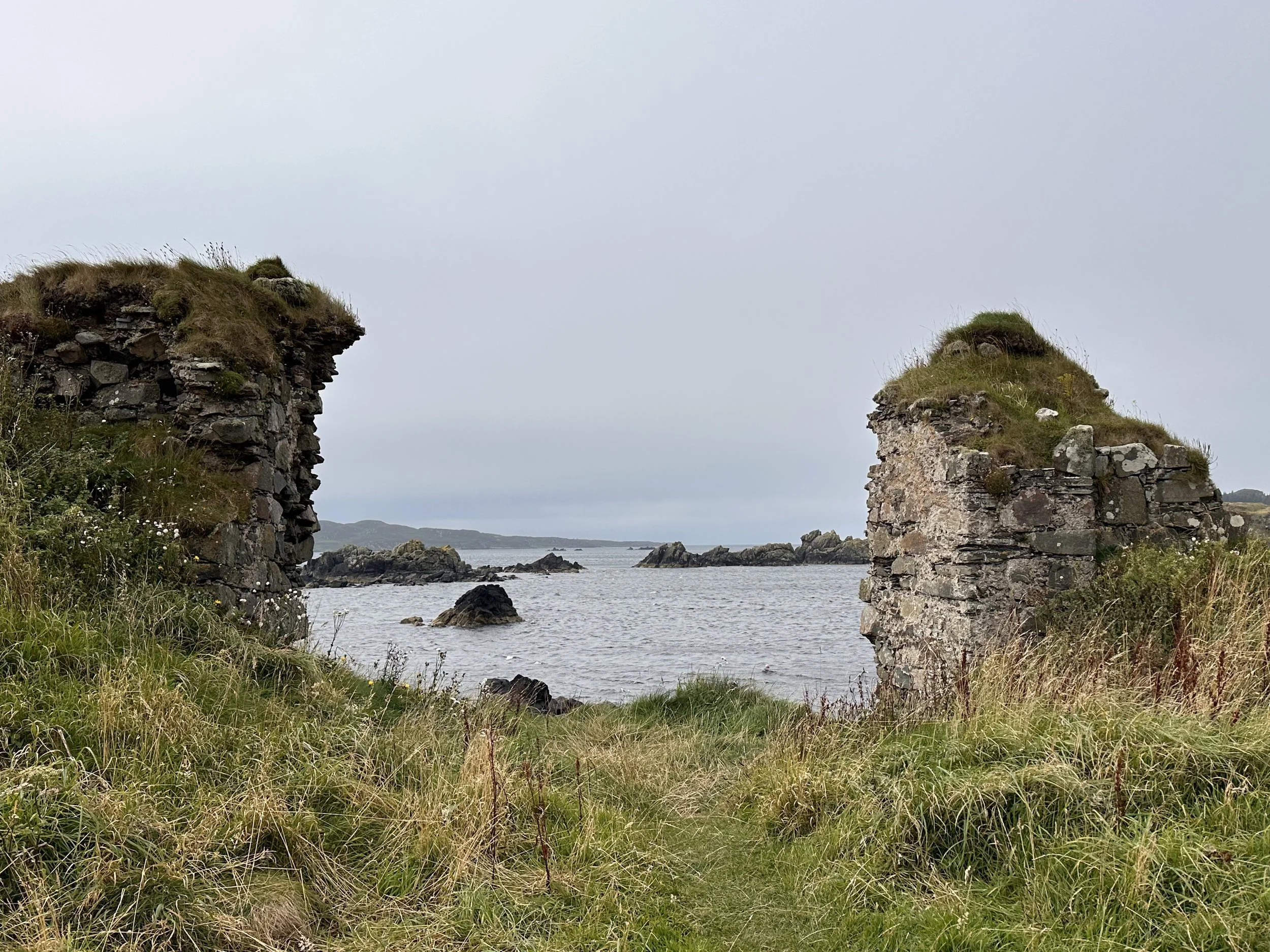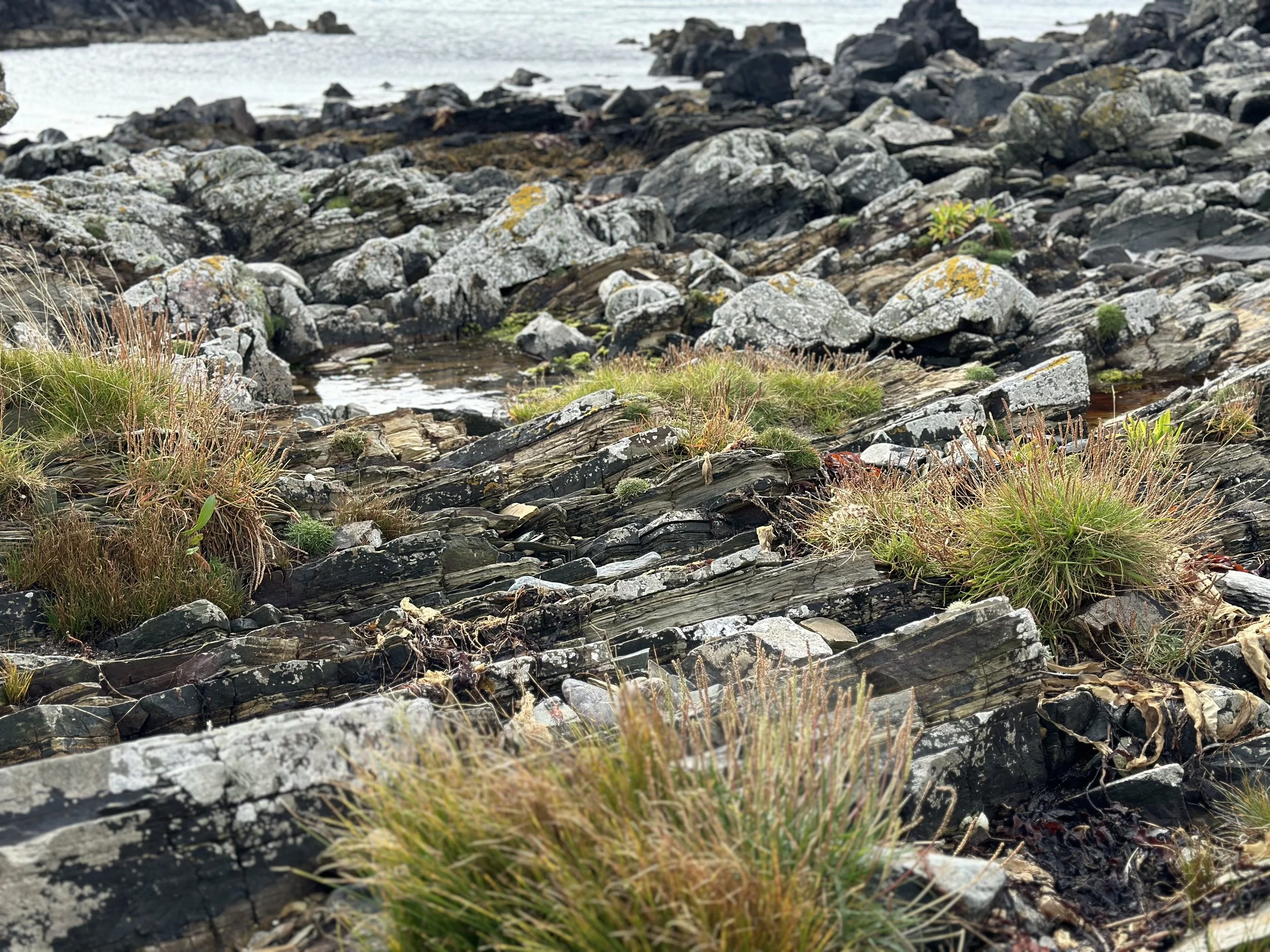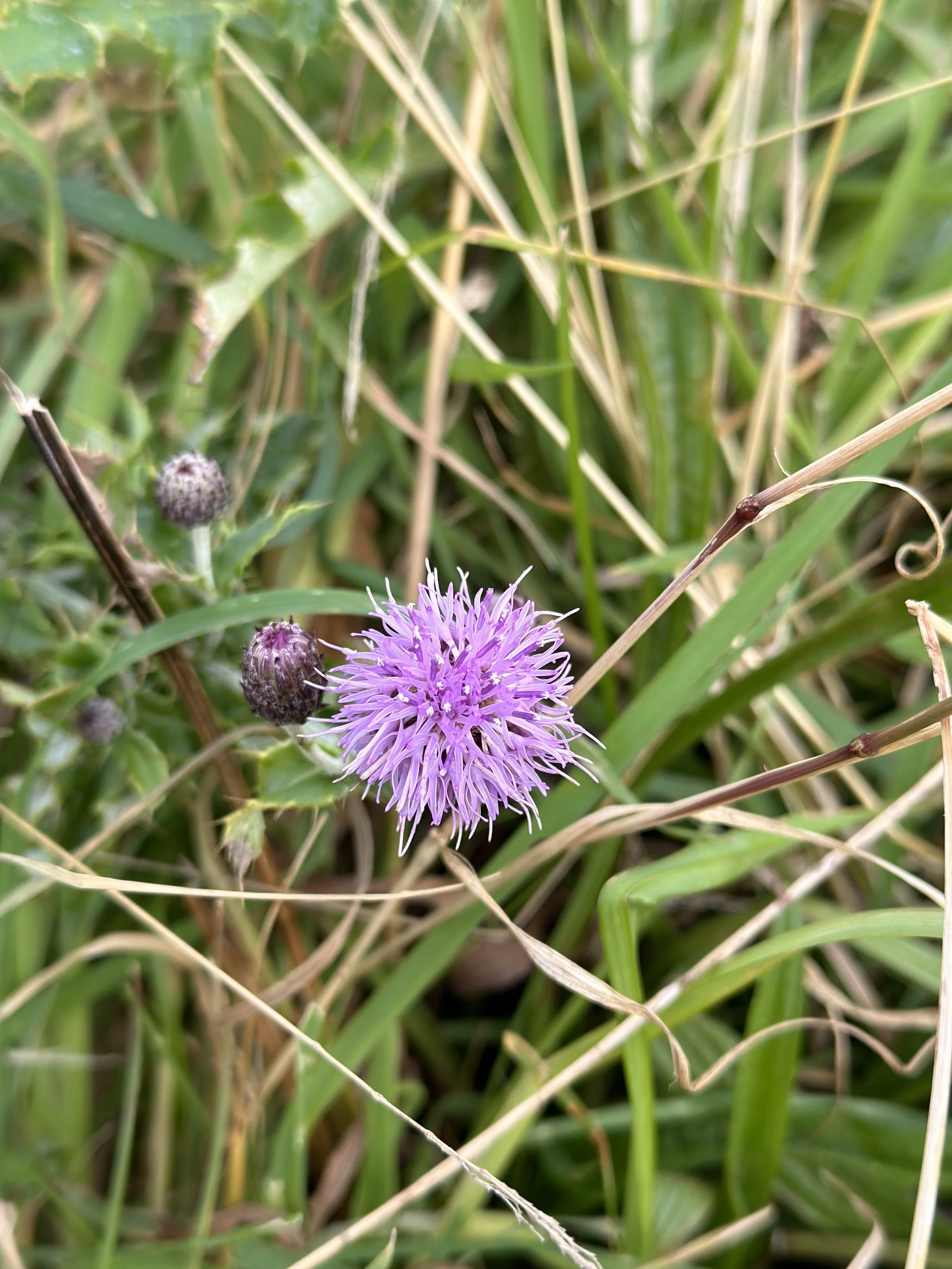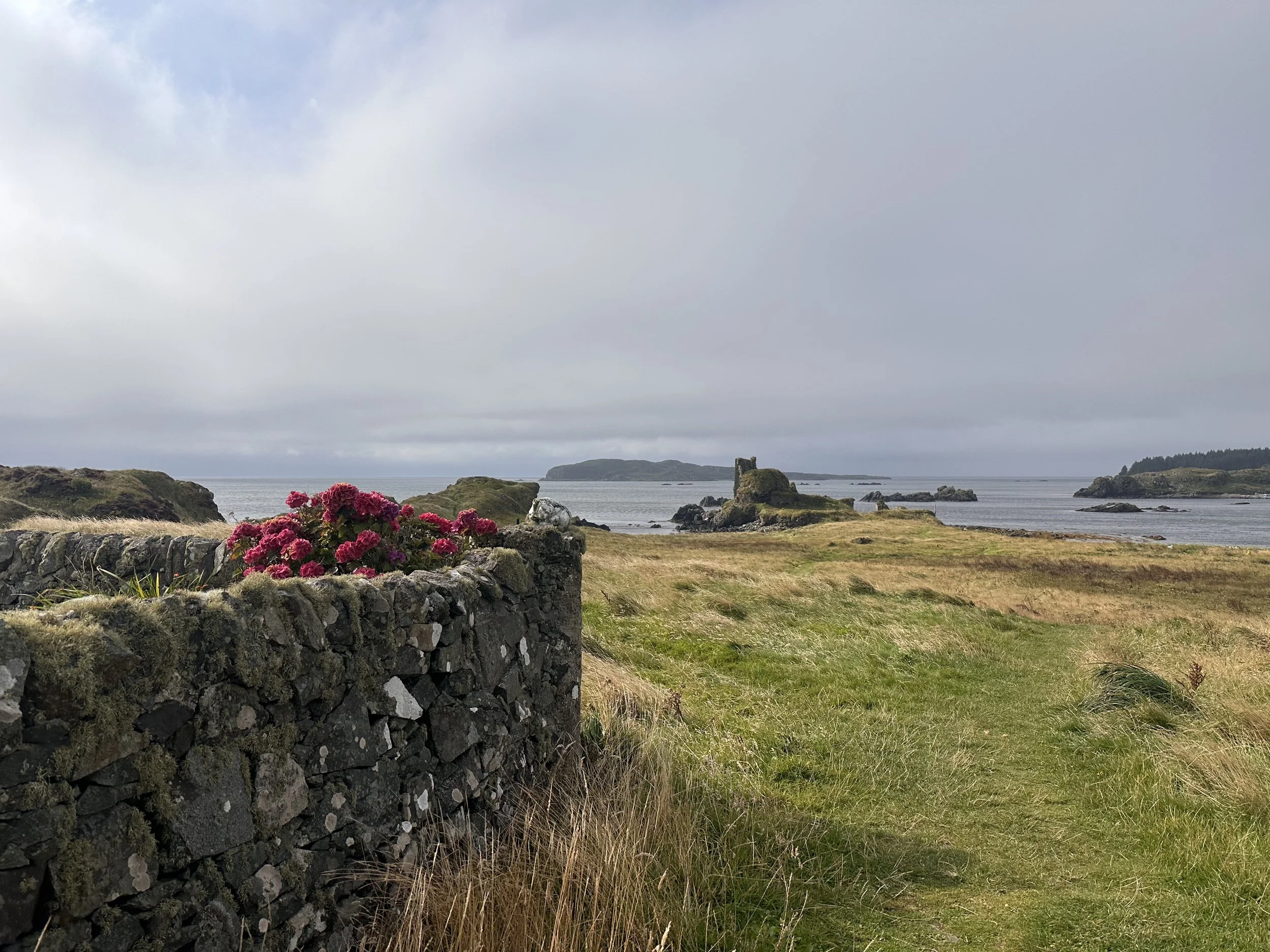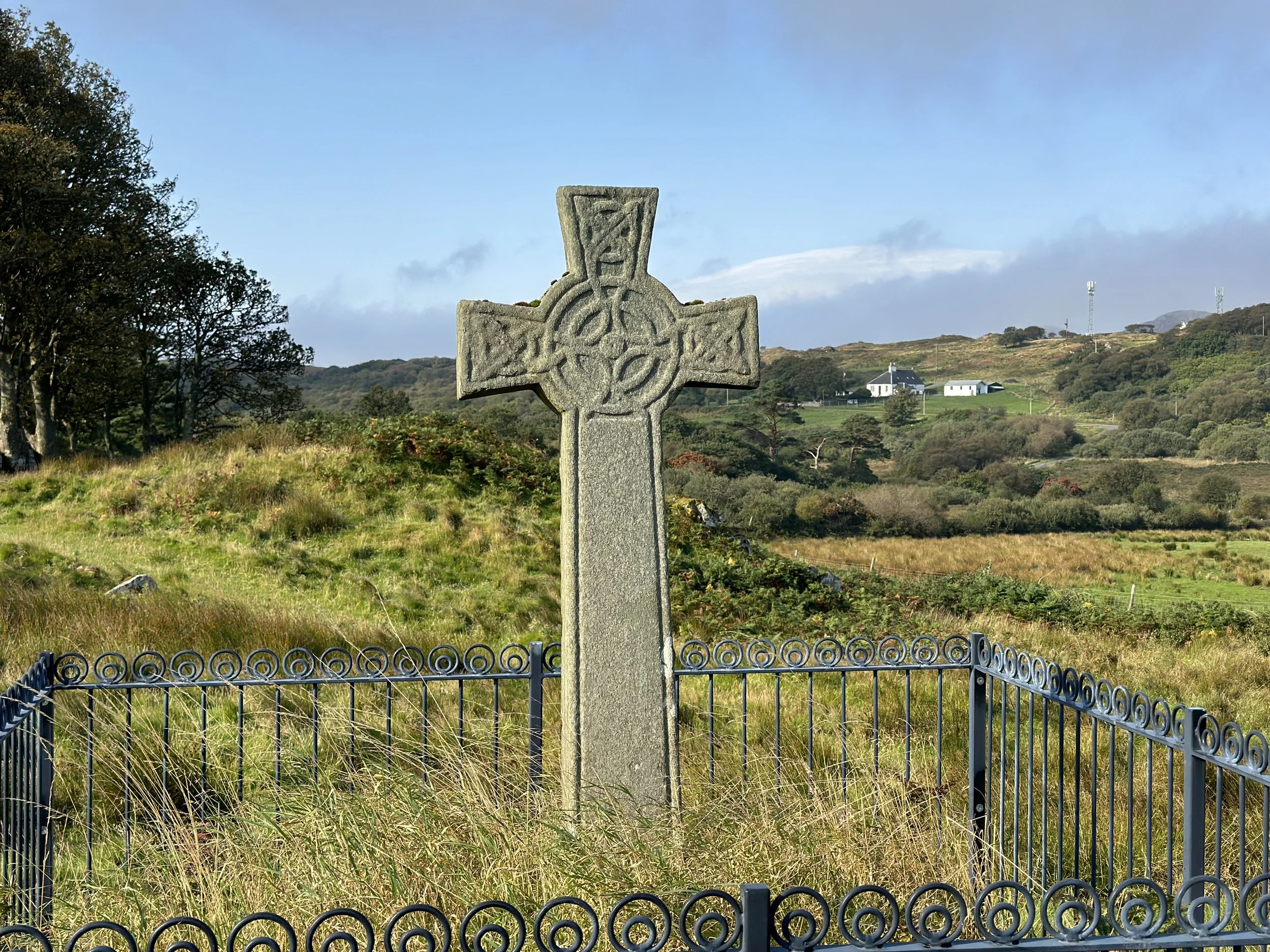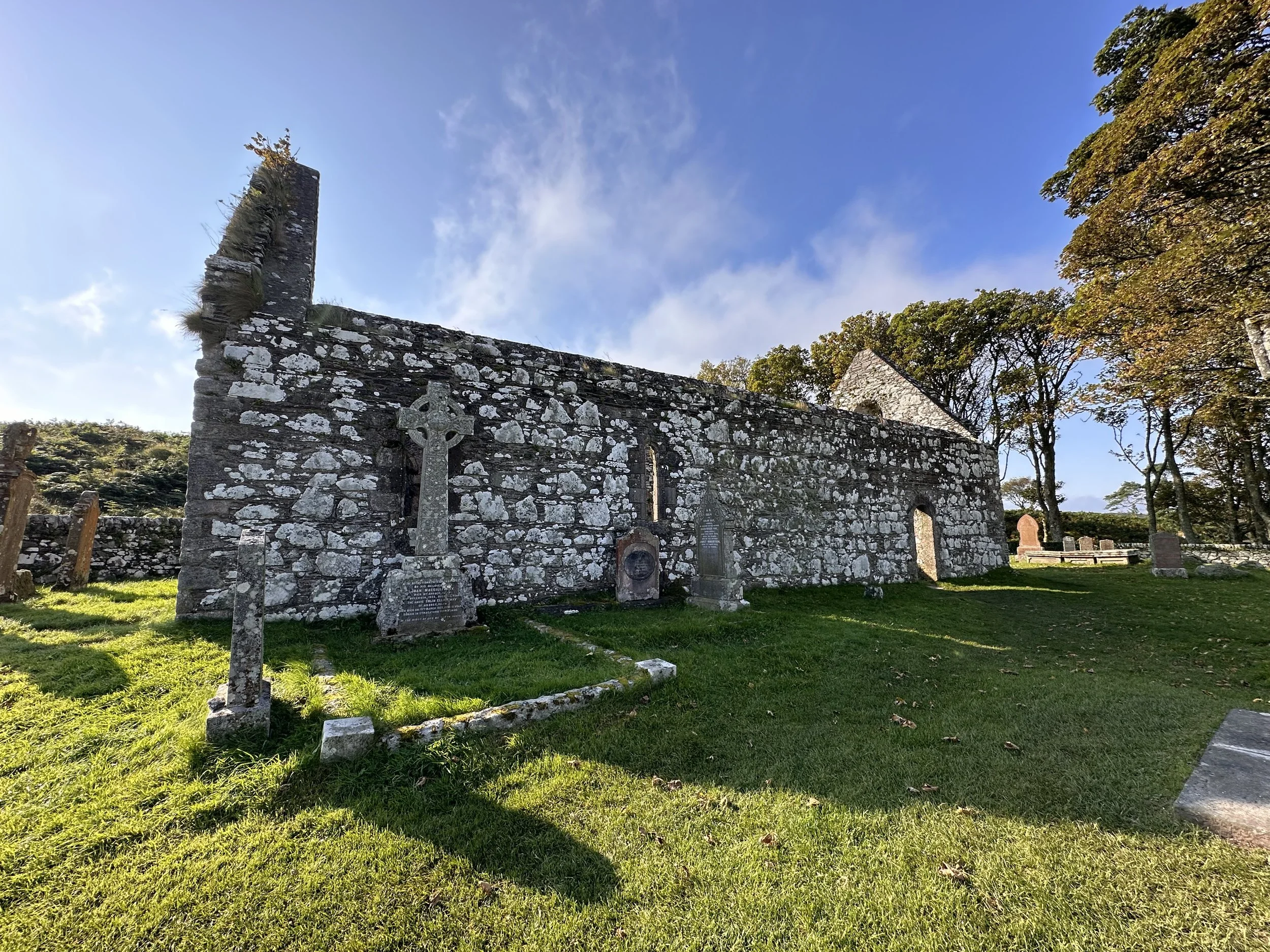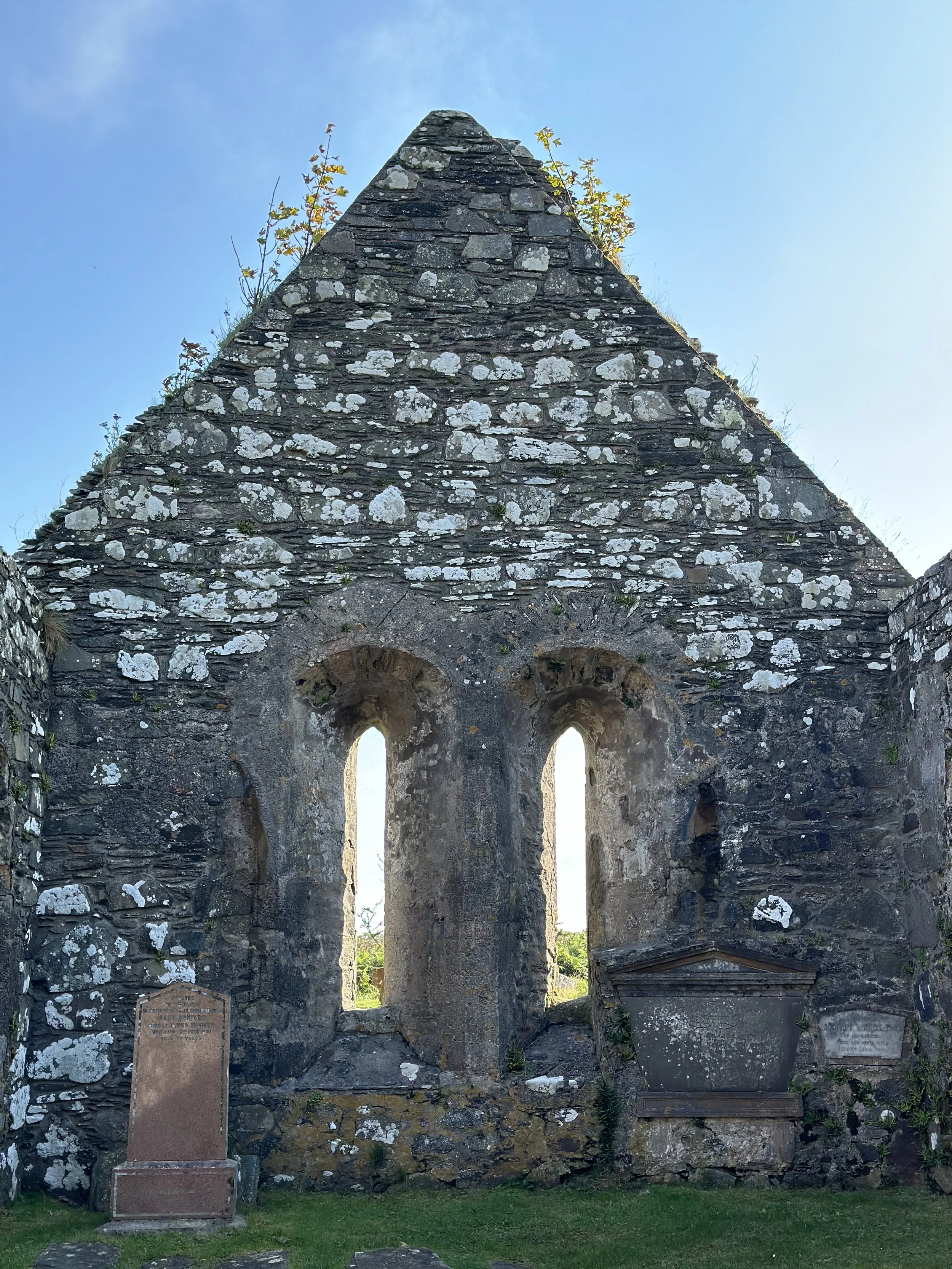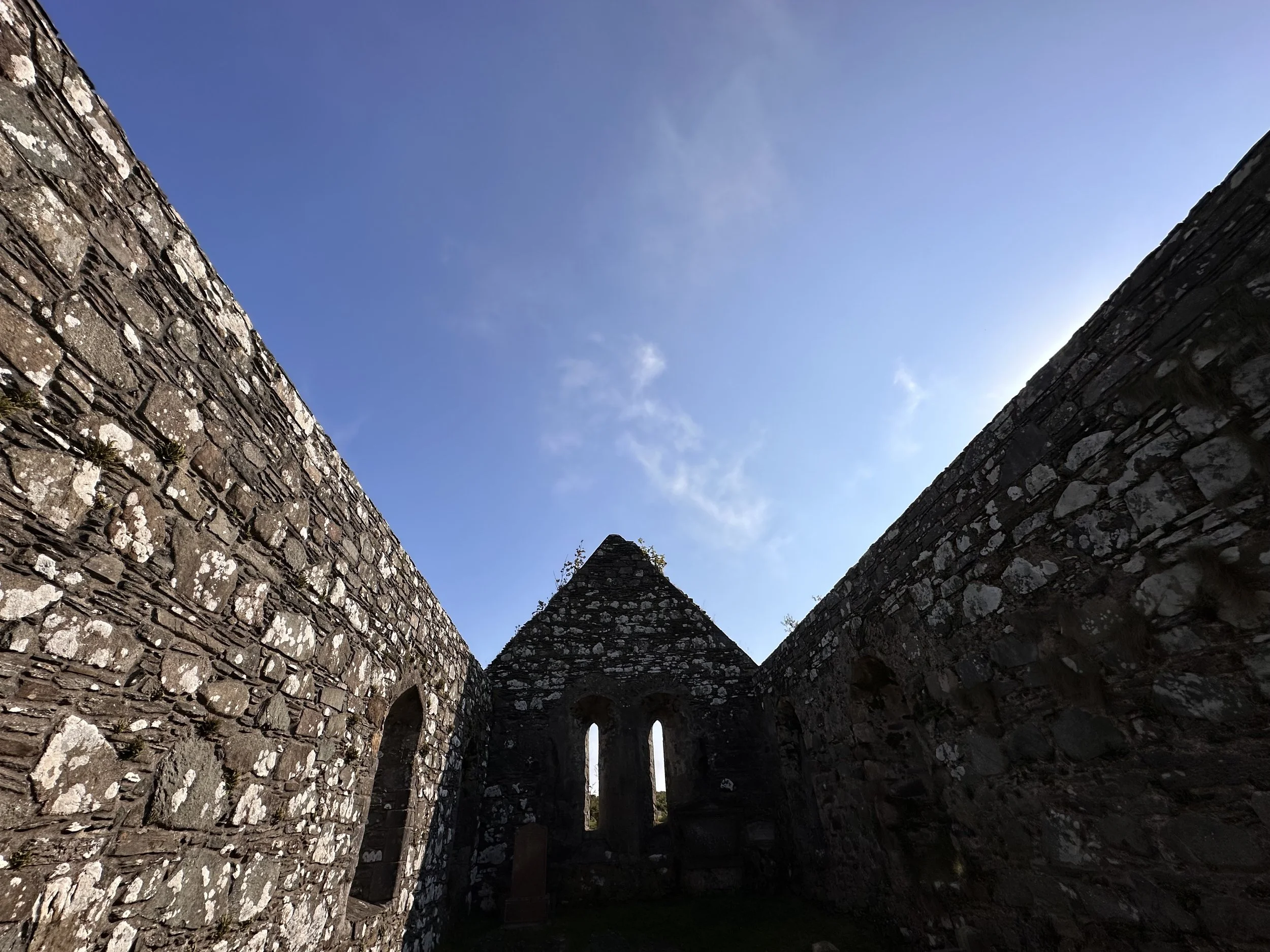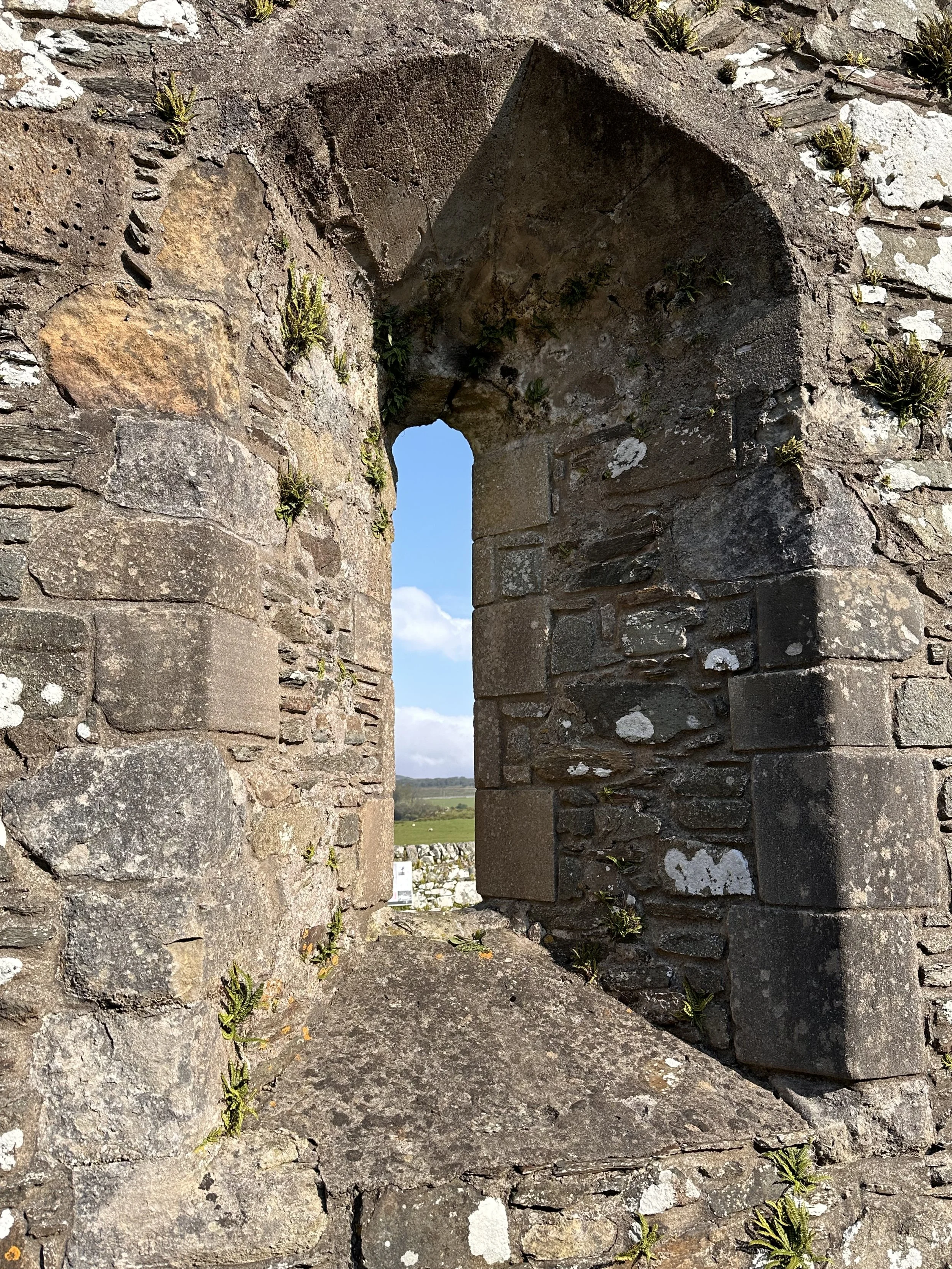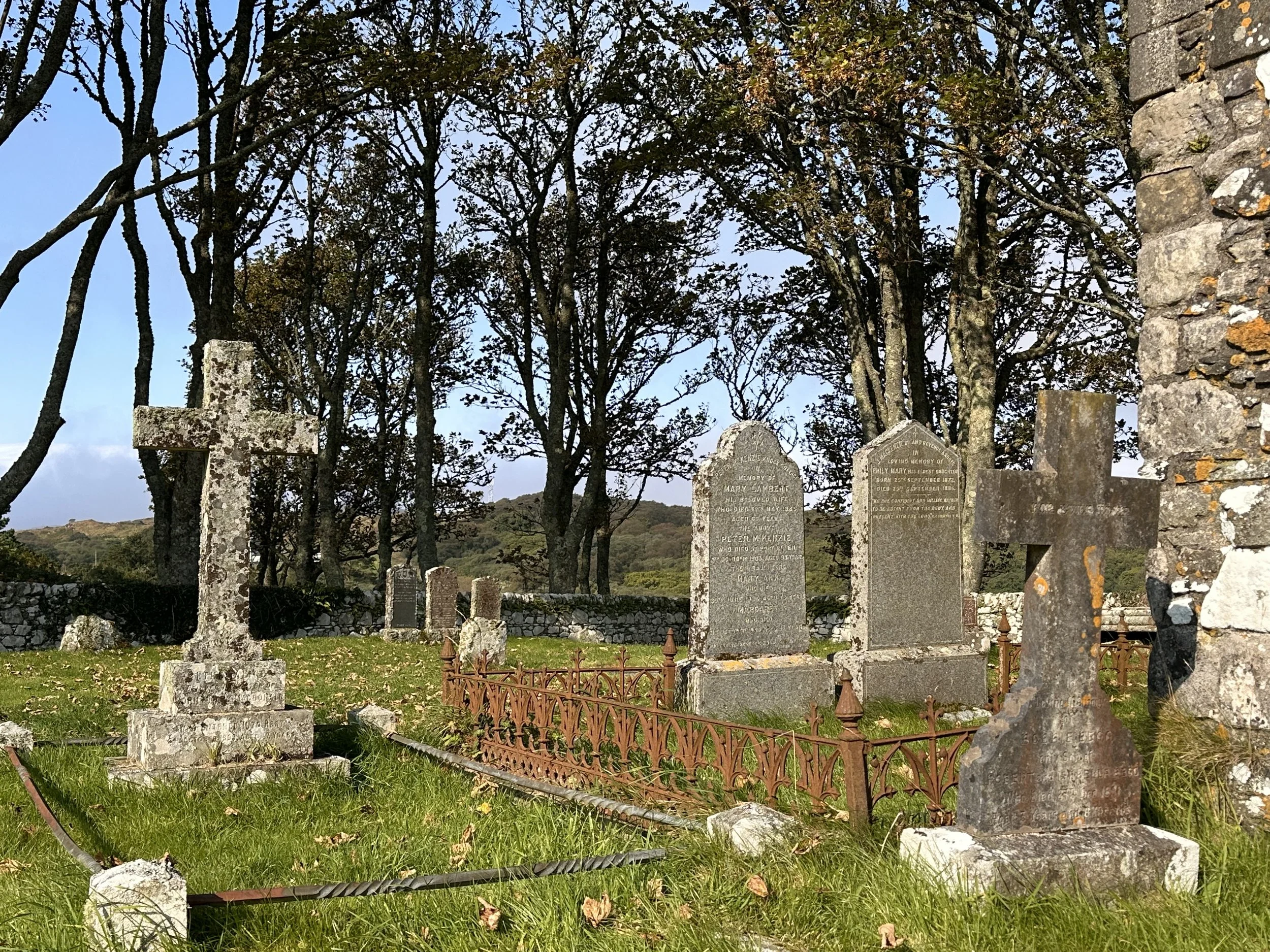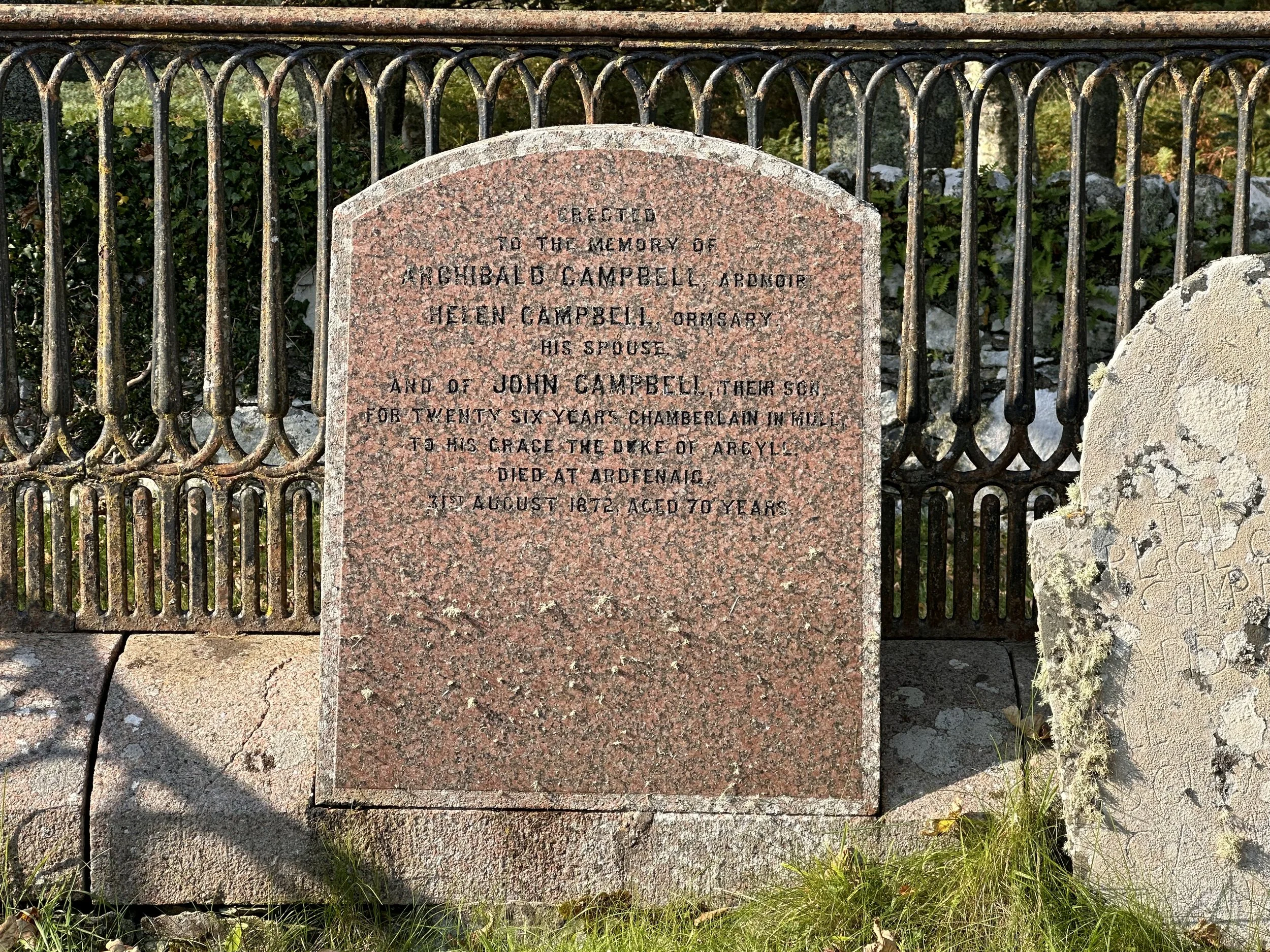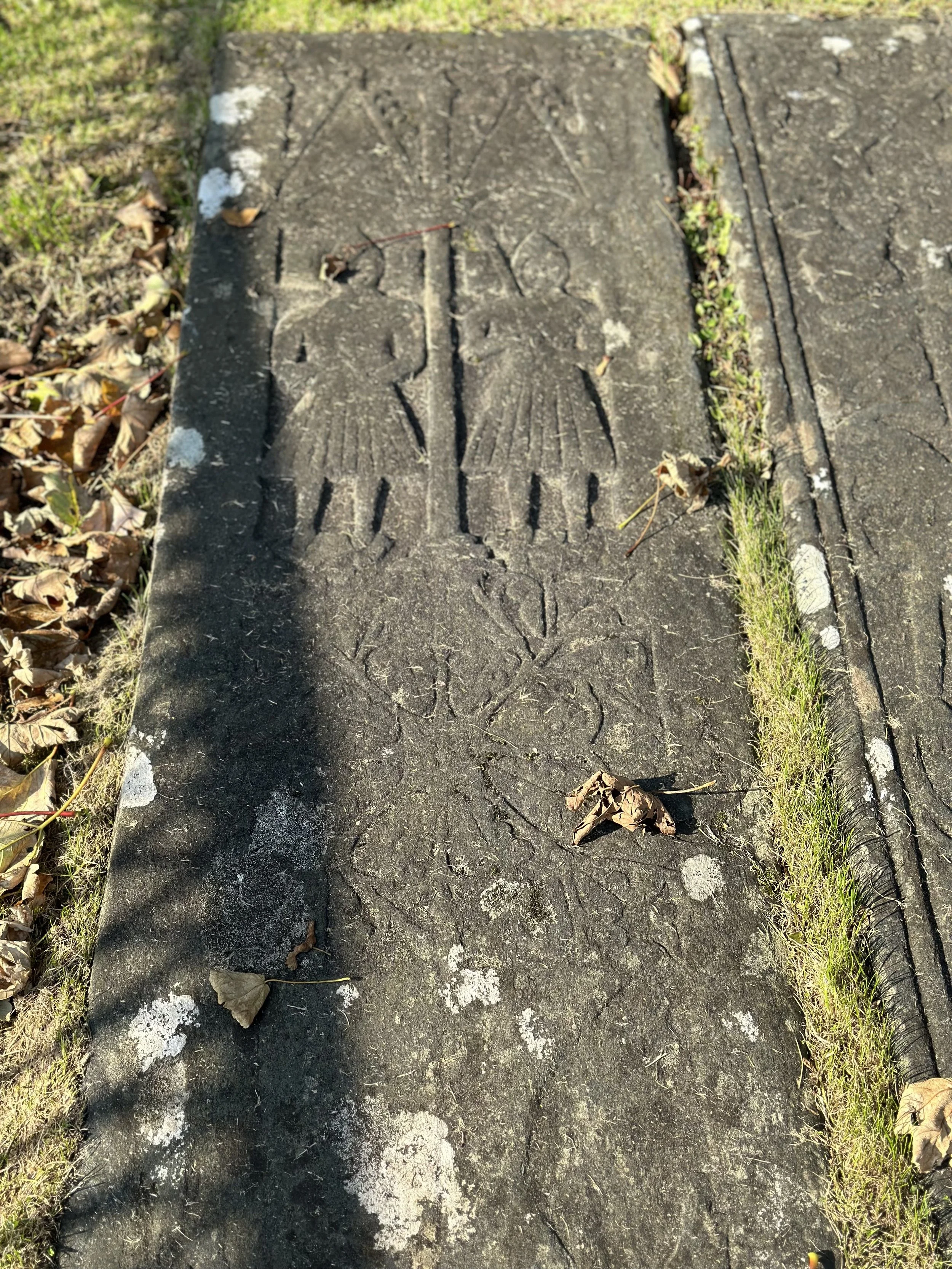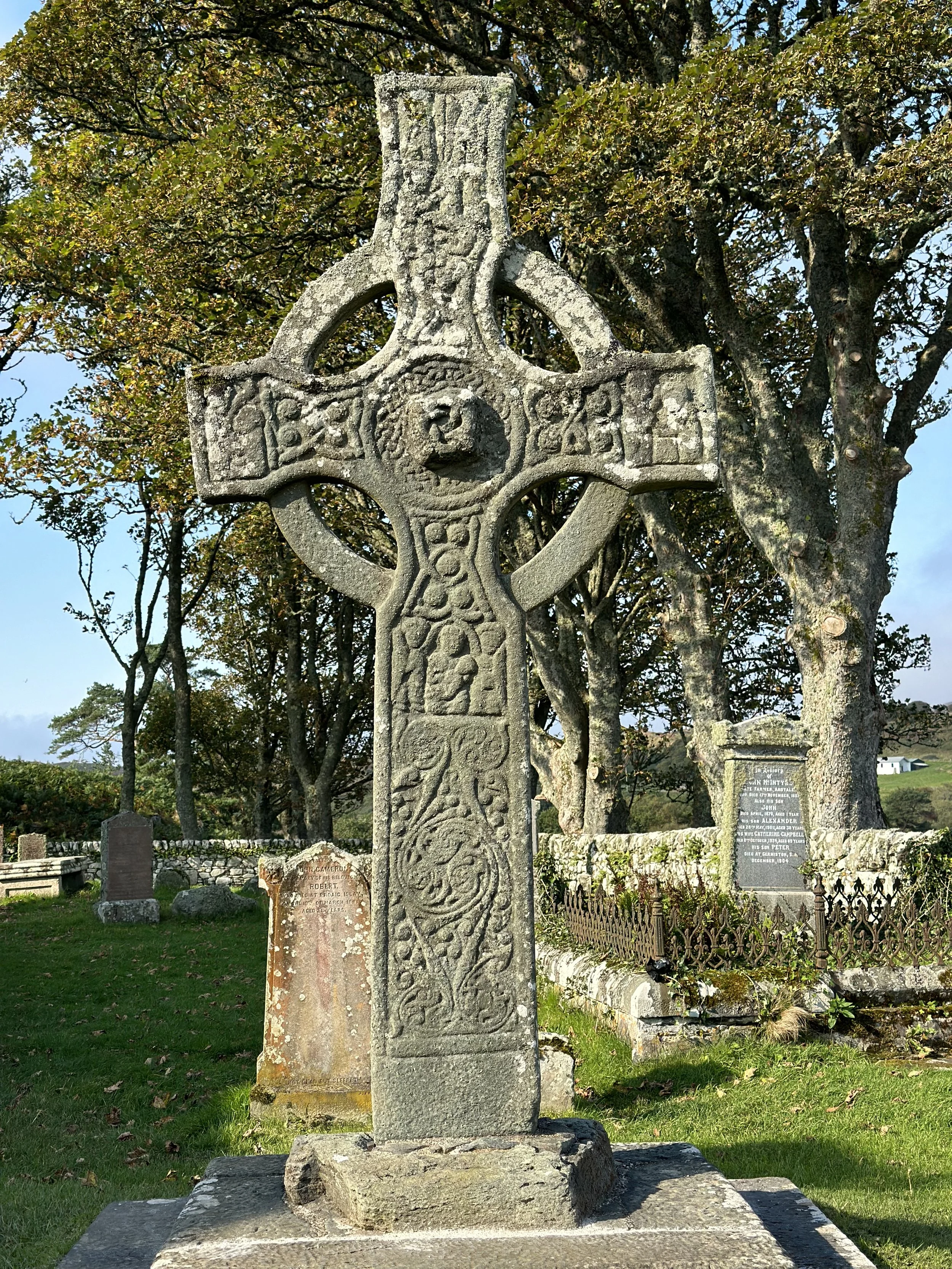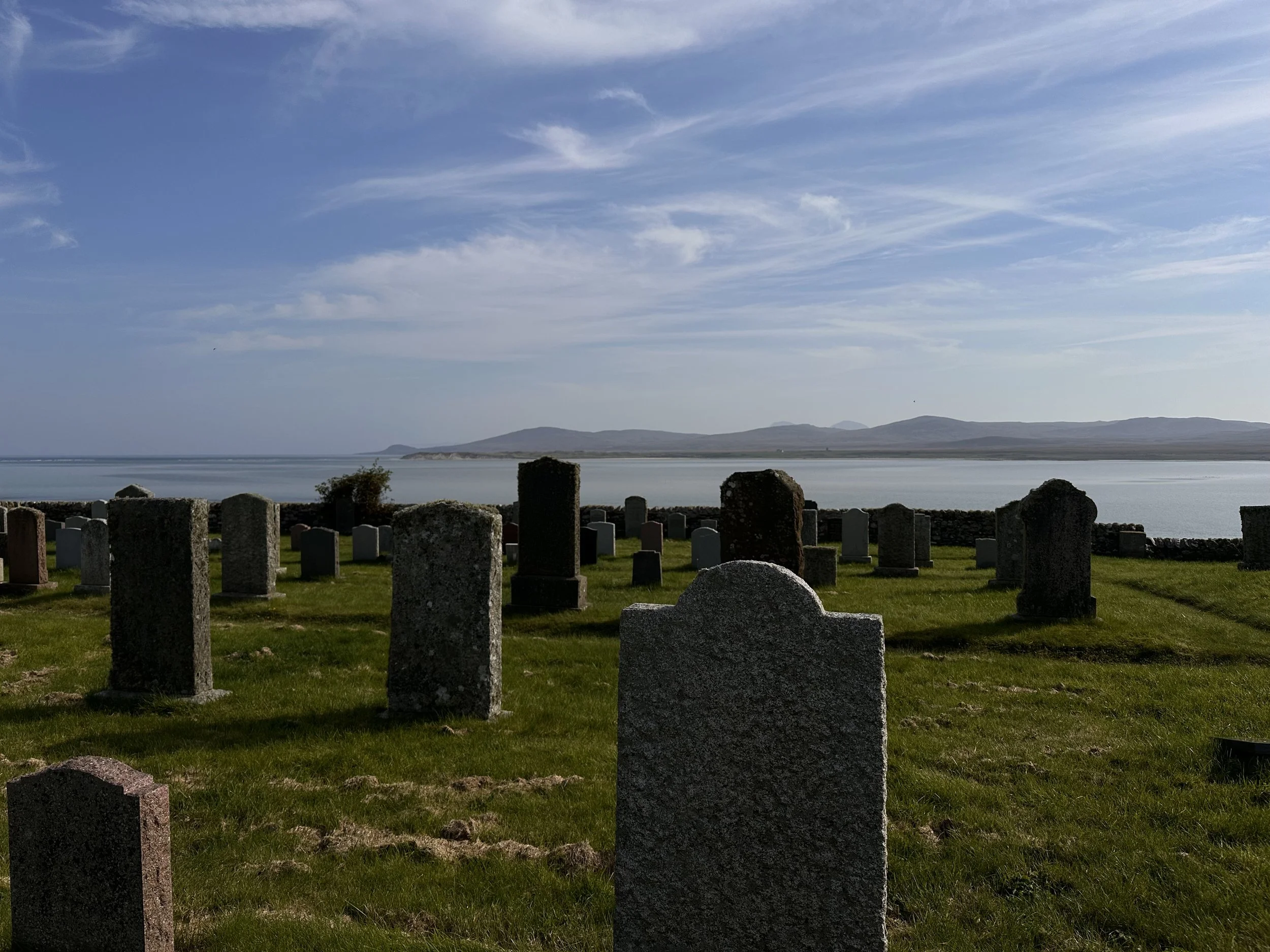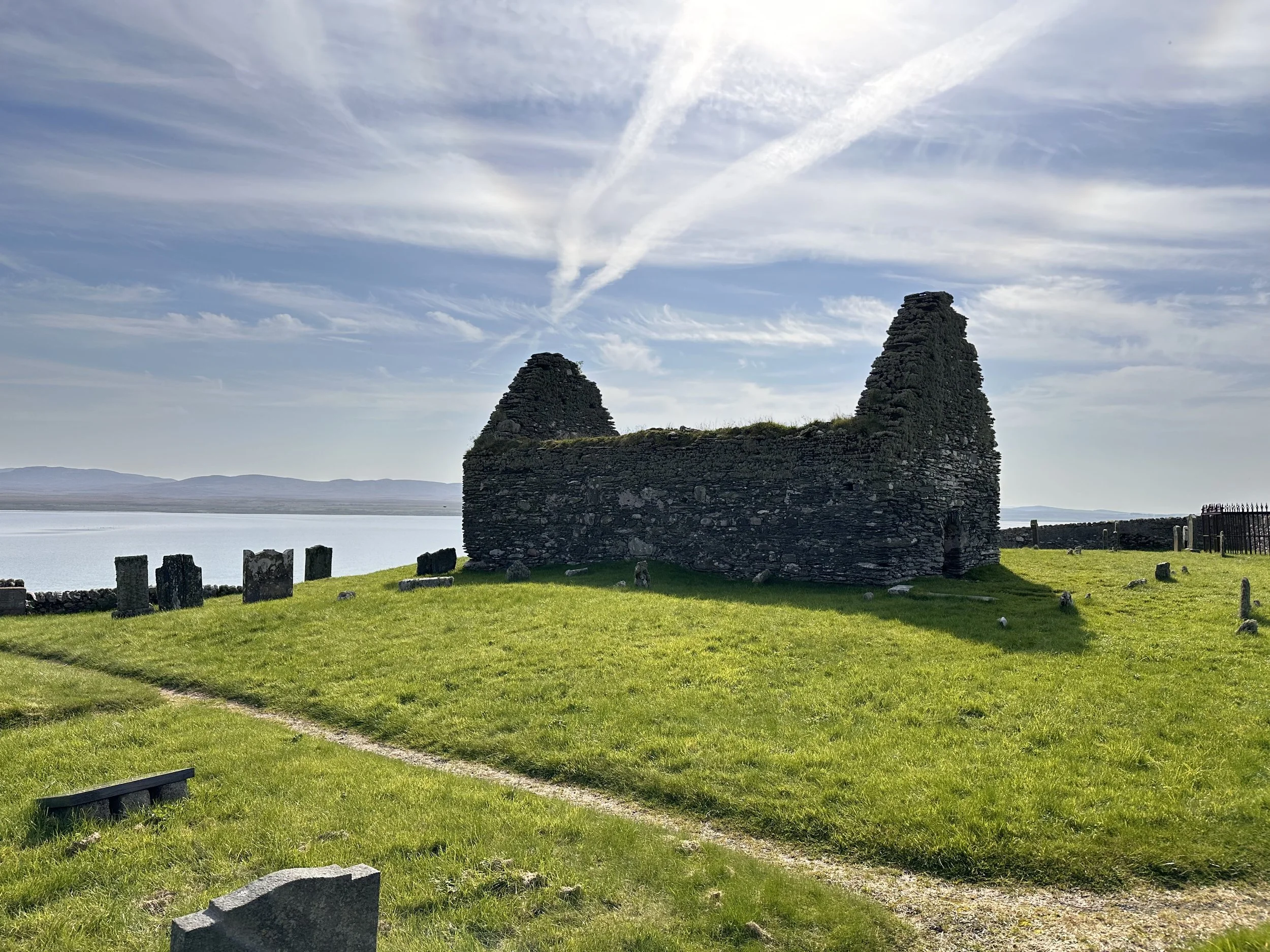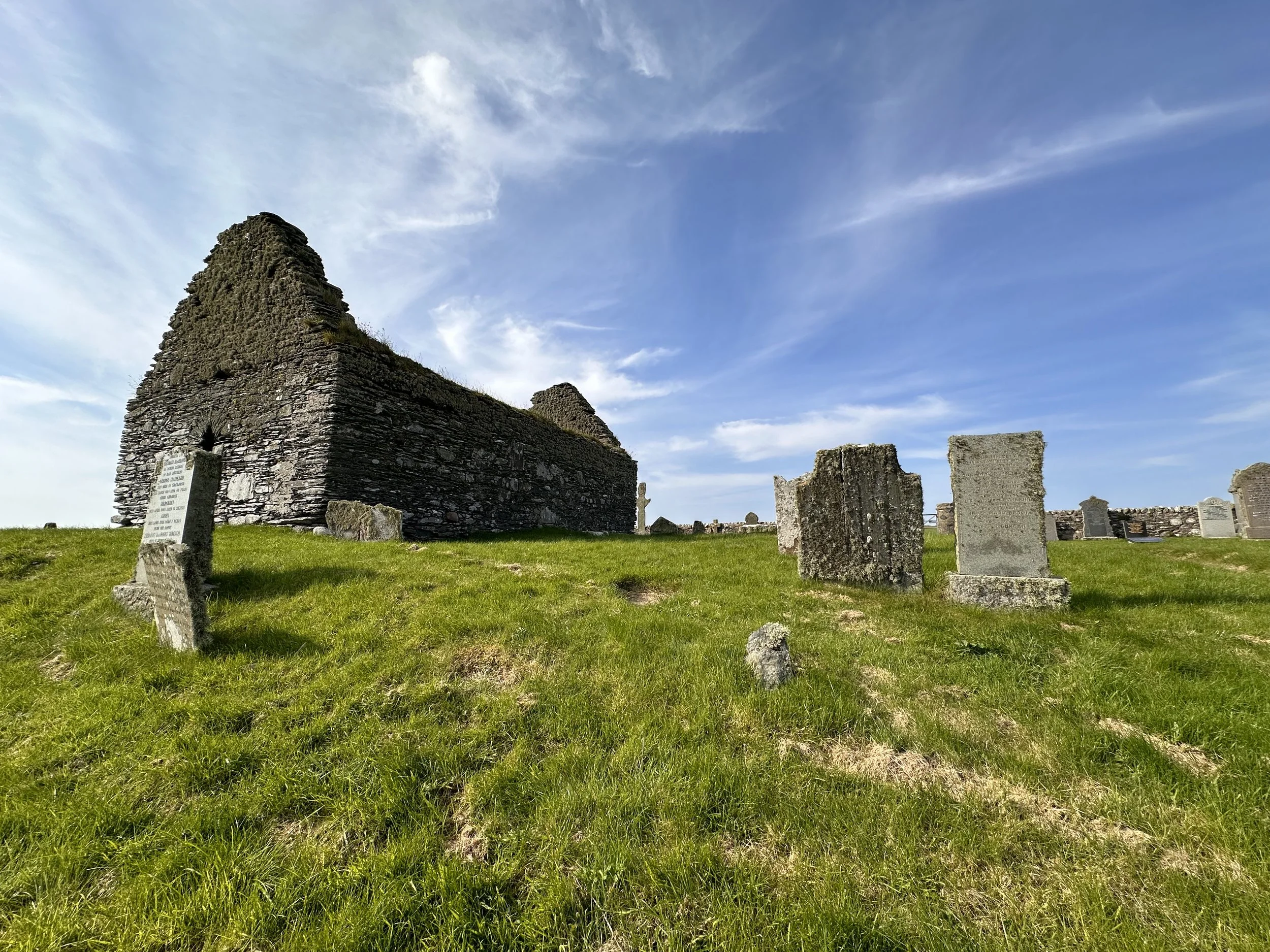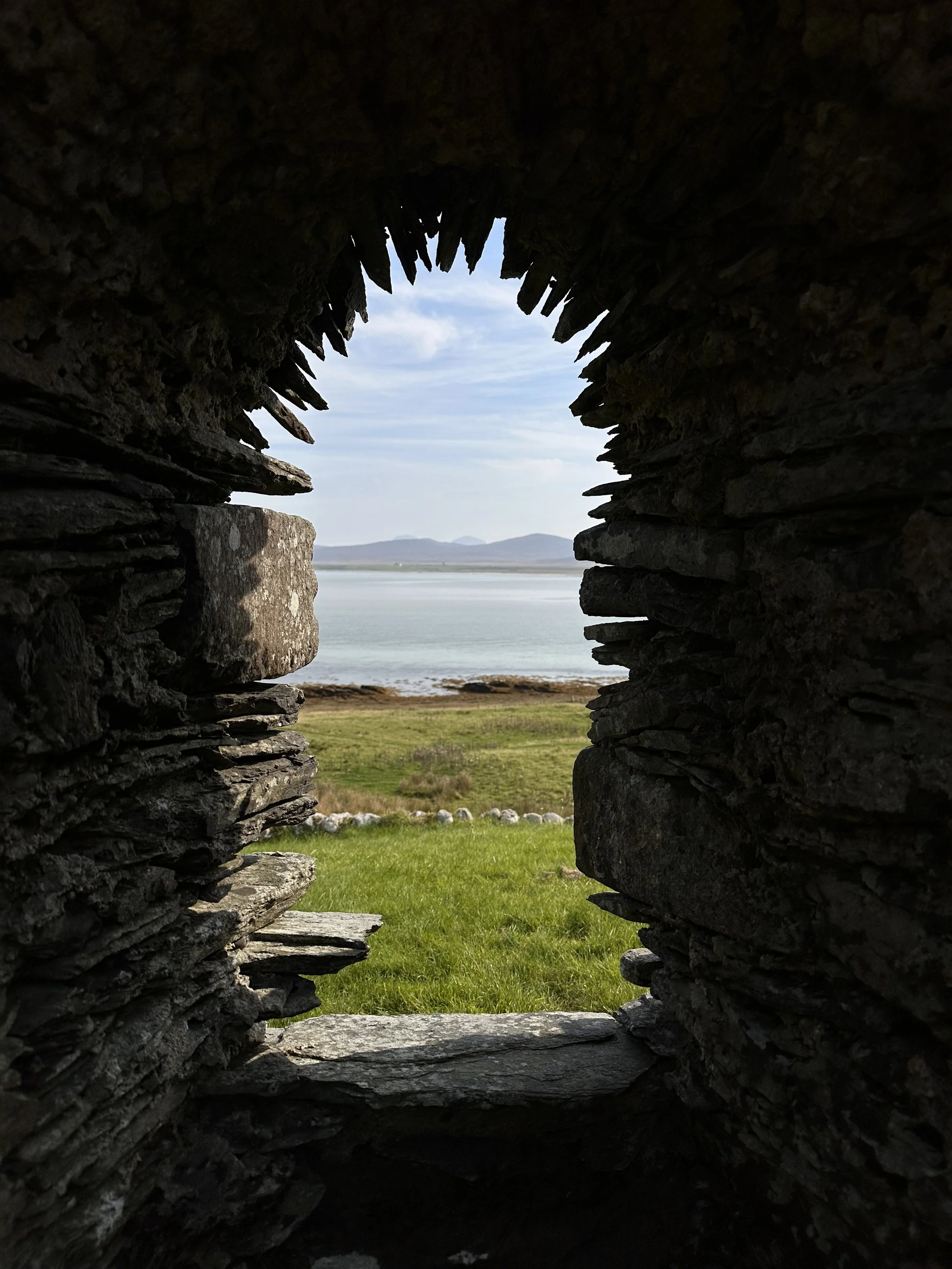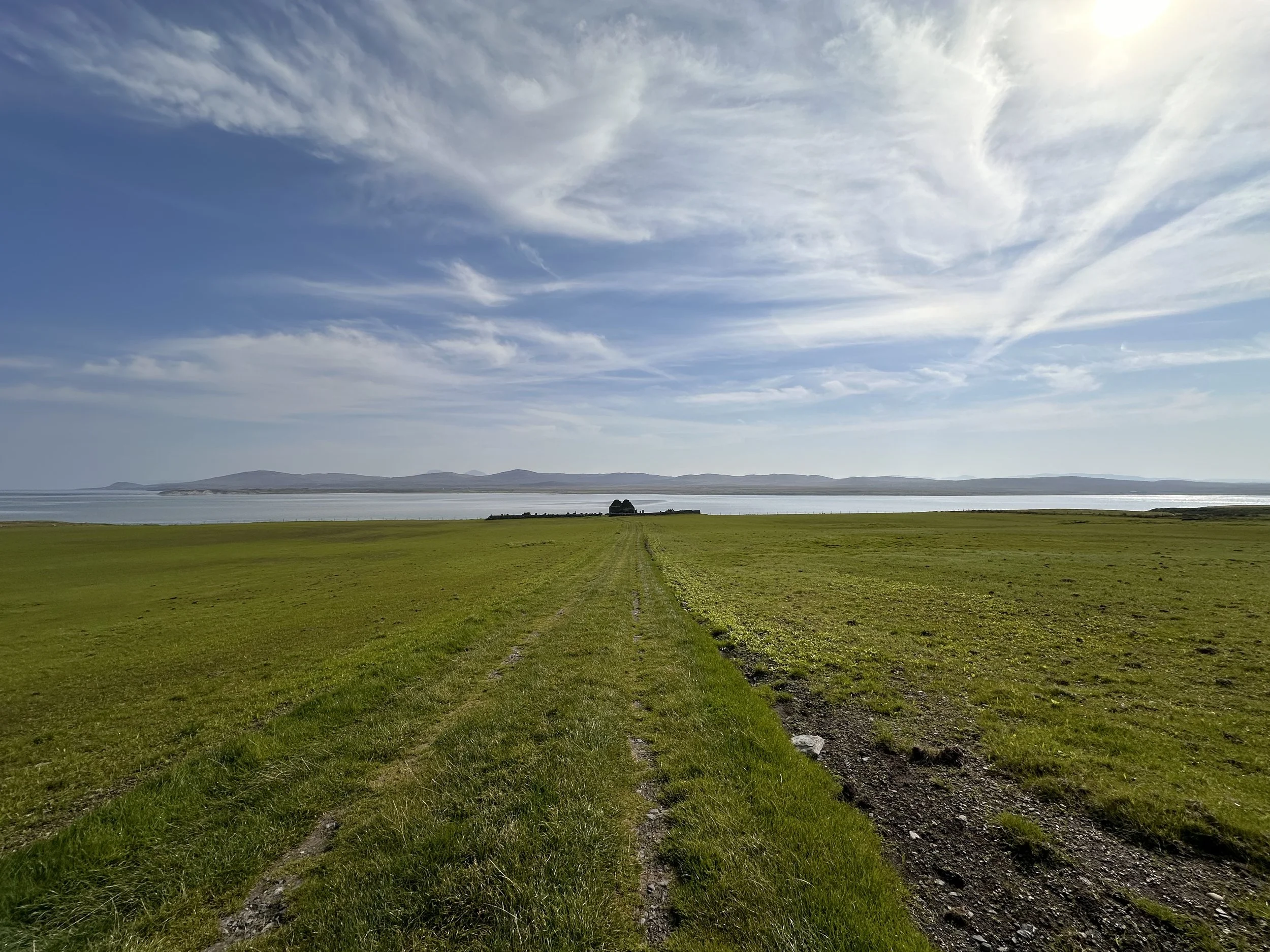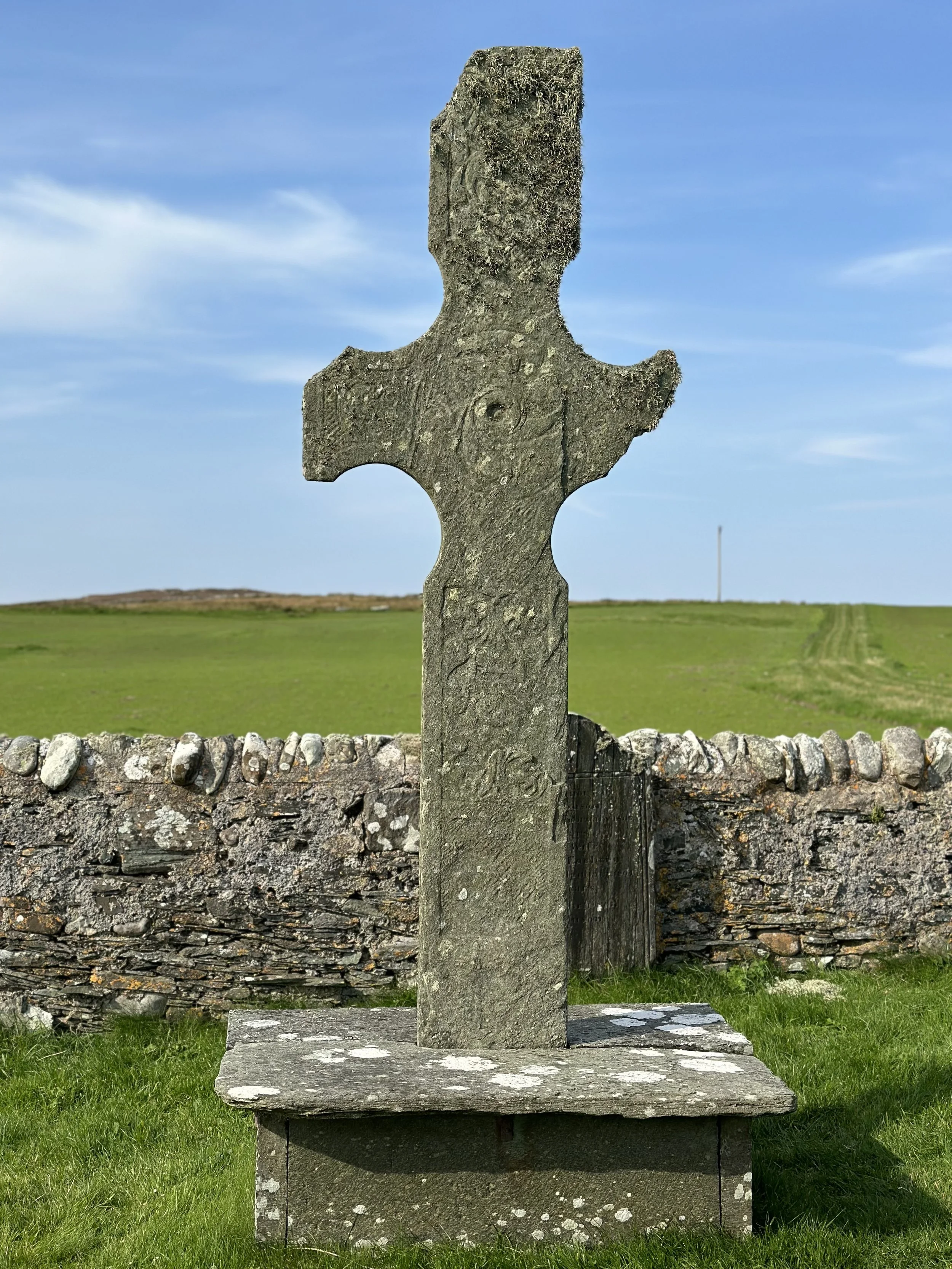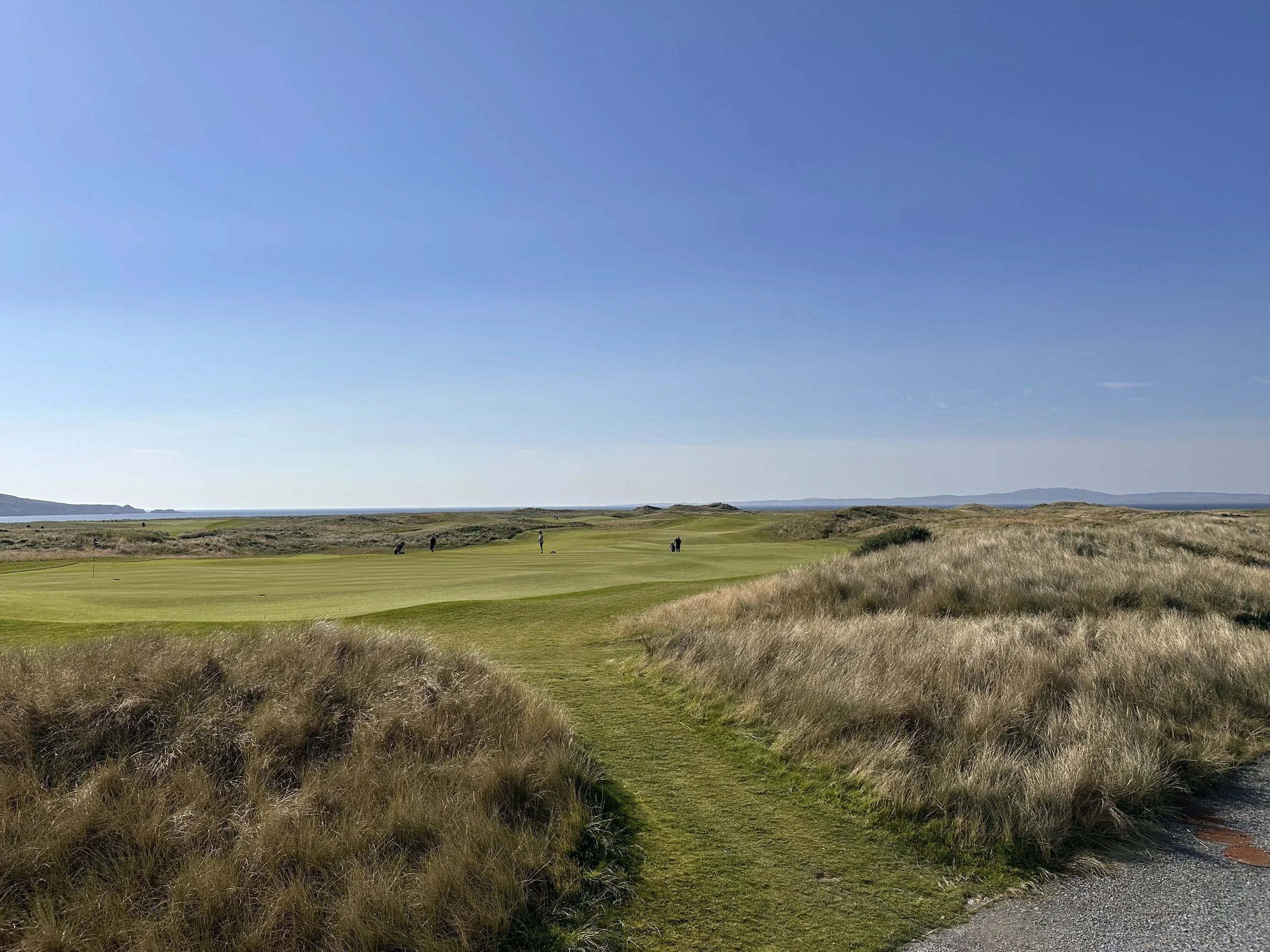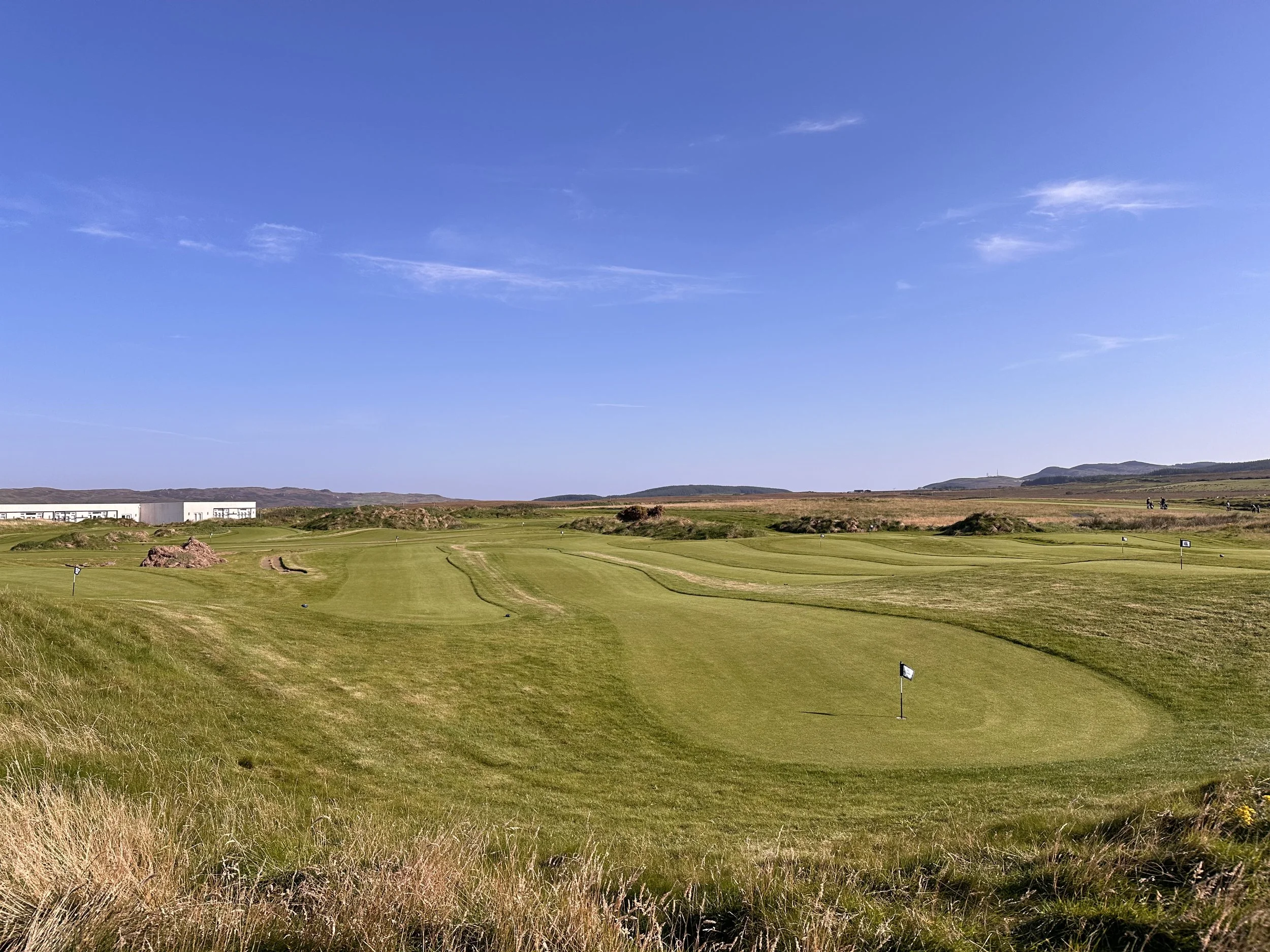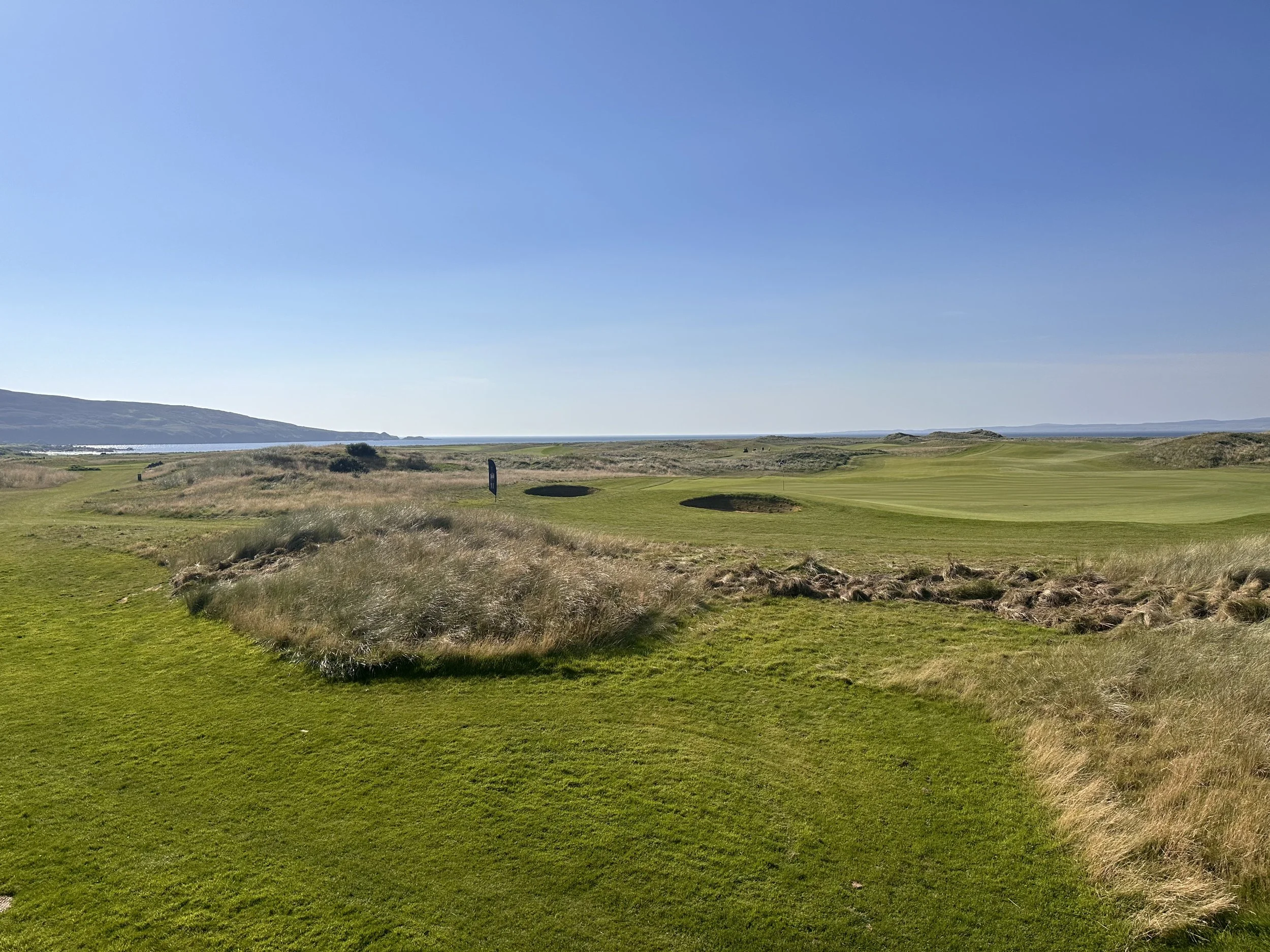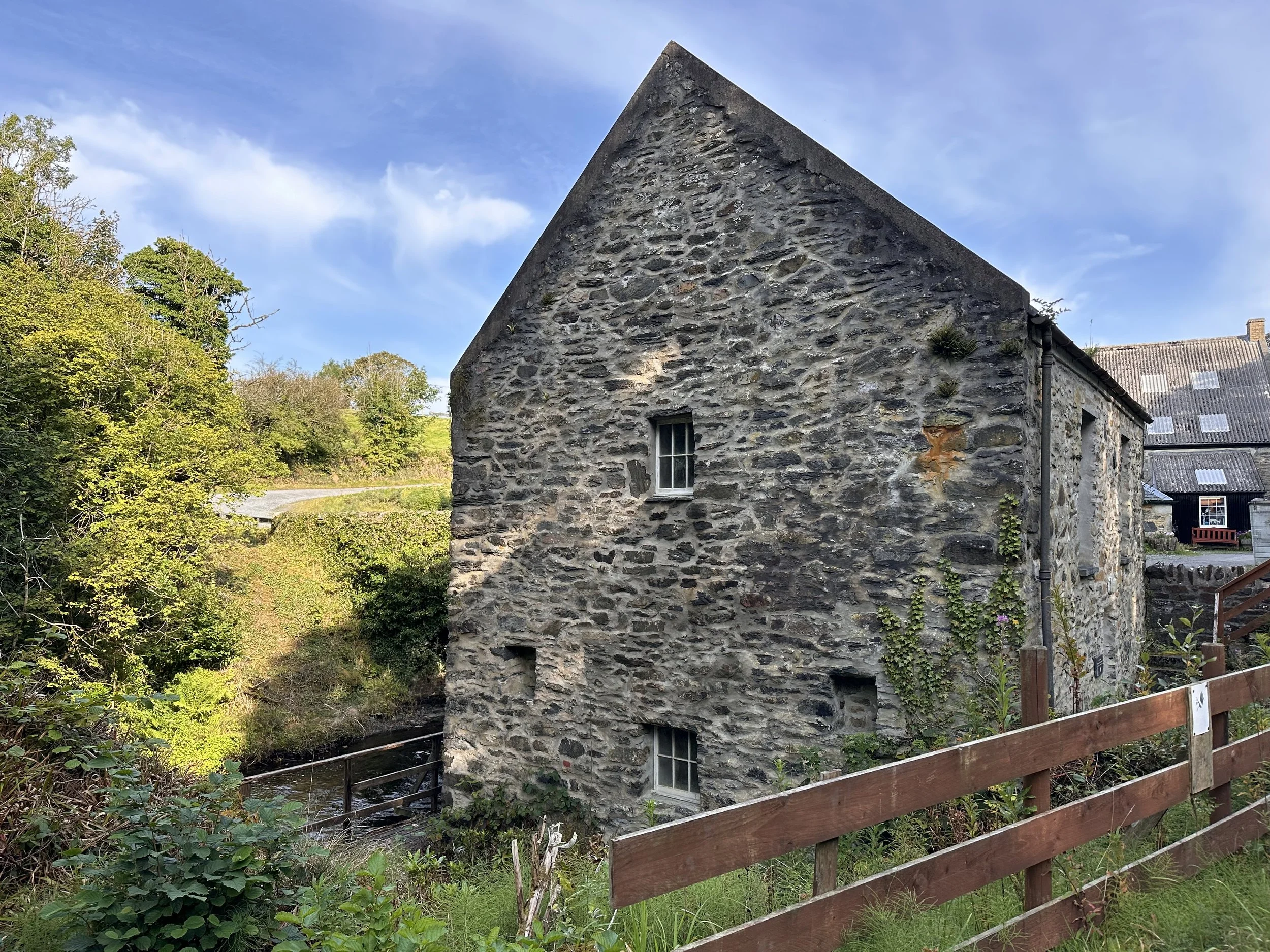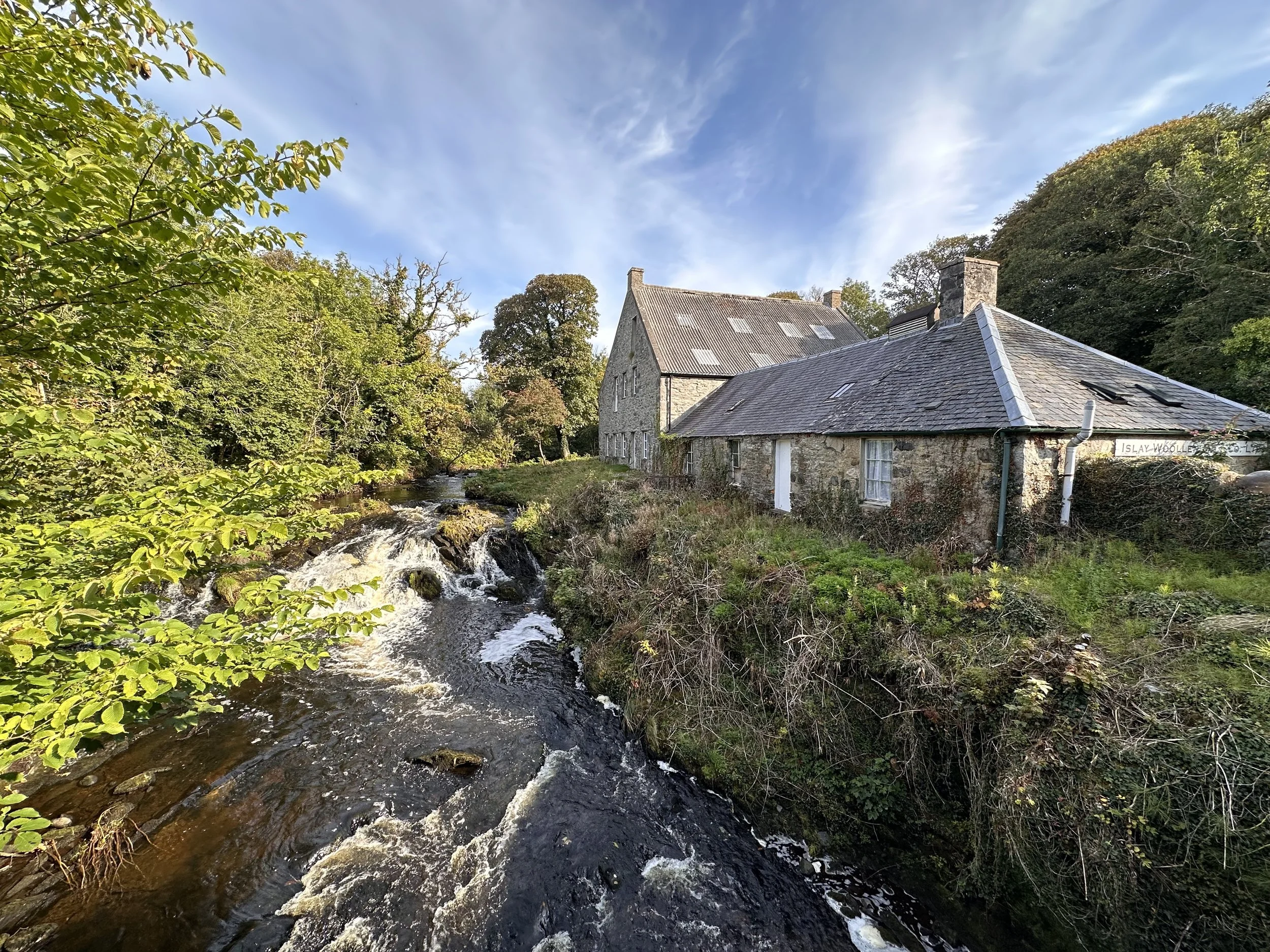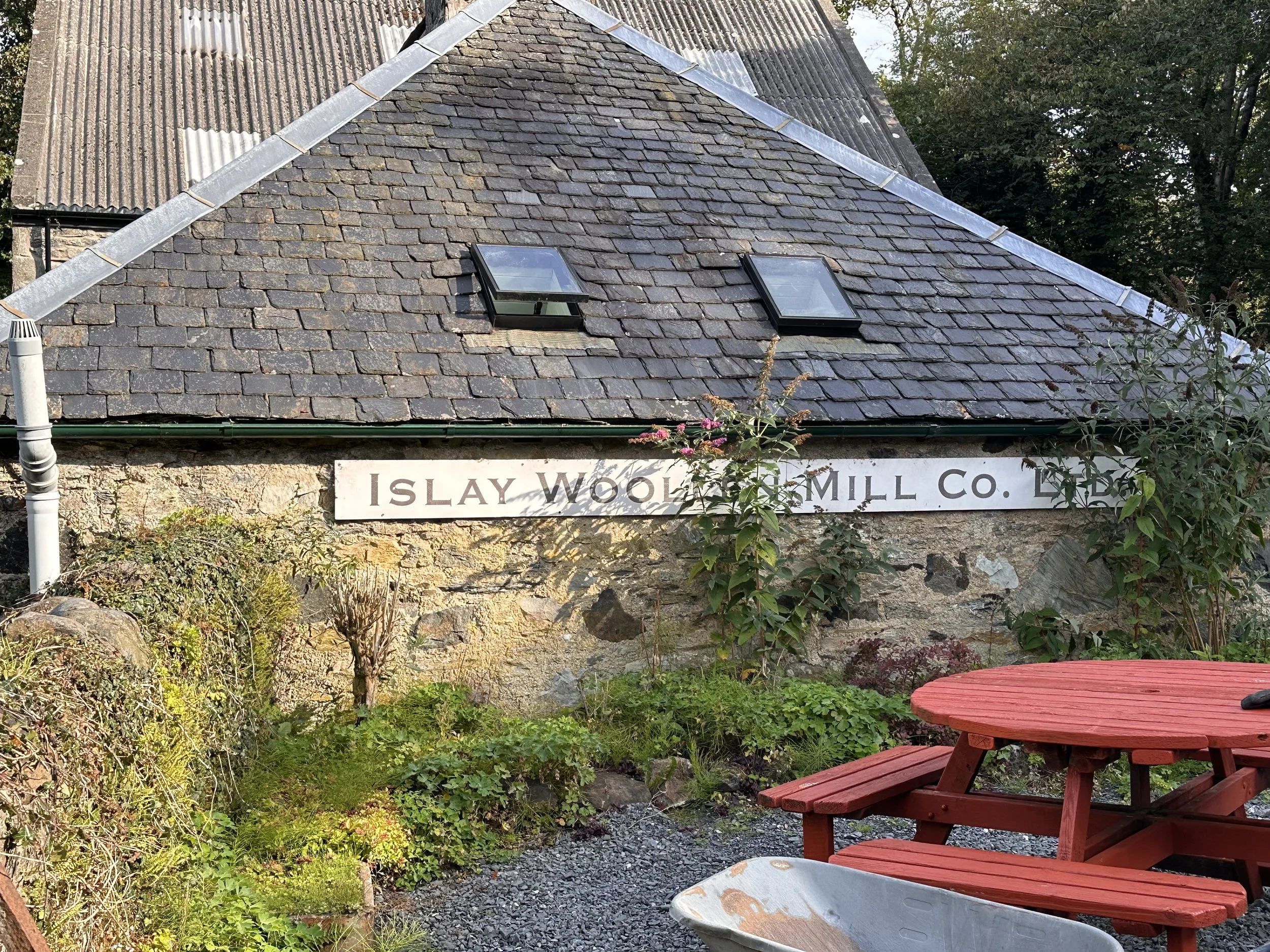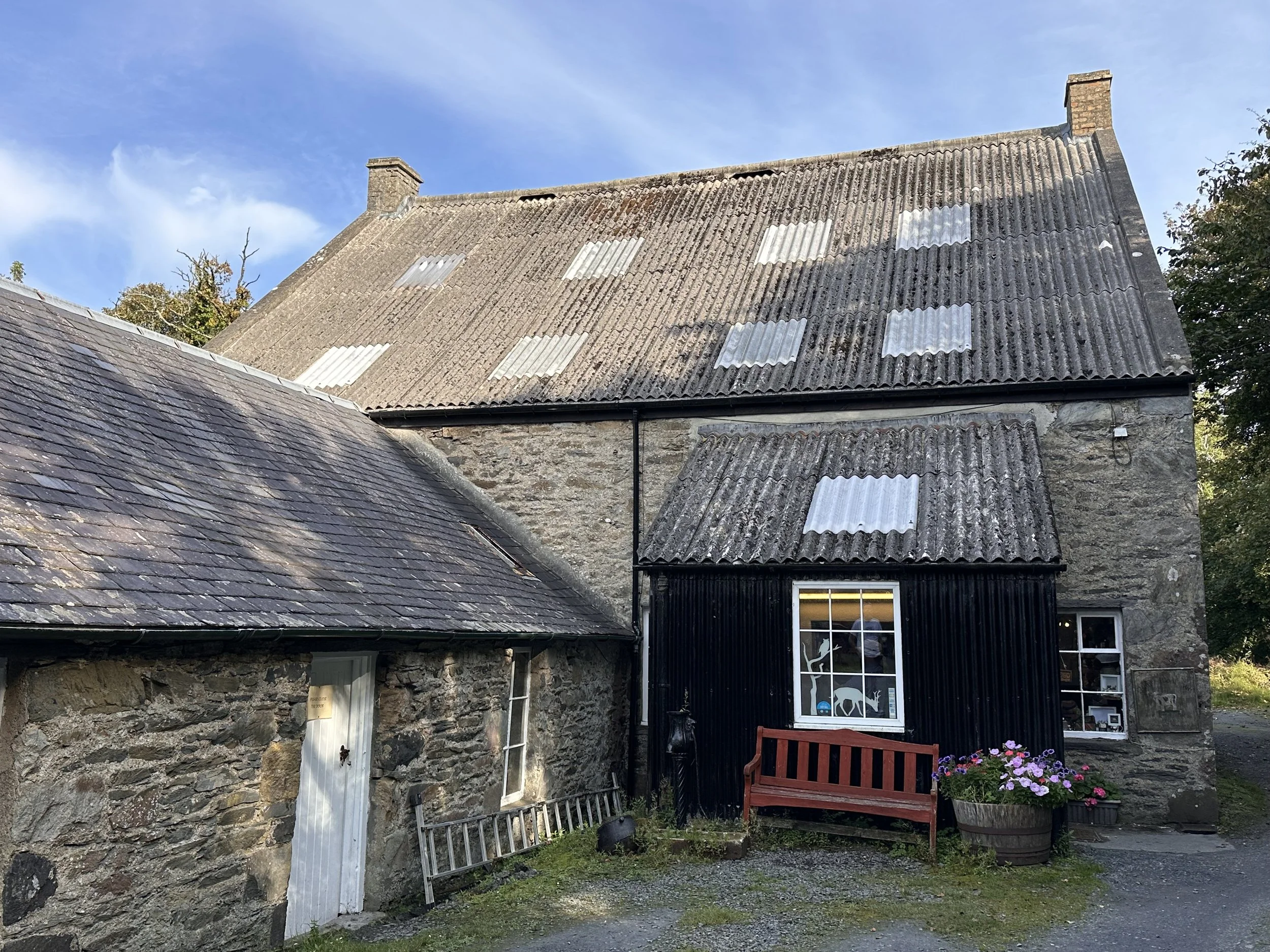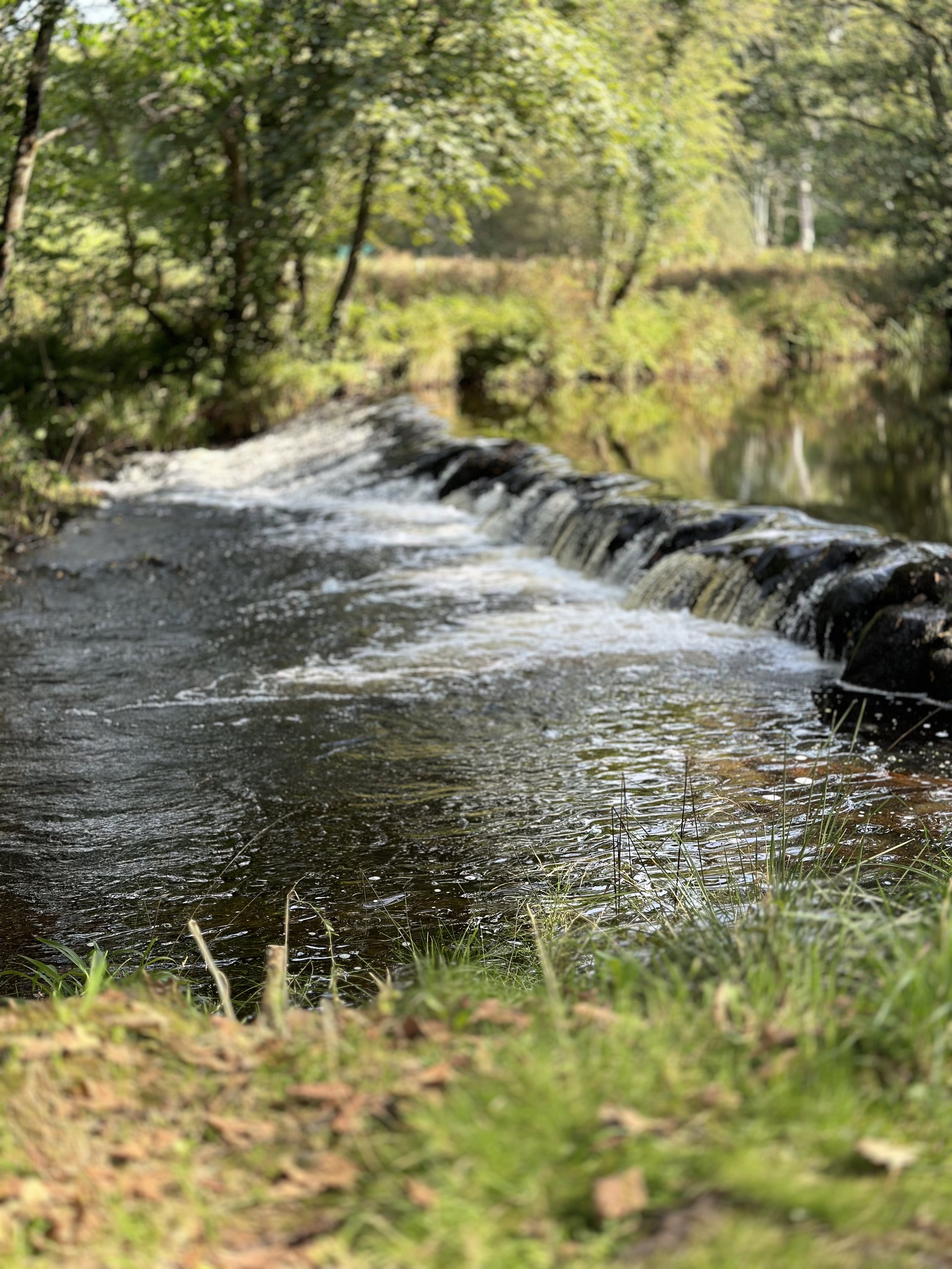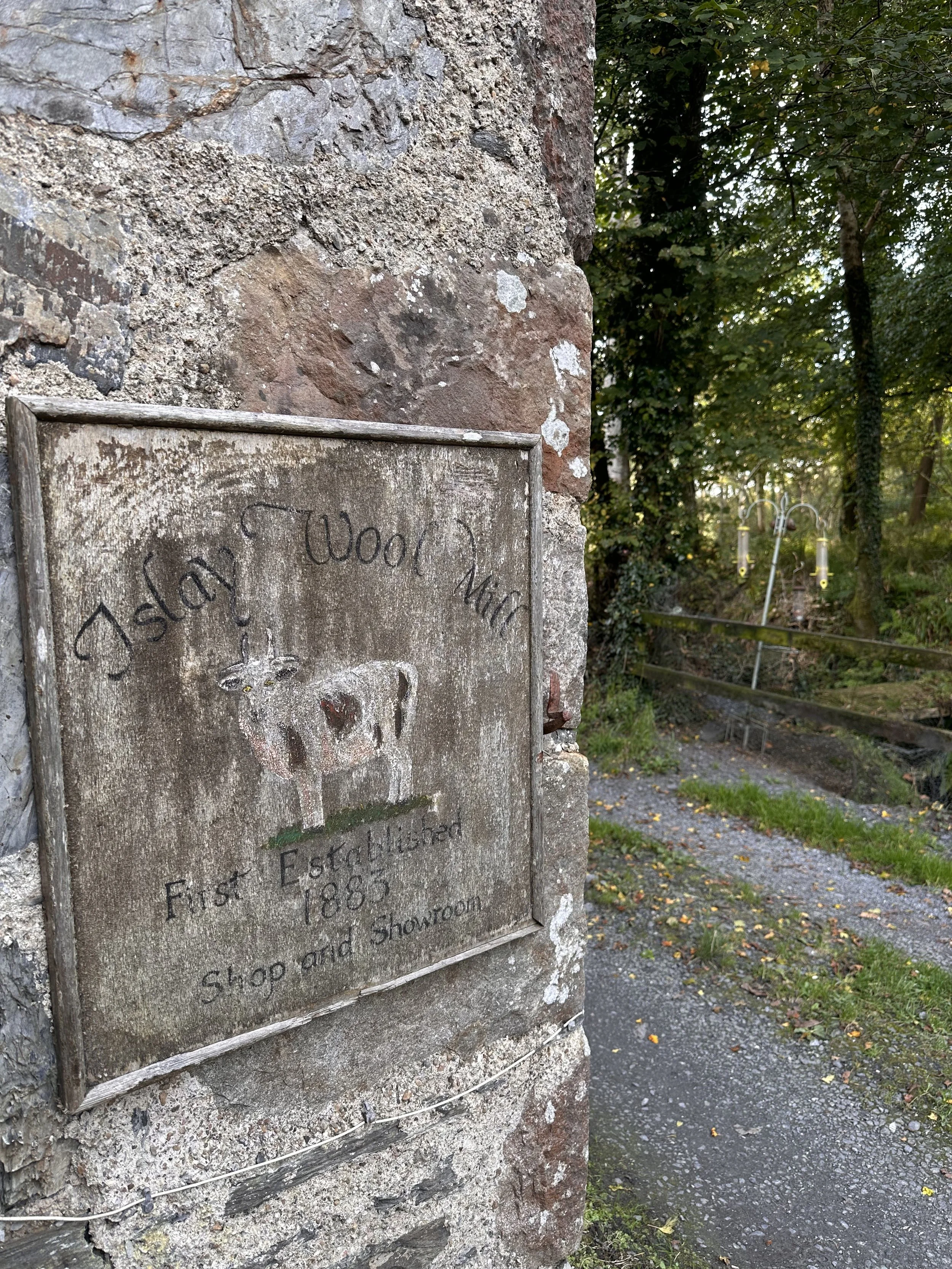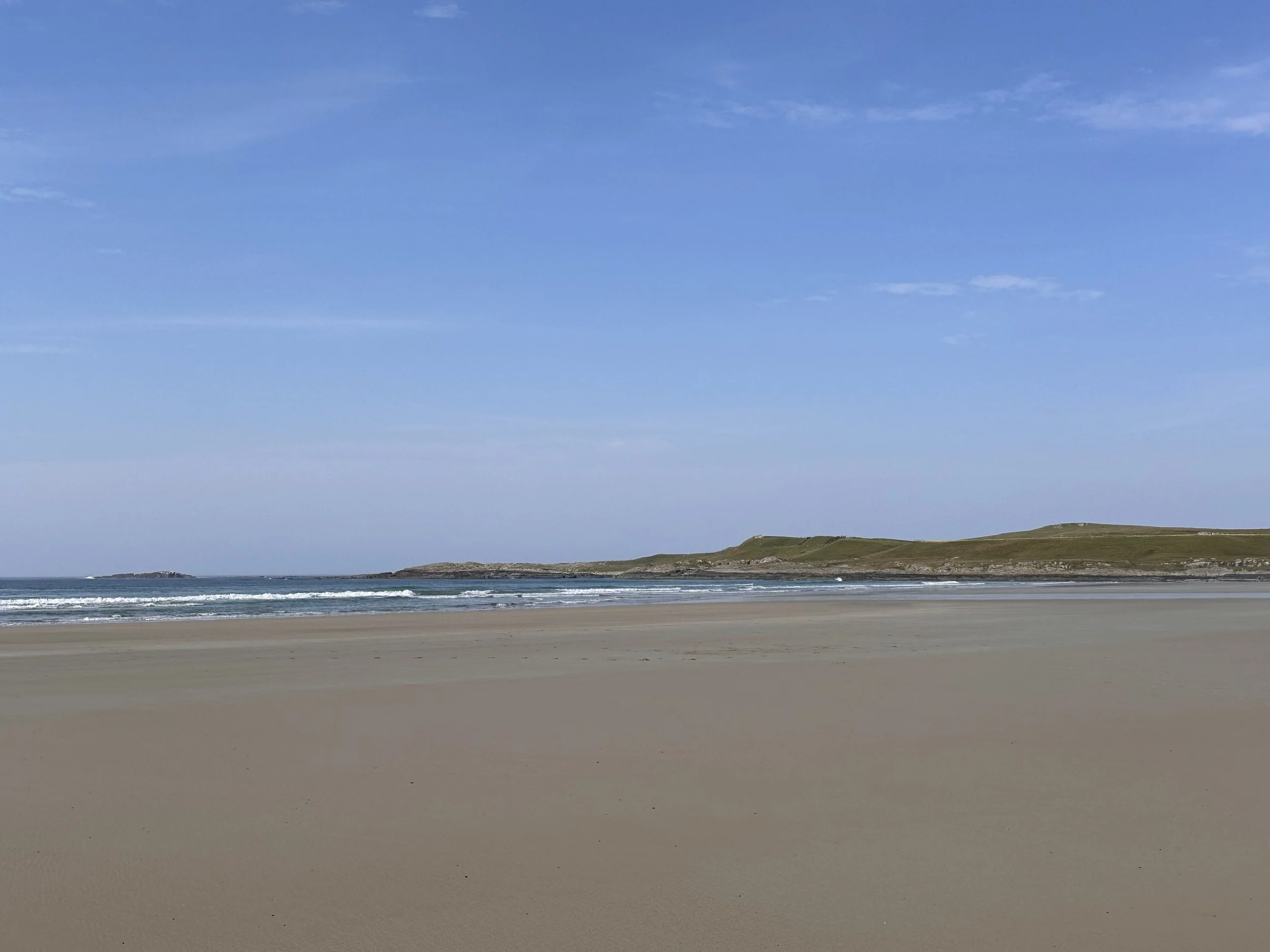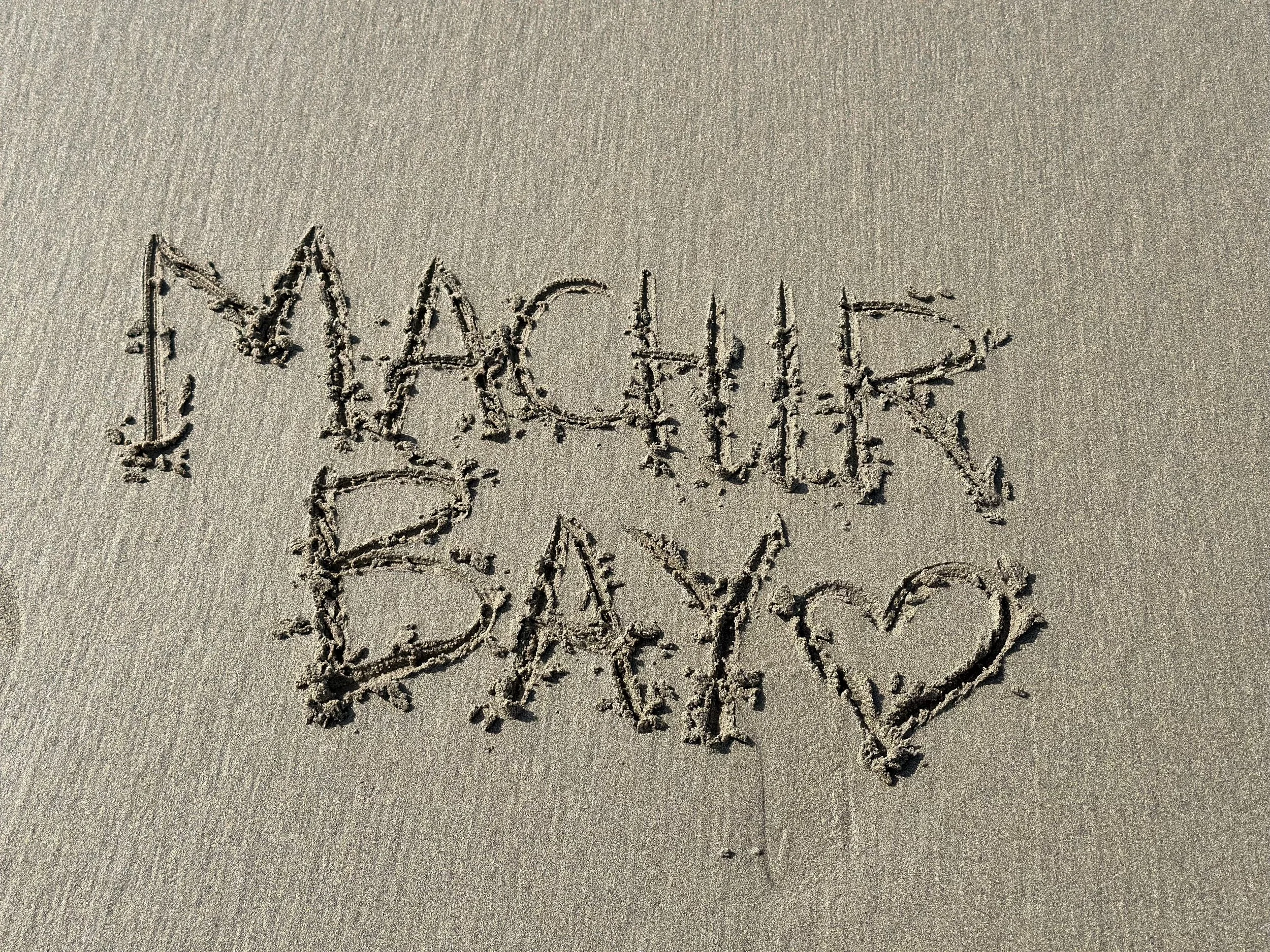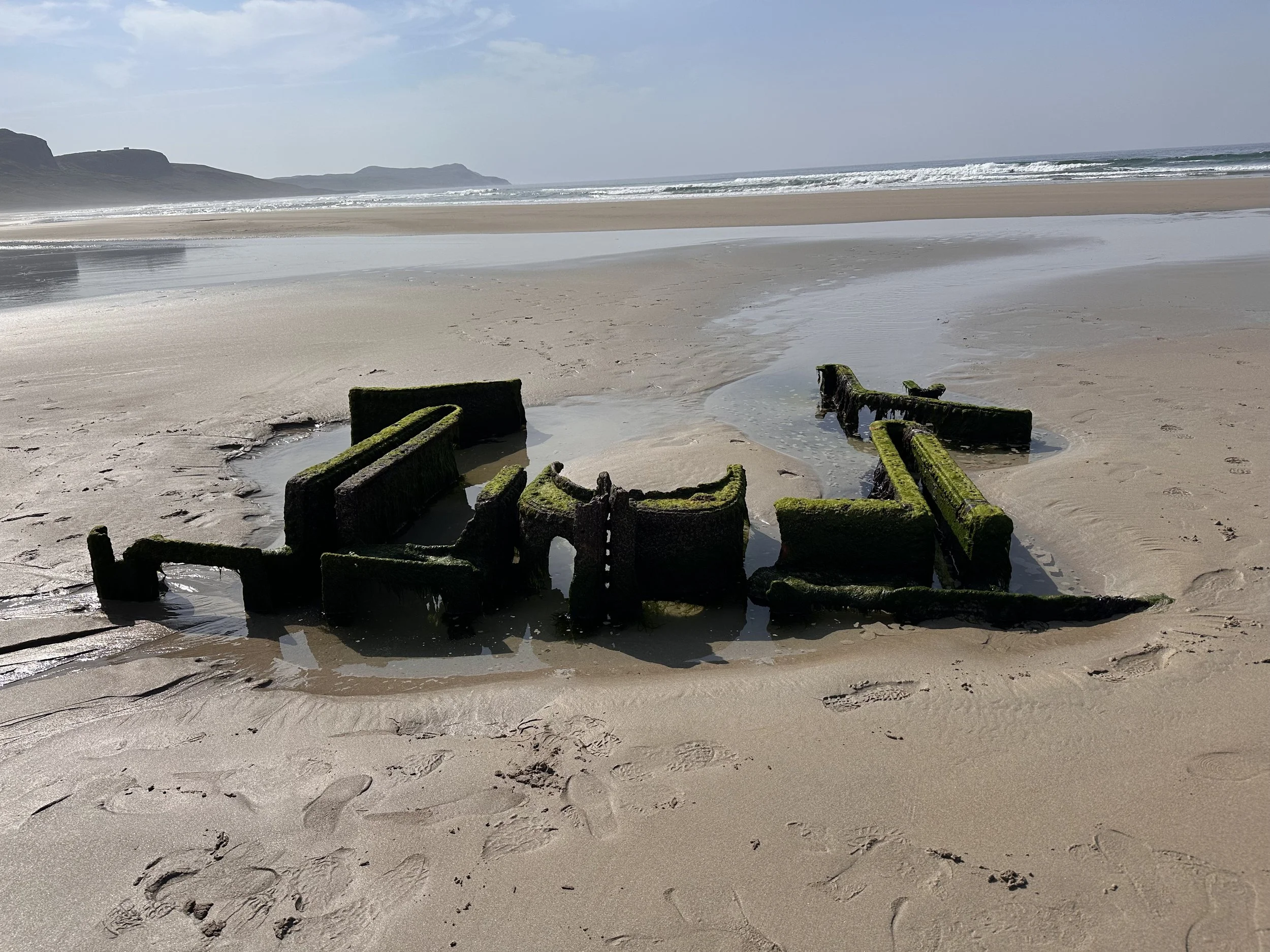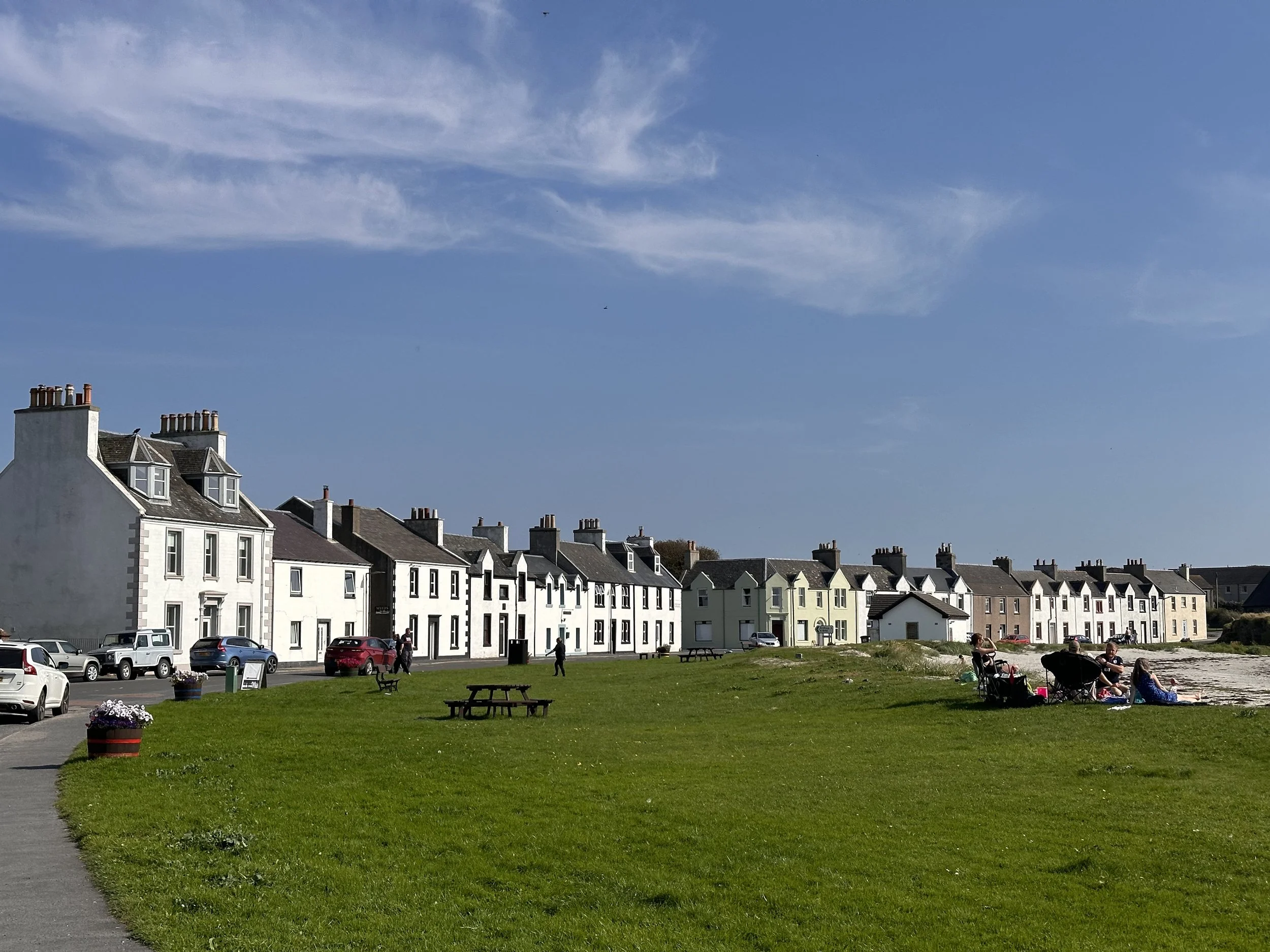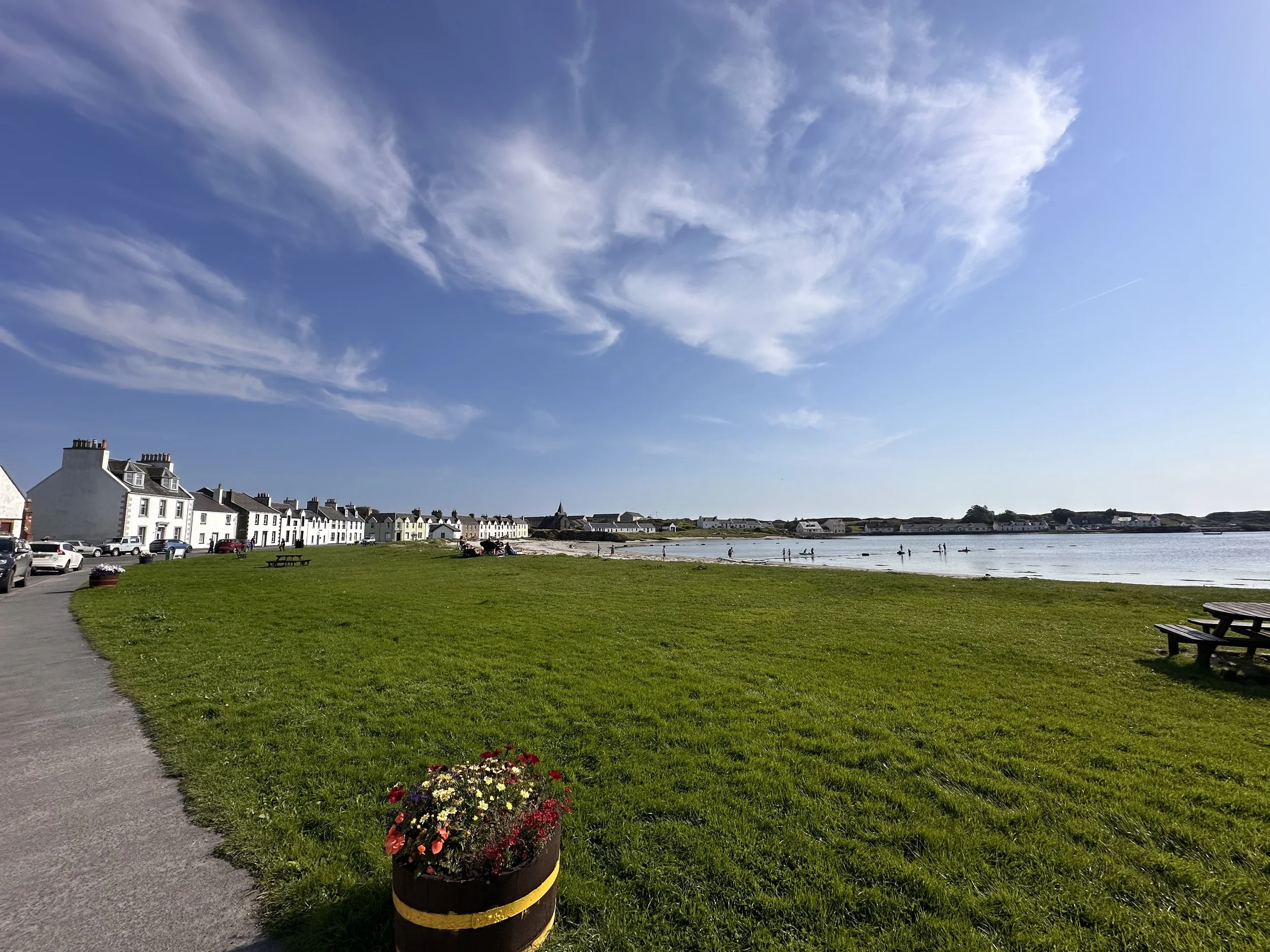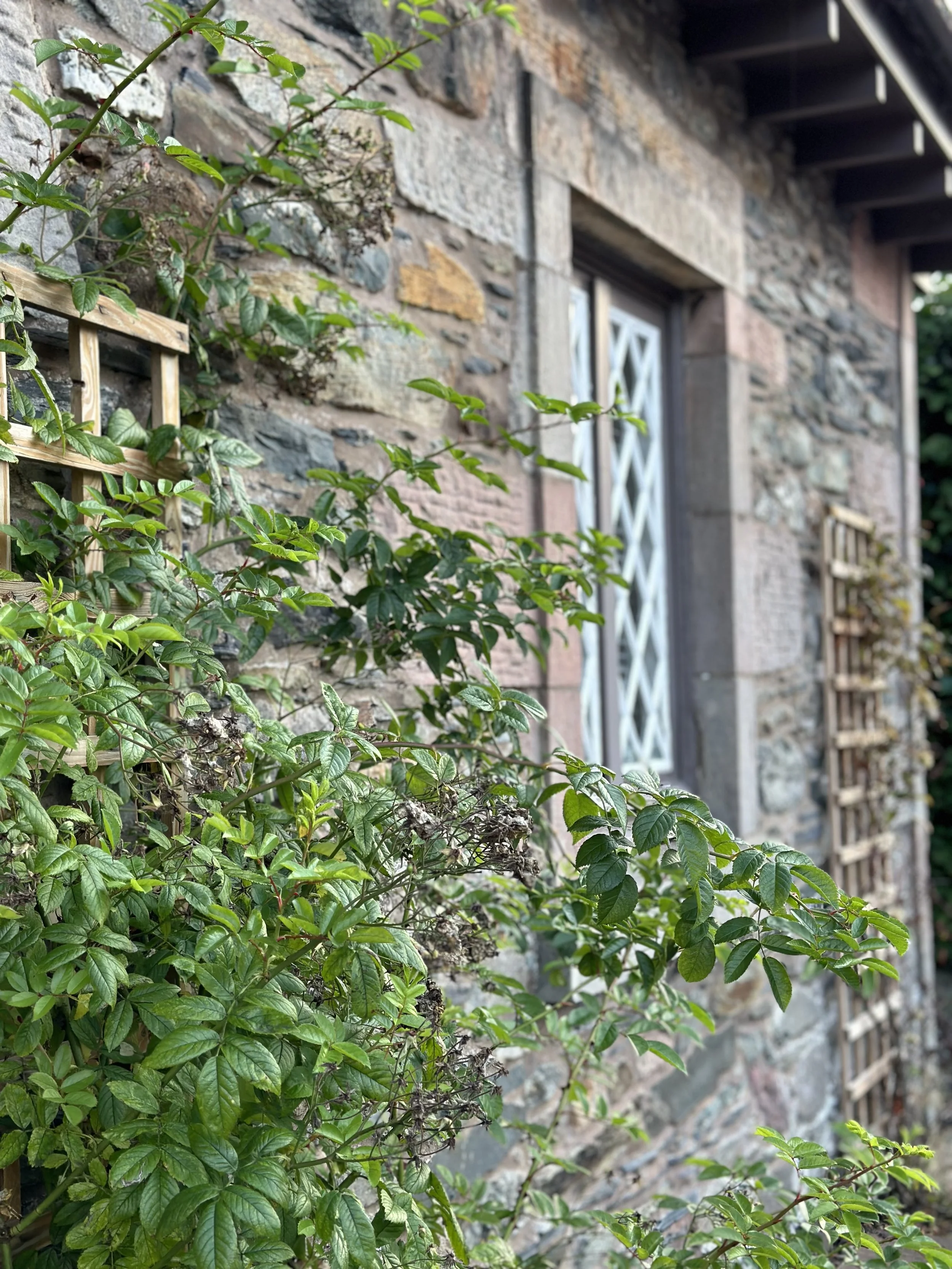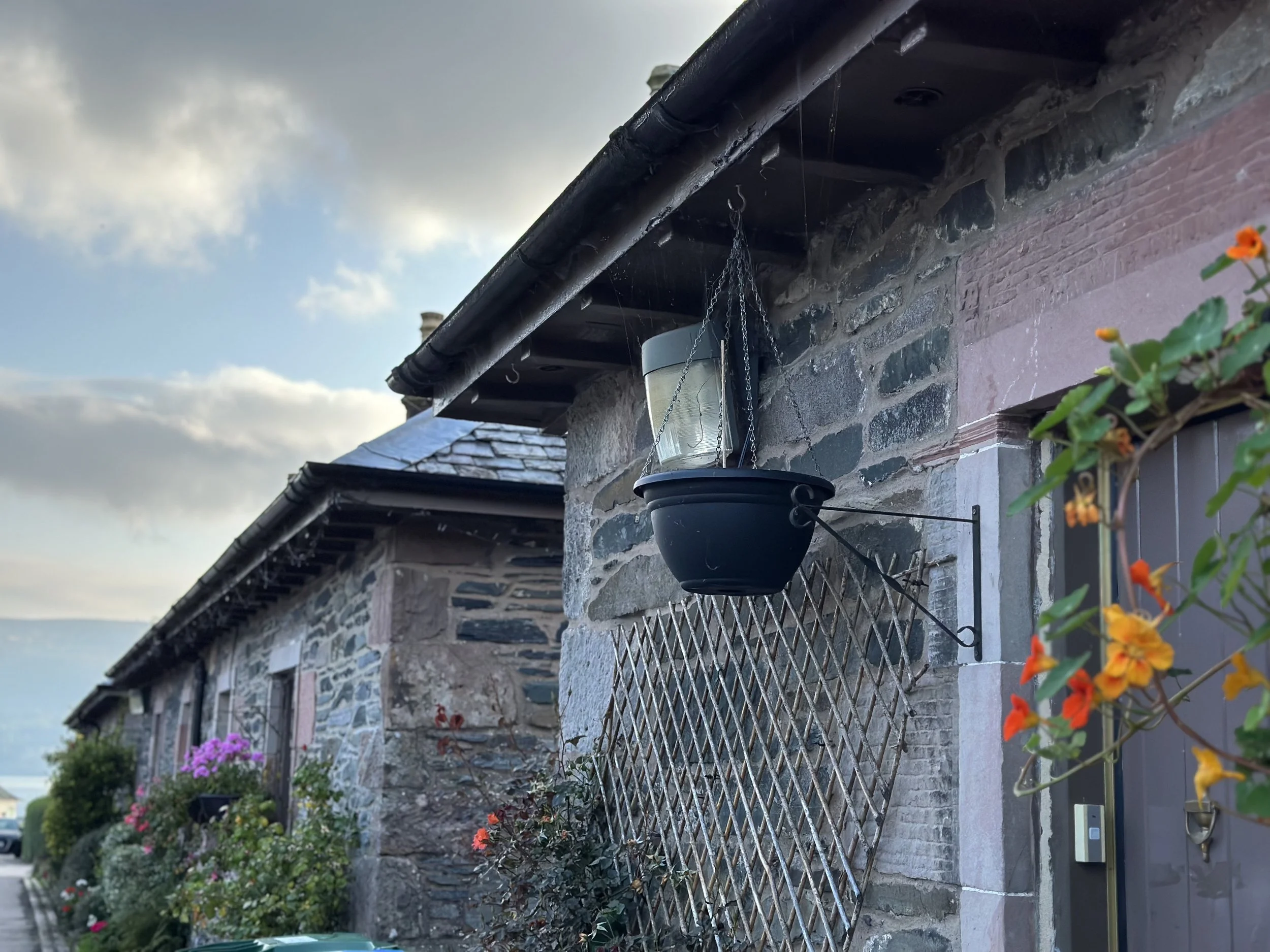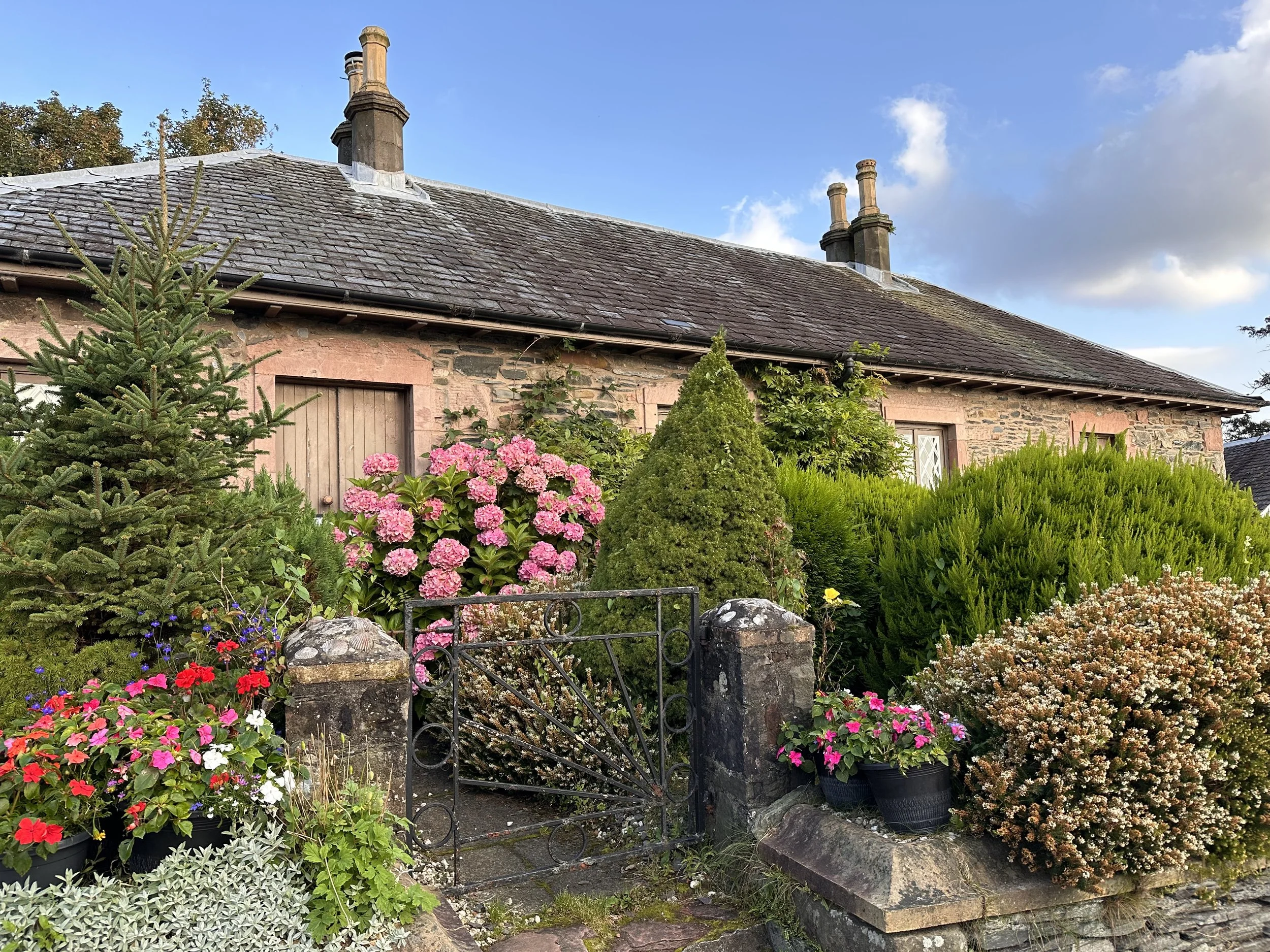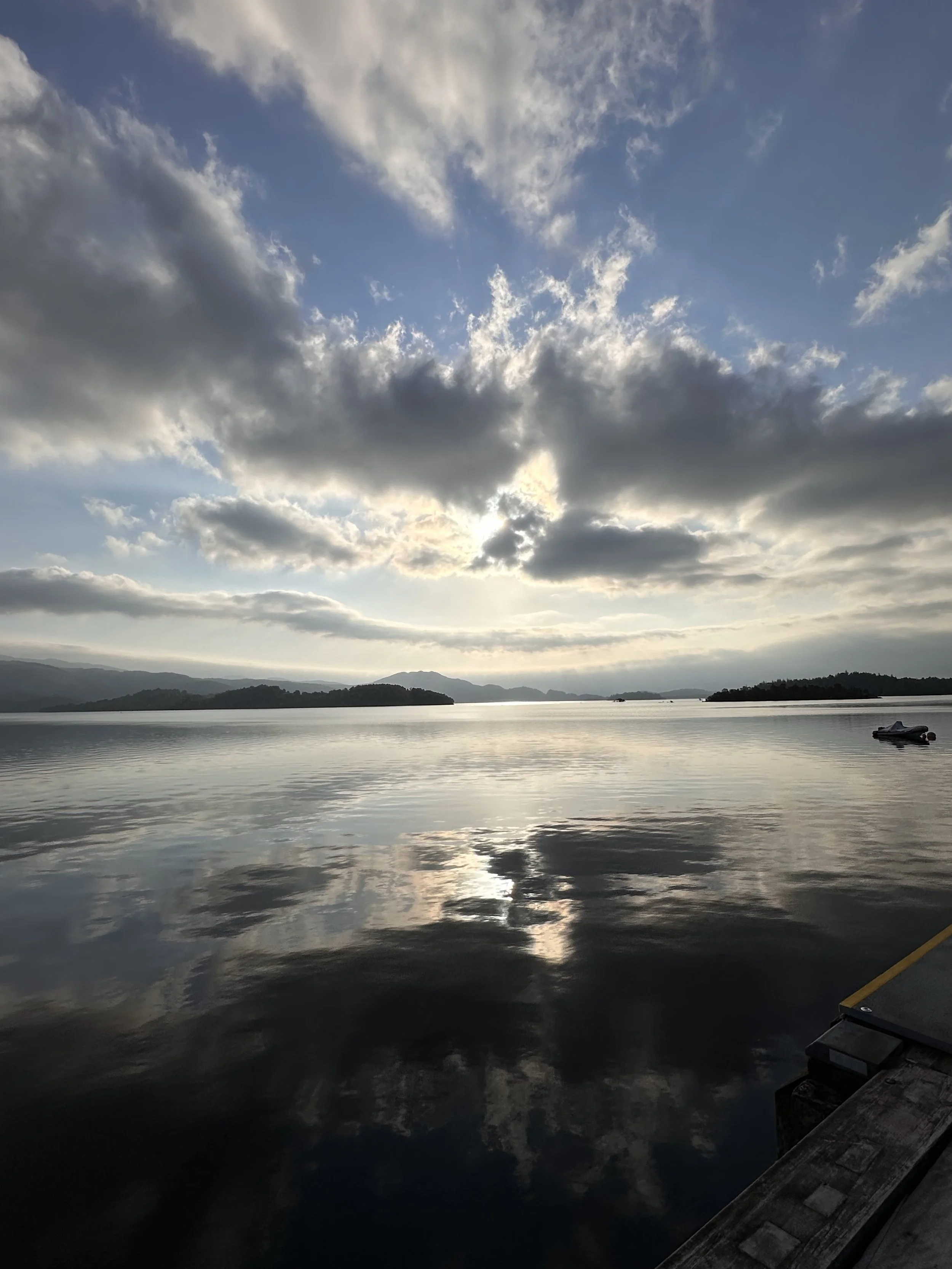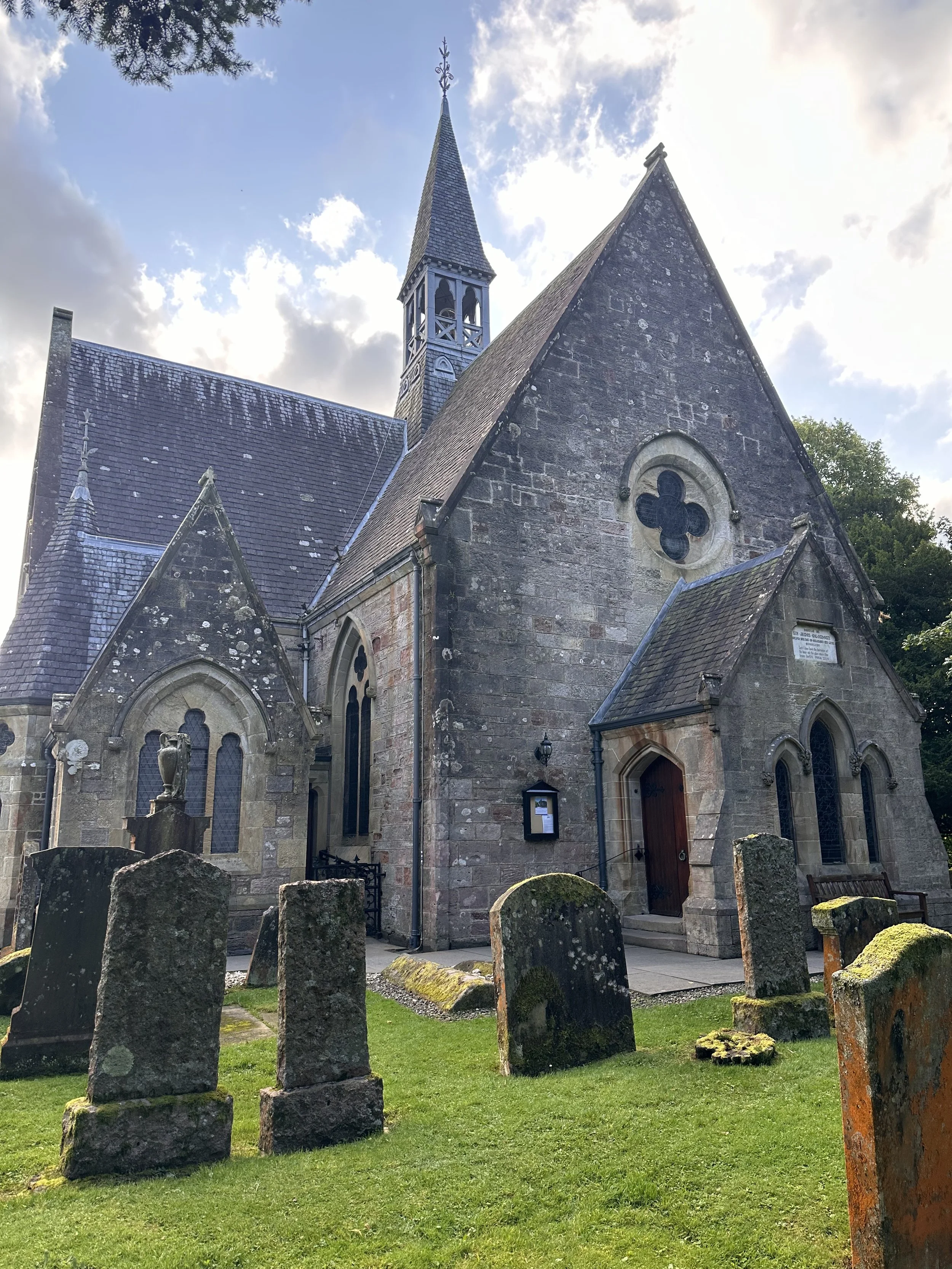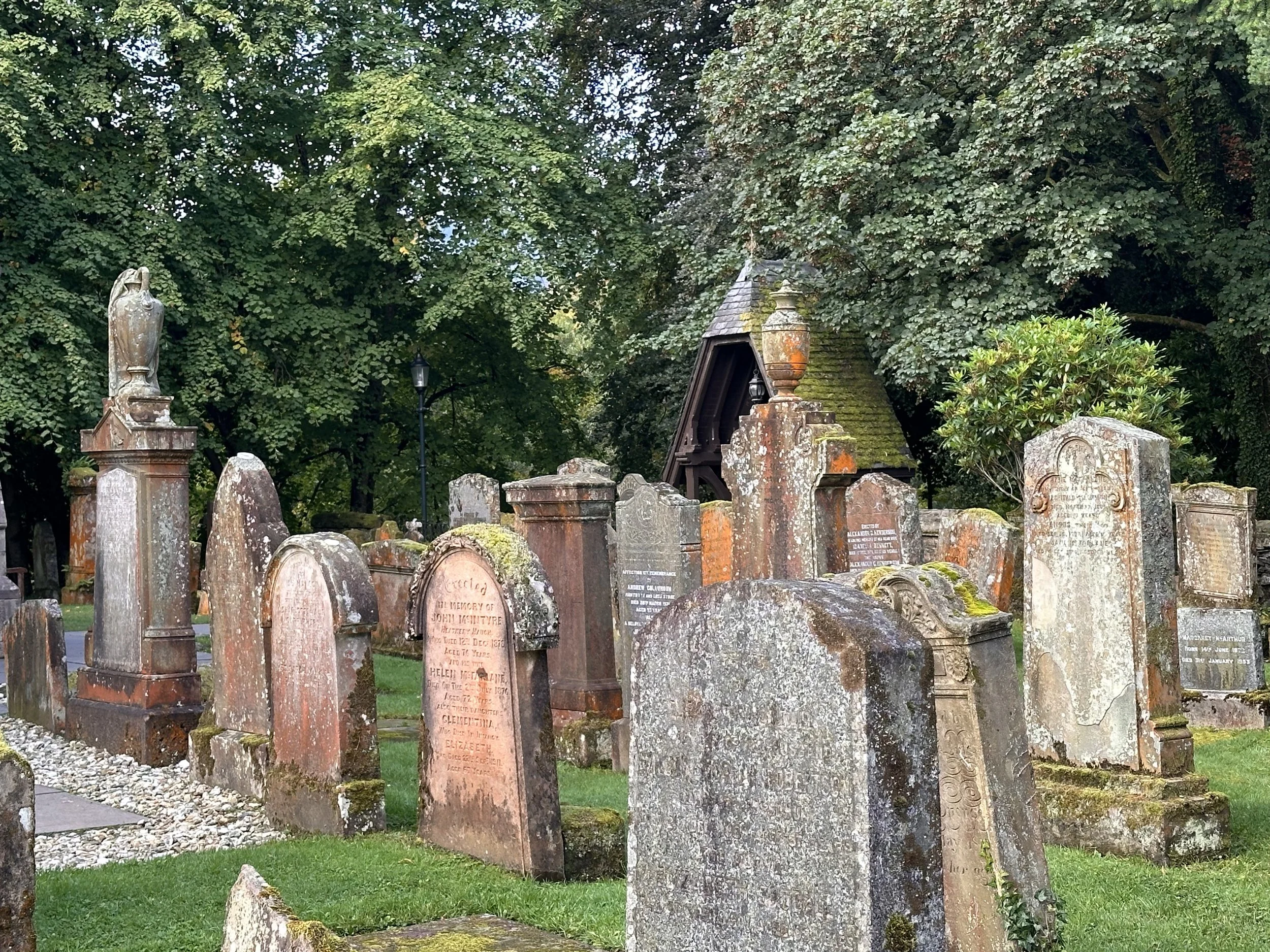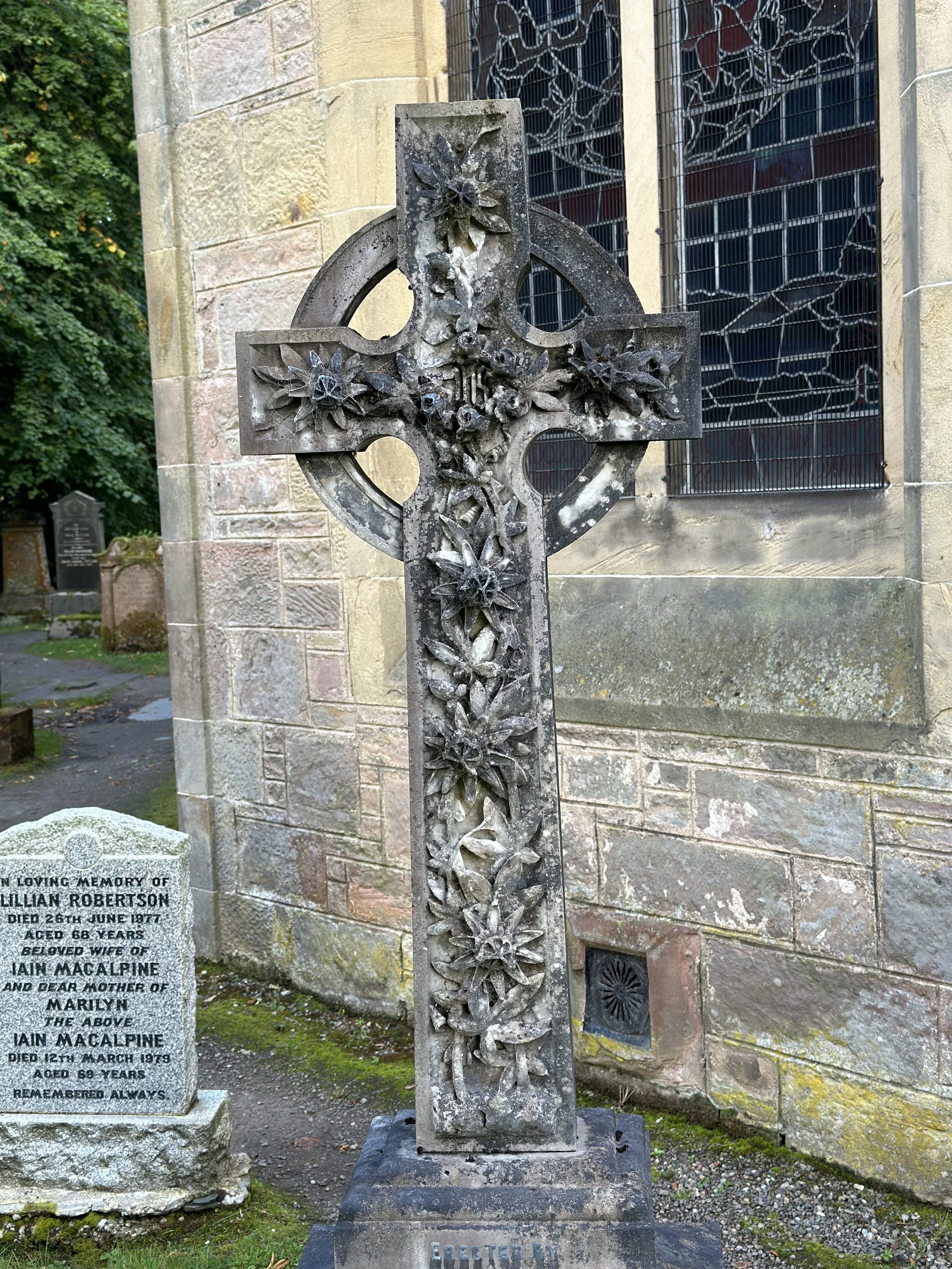Exploring Isle of Islay, Scotland
Isle of Islay is like being in another world. The sweeping hills that plunge into the lochs, the wildlife roaming free, the historic homes (both derelict and restored), and the history, itself, are enough to be swept away into its charm. Of course, however, people mainly come here to enjoy the whisky distilleries!
The below information is a complete guide of the best places to stay, the top rated places to dine and drink, whiskey experiences, and all there is to see and do. We’ve also included transportation tips, as well as a summary of the history of this picturesque isle!
Time needed in this isle: 3-4 nights
where to stay
the machrie
The Machrie is the only luxury resort on Islay and has the only golf course on the island as well. Our king-sized room overlooked the golf course and the bay with some of the most stunning sunset views one could hope for.
TIP: Ask reception for information on the walking path to get to the bay. It’s about a 1/2 mile walk in each direction and very much worth it!
other recommendations
where to dine & drink
18 Restaurant & Bar
Per their description, “Our passionate chefs have created menus that are locally sourced, where possible, and celebrate the very best Scotland has to offer. Across land, sea and air, Islay is brimming with local ingredients, ranging from seafood and game to freshly grown vegetables and herbs. So much of the produce we source is free-range and from small-scale farmers and suppliers on Islay in a bid to reduce food air miles, whilst supporting artisan businesses that ecologically manage the land.”
TIP: Start with a drink by the fire at the Stag Bar or on the outdoor terrace, overlooking the 18th green.
An Tigh Seinnse
A charming pub in a small fishing village, Portnahaven, serving mostly seafood dishes.
Bowmore Hotel Restaurant
Per their description, “The Bowmore Hotel is well know for it’s good food at great prices. Our chefs go that extra mile to provide enjoyable home-cooked meals that use only the finest quality ingredients many of which are sourced locally. Our extensive menu ensures that even the fussiest eaters wont be left hungry – or disappointing for that matter.”
NOTE: They are the top-rated restaurant on Islay!
Bridgend Restaurant & Katie's Bar
Using the finest local ingredients, the Hotel’s team of chefs enjoy creating seasonal menus that celebrate Islay’s exceptional produce, whether it be venison, lamb, and beef sourced from their Estate farm, or the freshest oysters, crab, and lobsters caught by Islay’s thriving community of local fishermen.
NOTE: They cater very well to gluten-free!
Ellen’s Wok
Chinese takeaway.
Islay Oyster Shed
It’s just as its name describes it - they sell oysters in a variety of ways. NOTE that it is a bit of a drive - closer towards the Kilnave Chapel - but from what we understand, is well worth the trip!
peatzeria
A pizzeria that makes not just regular pizza, but gluten-free as well (they also do gluten-free pasta, too).
The Balaclava Byre
The Balaclava Byre is a Restaurant and Farm Shop using local produce from Islay. They serve local lamb, venison, pork, beef and seafood from Islay, as well as local produce from Cornabus Farm and Nerabus Farm.
The Munchie Box
Serving a variety of hot and cold takeaway - they specialize in baked goods.
Whisky Bar
The Island of Islay is world famous for its Malt Whisky with each of the eight current distilleries on the Island producing its own unique style and flavor. In the Islay Hotel Whisky Bar, they have Malts from Port Ellen, Laphroaig, Lagavulin, Ardbeg, Bruichladdich, Bowmore, Bunnahabhain, Caol ila and the new distillery at Kilchoman.
whisky experiences
ardbeg
In 1815, John MacDougall takes out a license, establishing Ardbeg Distillery. 23 years later, in 1838, Thomas Buchanan purchase the distillery for £1,800 though John’s son, Alexander, continues to manage it. It continues to be managed by the MacDougall family for generations until Hiram Walker buys it in 1977 for £19,000. In the 1980s, like many other distilleries, it closed due to dwindling production and suffered until 1997 when they opened for full production. Since, then, it’s become one of the top-producing distillery in the world.
As you can see in the videos, our tour took us into the storehouse for our tasting, which was absolutely amazing. We sipped on whiskys straight from the barrel while learning more about the maturation process for the different collections they are currently aging. We also were shown the four stills they now have on the property, as well as the empty barrel storage facility and the filling facility.
TIP: Pay attention to the tour you book - they only give tours of the still house Monday-Friday.
Ardnahoe
A newer distillery in Islay, Ardnahoe, opened in April 2019 by the Laing family (who have 50 years experience in the whisky business), and was the first new whisky distillery to open on Islay in 15 years. While the distillery is young, it’s worth stopping by, especially for its views.
bowmore
Bowmore’s No. 1 Vaults are the oldest single malt maturation vaults in the world, clocking in at 240 years and counting. The distillery, itself, is the first licensed one in Islay and the second in Scotland. Just like many other distilleries, it fell on hard times not once, but three times - once in the late 1800s (economic depression), the 1940s (was commandeered by the RAF Coastal Command as an outpost), and again in the 1980s (when whisky consumption was on the decline). Today, you are able to not only tour the facilities, but can also stay in their hotel, and/or take advantage of their partnered Aston Martin experience.
Bruichladdich
Built in 1881 by the Harvey Brothers, Bruichladdich is located on the shore of Loch Indaal, on the Rinns of Islay, the westernmost part of the island. The Harveys were a dynastic whisky family that had owned two Glasgow distilleries since 1770. Using an inheritance, the brothers combined their talents to build a third distillery—Bruichladdich—designed by John, engineered by Robert, and financed by William and other family members. At the time, the distillery was a state-of-the-art design unlike Islay's older distilleries, which had developed from old farm buildings. It was built from stone from the sea shore and has a very efficient layout, built around a large, spacious courtyard.
It had its ups and downs, shutting down completely in 1995. It wasn’t until five years later that it was bought by private investors , dismantled, and reassembled just as it was used in its early days. To this day, no computers are used in production. Instead, a pool of skilled artisans pass on information, orally, and largely measure progress using dipsticks and simple flotation devices.
In 2012, Rémy Cointreau purchased the distillery for £58m. In 2023, the distillery ranked fourth in a Cask Connoisseur ranking of the most popular whisky distilleries.
Bunnahabhain
Founded in 1881, Bunnahabhain relied upon sea trade to get the materials they needed to create their distillery, as well as ship out the product. They remained a small distillery, due to shipment times and briefly closed in the 1930s. A decade later, a road was built making transport much easier for them. By 1963, they had two new large-capacity stills and 16 years later, released their first 12-year in to the world. Since then, they have continued to evolve and modernize to meet the larger demand.
Caol Ila
Since 1846, Caol Ila (pronounced “Cull Eela” - the Gaelic name for the Sound of Islay) has been producing whisky on the rugged eastern coast. While in changed hands a few times, it thrived under the guidance of many famous whiskey families in the area. In closed once during WWII and then reopened until 1972 when the distillery was demolished in favor of a new one.
In addition to being sold as a single malt, it is used heavily (around 95% of their production) in blends, such as Johnnie Walker's Black Label. Since 1999, the distillery has also produced a non-peated "highland spirit".
Kilchoman
Kilchoman is the only distillery that represents the revival of traditional farm distilling, standing alone as Islay’s only Single Farm Single Malt Scotch Whisky produced this way, and completely on one site.
The distillery began in 2005 and was the first to be built on Islay since 1908. The distillery uses barley grown on site at Rockside Farm and malted at the distillery, as well as malt from the Port Ellen maltings and releases separate bottlings depending on the source of the grain. It is one of six Scottish distilleries still working with traditional floor-maltings, and is unique in completing all parts of the whisky making process – growing barley, malting, distilling, maturing and bottling – on Islay.
Lagavulin
In 1816, John Johnston and Archibald Campbell Brooks constructed two distilleries on the site - one of which became Lagavulin and other absorbed by it. The distillery was run by John Johnston until 1835 when it was taken over by Alexander Graham who had his son, Walter Graham, be the distiller. Walter ran it until 1848 when he moved to Laphroaig at which point, it began changing hands to this day (with Diageo now owning it).
Lagavulin is known for its producer's use of a slow distillation speed and pear shaped pot stills. The two wash stills have a capacity of 2,900 US gal. and the two spirit stills of 3,300 US gal. each.
They are most recently known for their collaboration with Nick Offerman, who began work with them as. “Ron Swanson” - a meat and whisky-loving character on Parks and Rec”.
Laphroaig
In 1815, Donald and Alexander Johnston bought 1,000 acres of land for raising cattle. However, in order to raise them, you need to grow barley. When there’s an excess of barley, you use it to make whiskey… which they found to be far more profitable than farming, late in this same year.
Donald bought out his brother’s share in Laphroaig for £350, in 1837. Donald died to years later, leaving his family to manage the operations. By the late 19th century, things were not going all that great for the family. The sold nearly all of their production for Mackie and Co.’s blends that they didn’t have much left to sell on their own. To make matters worse, the two companies started to spite each other, Mackie and Co. going so far as to block Laprhoaig’s main water source, the Kilbride Stream (the courts made them undo it), then later took their head brewer. Interestingly, it became motivation for the Johnston family.
By the 1920s and 1930s, they were exporting their whisky all over the world. By the 1950s, they had a female owner, Bessie Williamson, who had a rare driving vision for the future of Laphroaig, including gradually selling the business.
Since these times, the distillery has continued to modernize and evolve into what it is today.
Looking for a tour guide?
Indulge in natural wonders, charming locales, and fine whiskies on a 4-day small-group tour of Isle of Islay. Travel to the Scottish Hebrides, where jagged peaks and white sand beaches set the stage for a centuries-old whisky-making tradition. Spend four days exploring the remote archipelago and visiting up to six distilleries such as Laphroaig and Ardbeg, and enjoy three evenings of relaxation at the 4-star Bowmore Distillery Cottages (Monday and Friday departures only).
To book, click here.
Other things to see & do
Historical tours
Carraig Fhada Lighthouse
Constructed in 1832 by Laird of Islay, Walter Frederick Campbell in memory of his wife, Lady Ellinor Campbell, this unusual lighthouse stands three-stories high and is the only one in Scotland to feature a square shape.
This keeper’s cottage is now a private home and is rarely open to the public however, you can still view it by boat or the grounds near it.
Dunyvaig castle
In the 12th century, a castle was built by Somerled, King of the Isles, on top of a fort, on a rocky promontory, jutting into Lagavulin Bay. From the 13th century, it was held by the Macdonalds, Somerled’s descendents, and remained passed down through the family until the 17th century, in 1615, when John Knox attempted to capture it. Even though the family succeeded in taking it back, in 1647, it was seized again but this time, destroyed. Today, it’s a ruin that can be seen by both land and water.
Lords of the Isles at Finlaggan
Finlaggan was the home of the MacDonald chiefs for almost 400 years, from the 12th to the 16th century. It was also the place the Lords of the Isles ruled the Western part of Scotland, from Kintyre to Lewis. They gained control from their Norse overlords, adopted their maritime skills and improved on them. They also met the kings from Scotland, England, and France on equal terms.
You can still walk the ruins today.
Museum of Islay Life
Opened in 1977, the Museum of Islay Life conserves and displays items representative of life in Islay over the past 12,000 years. It is housed in the former Kilchoman Free Church in Port Charlotte.
religious tours
Kilarrow Church
Built in 1767 and known as. “The Round Church”. the circular design was said to ensure that there were no corners in which the devil could hide. The roof is supported by a single massive central pillar.
Kildalton High Cross and church
The Kildalton church dates back to medieval times and was used regularly for service until the 18th century. Spend time looking around the Old Church and many of the carved medieval grave slabs in the graveyard or within the chapel.
Kildalton Cross
One of the finest, early Christian crosses in Scotland, the Kildalton Cross stands more than 8.5 feet tall and dates back to the first half of the 8th century. It is closely related to major crosses in Iona, St John’s, St Martin’s, and St Oran’s.
Kilnave Chapel and Cross
The Kilnave chapel has a bloody history, being the site of an atrocity committed on August 5, 1598 during the Battle of Traigh Ghruinneart (the Battle of Gruinart Beach). The background was the historical possession of Islay by Clan MacDonald, which in the 1590s, made it the property of the MacDonald clan chief Sir James MacDonald. Conflict arose because of the claim by Sir Lachlan Mor Maclean of Duart on Mull, who was Sir James MacDonald's uncle. A battle ensued - over 300 men lost their lives in and around the chapel.
The Kilnave Cross
The Kilnave Cross is thought to have been erected on the site in the late 700s, and has been compared to the Kildalton Cross at the other end of the island. The Kildalton Cross is similar in size, but is a "ringed" cross (having a ring linking the arms with the head and base) while the Kilnave Cross is believed to have been ringless.
unique experiences
Cultoon Stone Circle
Cultoon Stone Circle lies in moorland to the west of the road which links Portnahaven with Kilchiaran in the west of the Rhinns of Islay, a quarter-mile (0.4 km) southwest of Cultoon. Only 3 of a total of 15 stones are upright. These are arranged in an oval and the tallest stone is 2m (6½ feet) in height. The site was excavated in 1974-75 and it was determined that while holes had been dug for the remaining stones, these were never erected. Having evidence of an incomplete prehistoric structure is unusual. Radiocarbon dates of charcoal reveal the site was active around 1055 BC.
Golf at the Machrie
The Machrie is an iconic Scottish championship links stretching to over 7000 yards from the back tees.. An original Willie Campbell design dating back to 1891, it is now a masterpiece redesigned by D.J. Russell and reopened in 2018. Among many recent accolades, it ranks inside the top 50 UK&I and top 20 in Scotland!
Islay Woolen Mill
First established in 1883 and later resurrected in 1981, via the new owners, Gordon and Sheila Covell, the Islay Woolen Mill has become a major source of wool and tweed products all over the world. In fact, their tartans became popular for use in Hollywood movies, such as Braveheart and Rob Roy.
TIP: Pick up any number of their woolen sweaters, blankets, scarves, and caps. They also do tailored blazers and a variety of other items. HOWEVER, note that their products may have a barn or musty scent. They are stored in a centuries-old historic mill and this smell is completely normal. Simply take the items out of their packaging and let them air out for a couple of days.
Singing Sands
The story goes that when you rub the soles of your shoes over the Singing Sands Beach you can hear a singing sound - this is in thanks to the unique composition and size of the sands in Islay. Under the right conditions, the sound can be akin to an airplane flying overhead. It’s a natural phenomenon that can happen periodically, so don’t be disappointed if you don’t hear it on your first try!
HOW TO GET THERE: You can find the Singing Sands beach south from the square lighthouse at Carraig Fhada, opposite Port Ellen. It’s also clearly visible from the ferry when you arrive in Port Ellen. To get to this beach, follow “The Oa” when you’re in Port Ellen - it’s the road next to Port Ellen Maltings. Follow it and go left again towards the Oa. Then, after 300 yards, take another left. As there is no parking nearby, the last bit of the track is a private road leading the lighthouse, it’s best to park here or opposite the Kilnaughton Graveyard and ruined chapel.
Getting to the Singing Sands is easy, just follow the track along the shoreline towards the lighthouse. When the track goes left towards the houses and lighthouse, you’ll see a sign “Singing Sands” on your right. A small path leads up the hill and from there it’s a short walk to the beach.
Standing Stones
There are six standing stones in total, all of which are prehistoric, though no one knows why they exist or what they were used for. You’ll find them overlooking the most stunning locations, from glorious glens to beautiful beaches. Use the map in the link to learn more and follow their map!
Walking Tours
Islay House Square
Built by Walter Campbell in the 1790s, and originally used to house servants and workshops, Islay House Square is now a thriving hub of local businesses, including the Islay Ales brewery, the Islay Quilters, Nerabus Gin, two photographers, a carpentry workshop, Eilzabeth Sykes' batik store, MA MacKinnons marmalade shop, The White Room gift shop, and a launderette.
Machir Bay (Kilchoman)
Machir Bay is a small bay on the Western coast of the isle of Islay in the Inner Hebrides of Scotland. It is one of the features of the Rhinns of Islay and lies within a few hundred metres of the small settlement of Kilchoman. To the north, the cape of Coul Point separates Machir Bay from Saligo Bay. Kilchiaran Bay lies immediately to the south.
It is said to be the most beautiful beach in Islay.
NOTE: There is some remnants left of a wreck from the 1840s, from an old steam ship called “Patti” (as you can see in one of the pics in the carousel). We’re told that depending on the tide and how the sands shift, you can see the entire outline of the wreck.
Port Ellen
Port Ellen is a small town on the island of Islay, in Argyll. The town is named after the wife of its founder, Walter Frederick Campbell.
Port Ellen is built around Leodamais Bay, Islay's main deep water harbor. It is the largest town on Islay, only slightly larger than Bowmore, and provides the main ferry connection between Islay and the mainland, at Kennacraig.
FUN FACT: The Port Ellen Distillery was first established in the 1820s and ceased production of Scotch whisky in 1983. The large malting continues to produce for the majority of the distilleries on Islay.
Soldier’s Rock
This rugged walk explores the moorland and deserted villages west of Kintra en route to a dramatic corner of the coastline with a fine sea-stack. The return keeps high above the sea before a very soggy descent through scrub.
HOW TO GET THERE: From Kintra, head south over the track along the shore and follow it slightly uphill while passing a few gates. After the first ruined buildings, turn sharp right and walk uphill. Once over the hill, follow the glen over the faint track through the abandoned township of Grasdail, but stay on the same altitude. In the distance, left from the burn, is a conical hill and to the right is Soldiers Rock. Return to Kintra by walking back to Grasdail, and then follow the contours of the hill as you head back to meet the track you started from. On your return walk you need to cross some burns and fences.
village of Portnahaven
Founded by Walter Campbell of Shawfield after he purchased the Sunderland estate in 1788, the town was further developed in the 1820s by his son, Captain Walter Campbell of Foreland and Sunderland.
The Portnahaven Parish Church was erected in 1828 as a Telford Parliamentary church to the designs of Thomas Telford and the architect William Thomson.
Portnahaven is served by a church, one shop (which is also a post office), and a public house, An Tigh Seinnse. The harbor around which the village is built provides the opportunity to observe grey seals at close quarters. The village of Port Wemyss is located just to the south of Portnahaven.
In 1991, it had a population of 150.
HOW TO GET THERE: The village is located at the southern tip of the Rinns at the southern end of the A847 road. The A847 follows the coast from Portnahaven to Port Charlotte and Bridgend.
how to get around
Driving to ferry terminal from Glasgow
If you are planning on driving to Islay, you will need to take a ferry to get there. To get the ferry from Glasgow to Islay, you need to head to the west coast of Scotland and the Port of Kennacraig on West Loch Tarbert - it’s a 2 1/2 hour drive.
Stop in Luss
If you leave around 8am for your 1pm ferry, you will have plenty of time to stop in Luss, which is about an hour from Glasgow. It’s a charming little seaside village in Argyll and Bute on the west bank of Loch Lomond. The village is within the Loch Lomond and The Trossachs National Park. TIP: It is best wandered in the morning before the tour buses show up at 9:00am.
The ferry
The cost for the ferry (if you are taking a car) is £36.70 each way. You must book tickets well in advance as they only have so many vehicle slots. We booked ours four months in advance.
NOTE: There are two ports on Islay: Port Ellen and Port Askaig. Both are a couple hours’ ride by ferry, so it really depends on which part of Islay you are staying on.
TIP: CalMac will ask for your vehicle registration details when booking your vehicle on the ferry. If you are renting a car/don't know which vehicle you will use, select the 'registration unknown' option. They will still ask for the make + model of the vehicle but these are not mandatory fields and can be left blank.
Flying TO ISLAY
The more expensive way to go is to take a short flight from Edinburgh to Glasgow. Loganair operates flights from both of these airports to Islay, and takes about 30 minutes to get to the island. For more information, go to https://www.loganair.co.uk .
TAXIS IN ISLAY
While there are many taxi companies, they are actually incredibly hard to book unless you are planning on doing a full-day whisky tour, THEN, it’s easy to book one. Otherwise, you are better off renting a car to get around as they will not book for a one distillery or point-of-interest stop.
a history summary
6th century AD - Islay, along with much of the nearby mainland and adjacent islands, lay within the Gaelic kingdom of Dál Riata with strong links to Ireland.
627 AD - The son of a king of the Irish Uí Chóelbad, a branch of the Dál nAraidi kingdom of Ulster was killed on Islay at the unidentified location of Ard-Corann by a warrior in an army led by King Connad Cerr of the Corcu Réti.
9th century - 13th century - Arrival of Scandinavian settlers on the western seaboard of the mainland. While Dál Riata was destroyed, the language was still predominately Gaelic. Norse settlers established the Kingdom of the Isles, which became part of the crown of Norway for four centuries. Godred Crovan became the ruler of the “sea kingdom”. By the end of the 13th century, Islay was part of the crown of Britain.
14th century - Lands began being redistributed through marriages, including Amy of Garmoran (of the MacDonald clan) marrying her cousin, John of Islay, who claimed himself “Lord of the Isles” - a title that was claimed by generations of MacDonalds.
15th century - Islay received its charter and John MacDonald II, struck an alliance with Edward IV of England under terms of the Treaty of Ardtornish-Westminster with the goal of conquering Scotland. MacDonald was compelled to forfeit his estates and titles to James IV of Scotland. His lands became part of Scotland, rather than a crown dependency.
16th century - James V sent gunners to garrison forts in Islay in 1540 because Clan MacDonald of Dunnyveg's holdings in Islay were restored. Why was this important? Because the MacLeans being granted Dunyvaig Castle by king James and the MacDonalds believed it belonged to them again, causing a massive feud. It didn’t end well for the MacLeans by the end of the century as they were kicked out by force.
17th century - After the 100 years prior, the MacDonalds were quickly becoming unpopular, especially when they tried to pick a fight with the Irish branch of the MacLeans. The Scottish-English crown had to step in and subdue them and asked Sir John Campbell of Cawdor to step in and take care of it, in exchange for the Isle of Islay. It took nearly 30 years to accomplish this with the penultimate moment being Dunyvaig Castle destroyed. It was 1677 when the Campbells finally built Islay House at Bridgend to be their principal, and unfortified, island residence.
18th century - By the beginning of this century, Islay was nearly all farming communities. When John Campbell died, he passed Islay to his son however, following the Jacobite insurrections, the Campbell’s power was reduced to “landlord”.
19th century - Transportation improvement, namely roads, canals, piers, and Port Askaig were all built for easier transport of farming goods. It caused a 280% jump in population. However, in 1853, Islay was sold to James Morrison of Berkshire which coincided with a shift in farming practices, resulting in a 50% loss of that new population.
20th century - With these farming practices continuing to change, many people moved to Canada and the United States, resulting in less than 4,000 people living on Islay. It was almost a blessing, given that in WWI, Islay saw warships sink to the bottom of Mull Oa and in WWII, RAF built an airstrip (which is now a commercial air strip) in Glenegedale, a flying boat crew built a base off of Bowmore, and a radar station was built on Kilchiaran.
Today - Nearly 60,000 people tour Islay each year, mainly for the whisky distilleries dotted all over Islay, as well as the fresh, peaceful atmosphere Islay provides.
